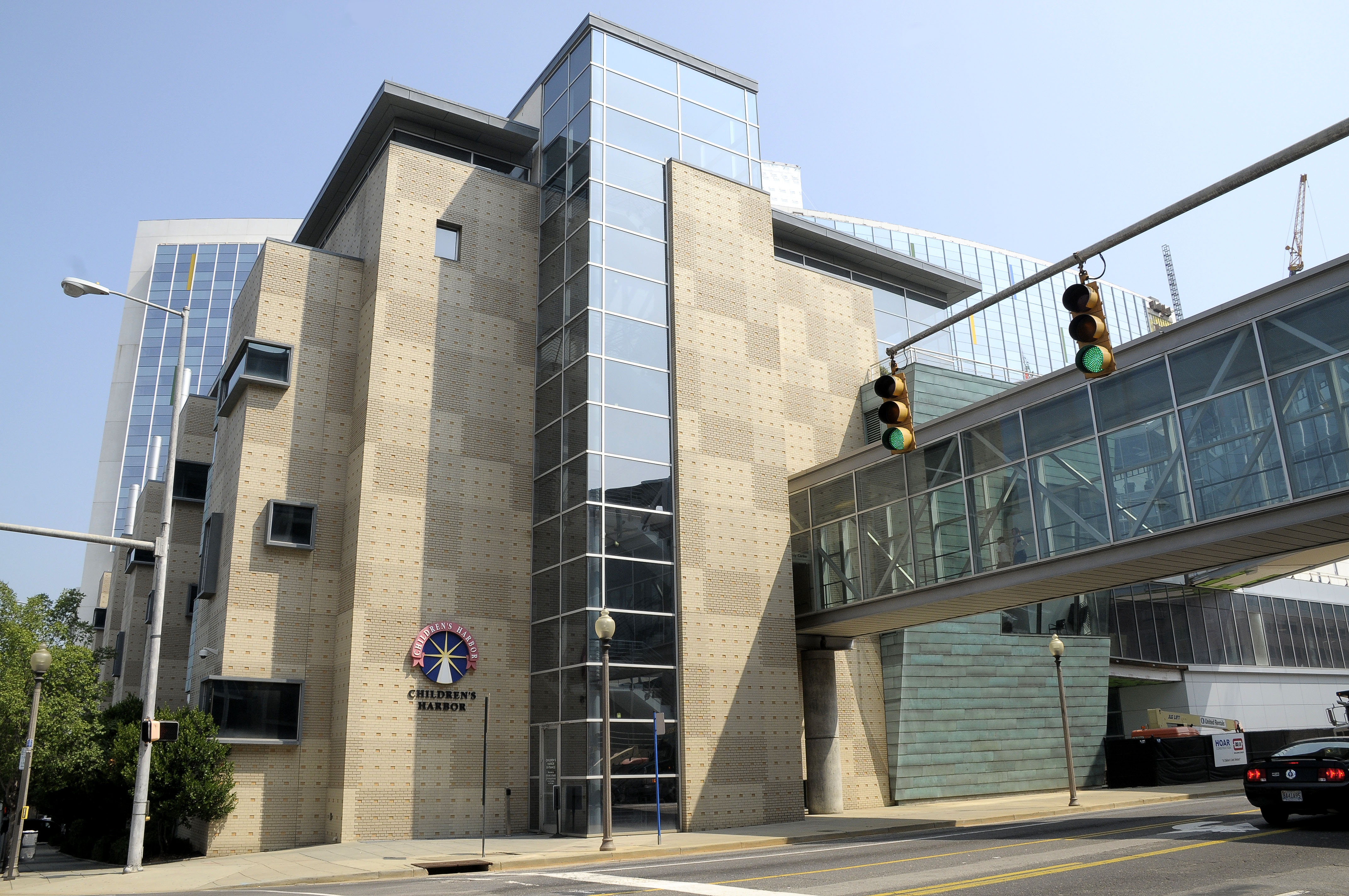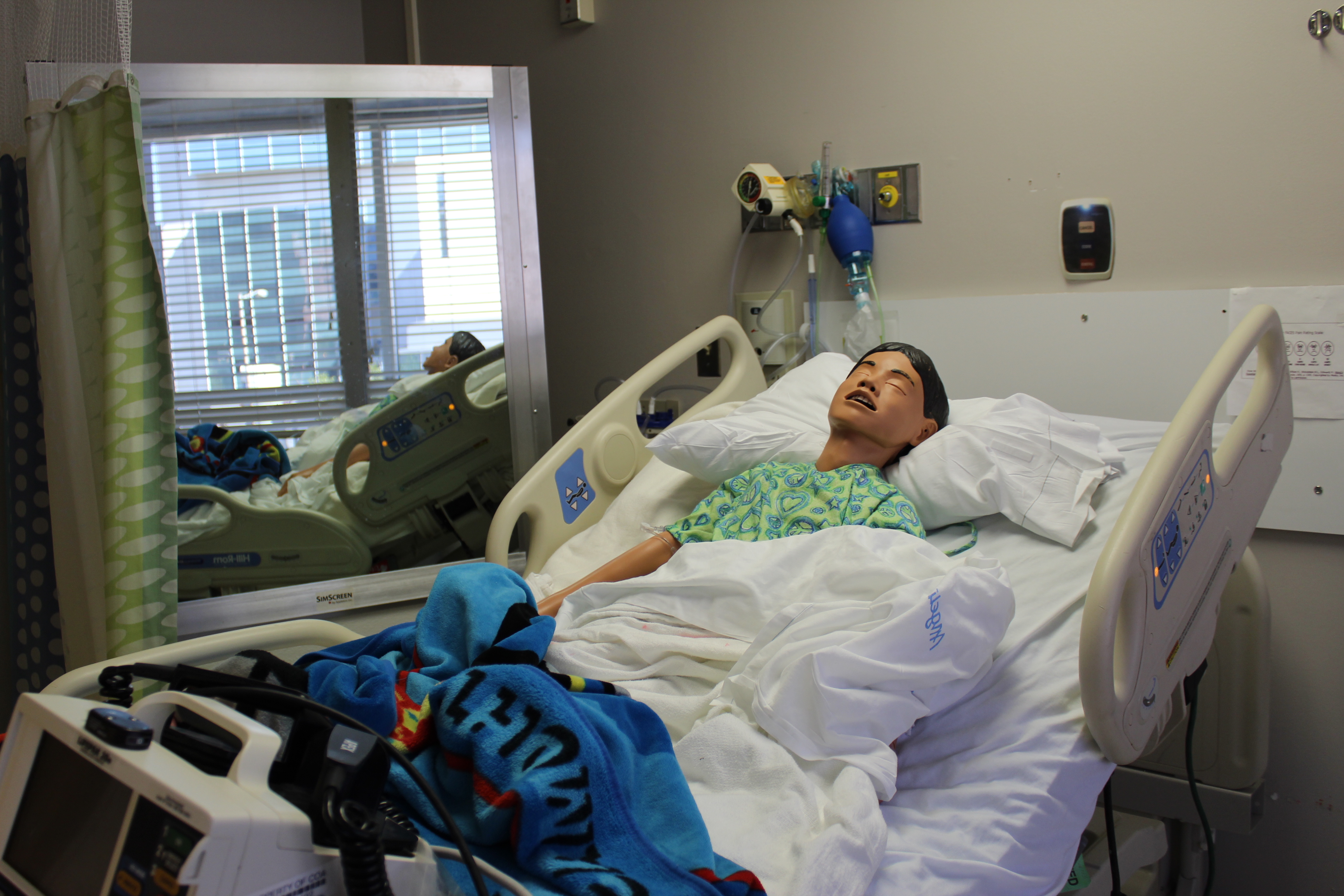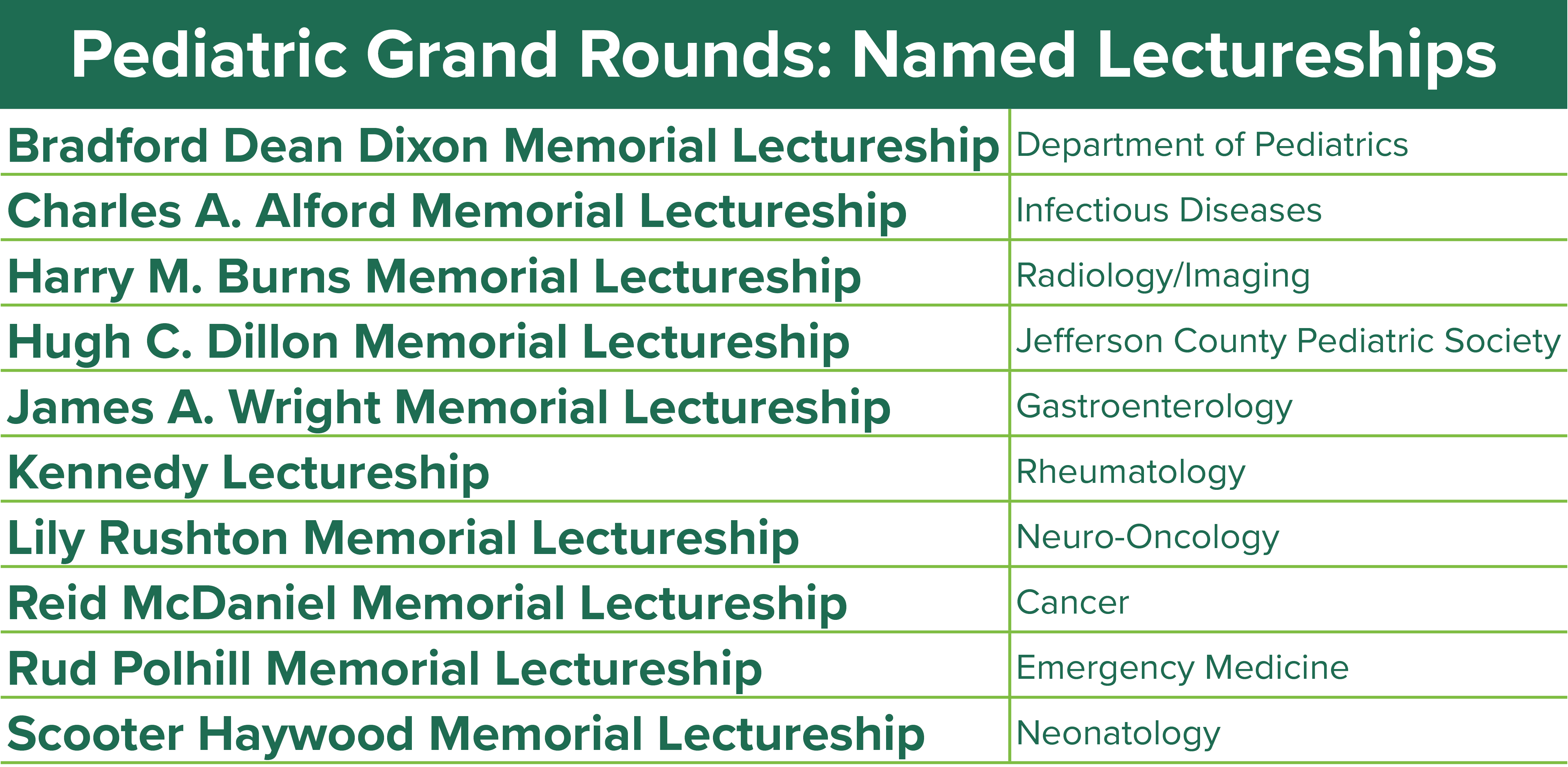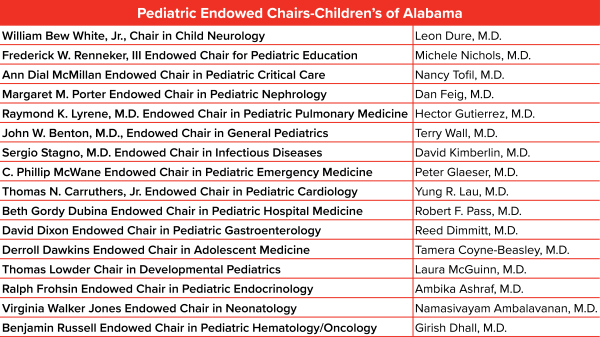The Evolution of Medical Education in Alabama
Medical education in Alabama began in 1852 and has evolved and changed to what we know today. In 1969, the Medical College of Alabama became the University of Alabama School of Medicine, the same year the University of Alabama in Birmingham (UAB) was granted administrative independence. In 1984, UAB’s name was changed from University of Alabama in Birmingham to the University of Alabama at Birmingham.
- 1852-First Medical School in Alabama
- 1859-Josiah Nott Founds the Medical College of Alabama
- 1894-Birmingham Medical College is Founded
- 1920- Early Medical Schools Close and 2 Year Medical School in Tuscaloosa is Established
- Mid-1930s- Birmingham's Expansion Leads to the Building of Jefferson Hospital
- 1943- Governor Chauncey Sparks Supports the Jones Bill to Establish a 4 Year Medical School in Birmingham
- 1943-University Hospital is Established
- 1944-Roy R. Kracke Becomes First Dean of the Medical School
- 1948- Joseph F. Volker Becomes Dean of the Dental School
- Dean's of the Medical School
-
1852-First Medical School in Alabama
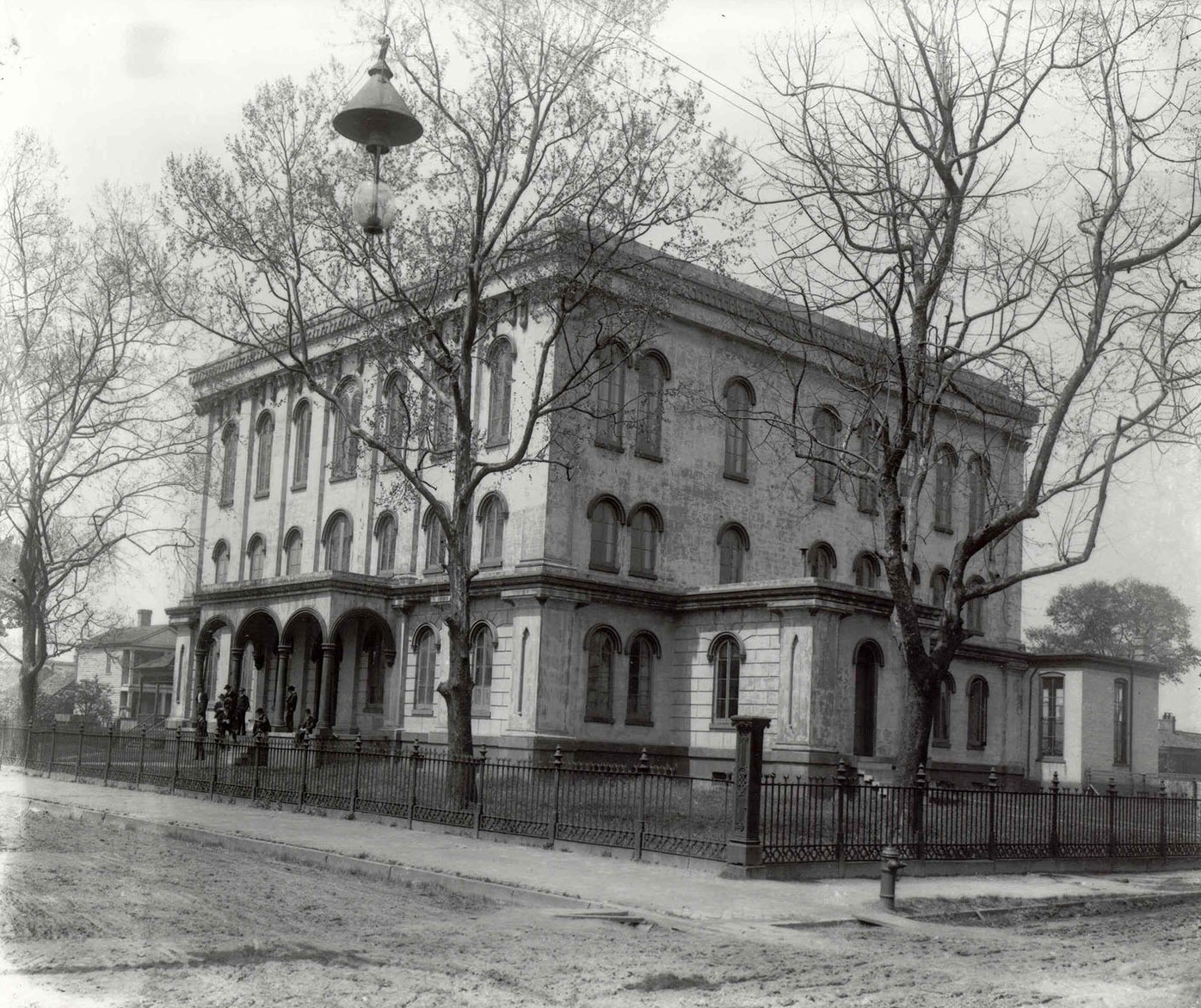
Photo credit: UAB Archive
The first medical school in Alabama was founded in Dadeville in 1852 by Dr. P. M. Shepard. The school was organized along a traditional European curriculum but permanently closed in 1861 after the death of Dr. Shepard and the start of the Civil War.
-
1859-Josiah Nott Founds the Medical College of Alabama

Photo credit: UAB Archive
In 1859, Dr. Josiah Nott, a European trained surgeon, founded the Medical College of Alabama in Mobile. However, in 1861 with the beginning of the Civil War, the school closed as most of the students and faculty joined the Confederate forces. The school resumed its activities in 1868 but was poorly supported. In 1910, Abraham Flexner, an American educator best known for his role in the 20th century reform of medical and higher education, issued an adverse review of the institution and the school eventually closed in 1920 due to dwindling applications.
-
1894-Birmingham Medical College is Founded
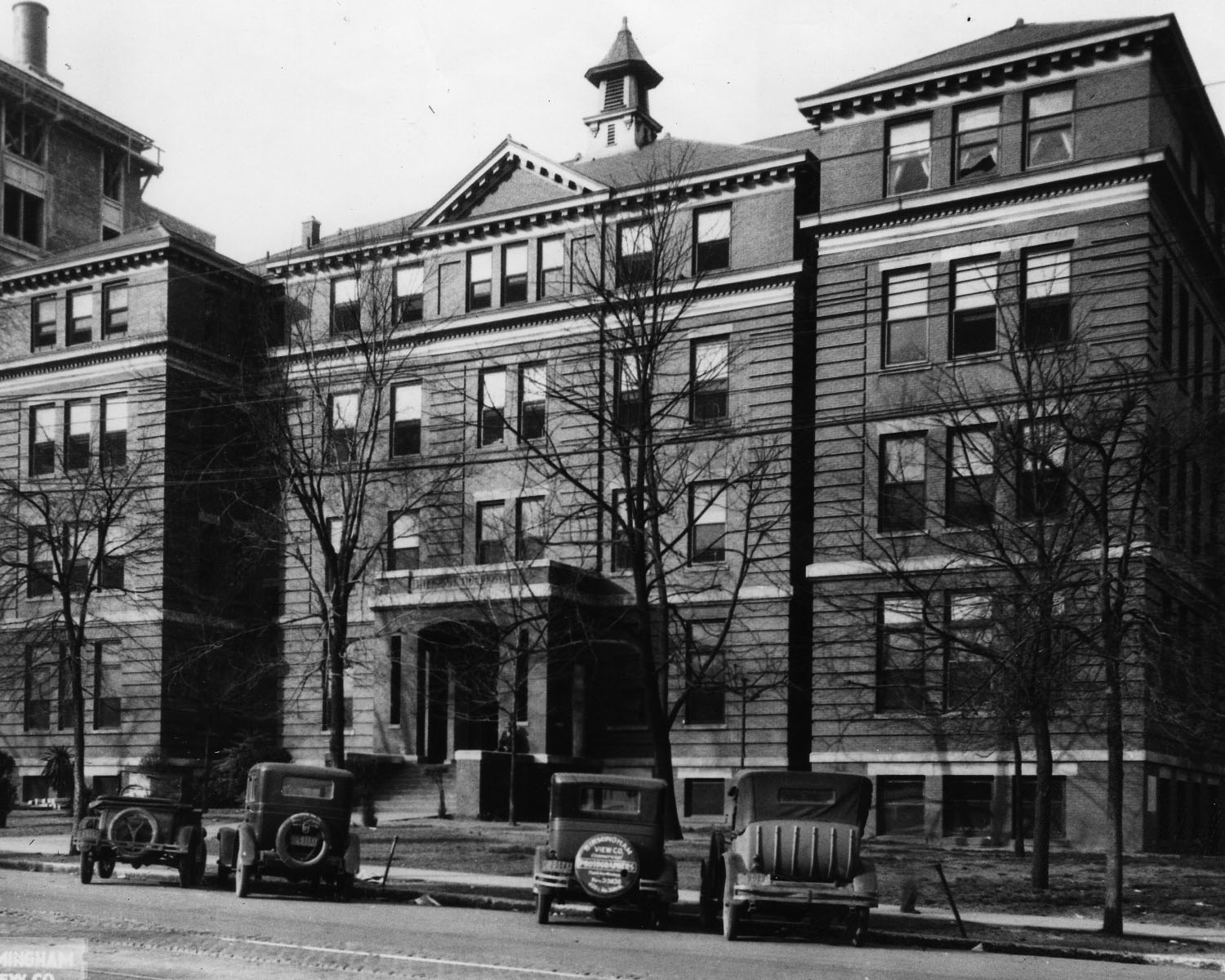
Photo credit: UAB Archive
|In 1894, the Birmingham Medical College was founded as a separate school and soon occupied the Hillman Hospital, a structure that still stands at the corner of 20th Street South and 6th Avenue and is now generally referred to as the “Old Hillman Building”. Birmingham as a city had been established in 1871 and experienced rapid growth with the development of mining and forging operations. Civic leaders recognized the need for a hospital to care for victims of hazardous working conditions and the large number of immigrants living in the city. The result of their persuasion was construction of the Hillman Hospital which opened its doors in 1920.
The Birmingham Medical College had no association with the University of Alabama until a feud erupted between Birmingham and Mobile about the location of the state’s medical college. As a compromise, the Birmingham Medical College became the University Graduate School of Medicine. This arrangement lasted only two years, as the Flexner Report pointed to many deficiencies, including the lack of academic high school prerequisites for admission and the poorly equipped profit-making college.
-
1920- Early Medical Schools Close and 2 Year Medical School in Tuscaloosa is Established
The Flexner Report recommended that the State of Alabama close both the Birmingham and Mobile schools and open a two-year school in Tuscaloosa; this occurred in 1920, 10 years after the report was published. The report also advised the State of Alabama to open a full-fledged medical school in Birmingham.
In 1920, the Mobile school closed and its equipment was transferred to the University of Alabama in Tuscaloosa, where conditions were not much better. Students could obtain only their first two years of medical training in Alabama. Then, after the completion of those two years, they were forced to migrate to other states to complete their education. Sadly, the residents of other states had priority for admission, precluding the acceptance of many Alabama students. This situation led to a drain of medical students and practicing physicians in the state. As complaints and pressure mounted, the Medical Association of the State of Alabama (MASA) appointed a committee to establish a four-year medical college in the state. -
Mid-1930s- Birmingham's Expansion Leads to the Building of Jefferson Hospital
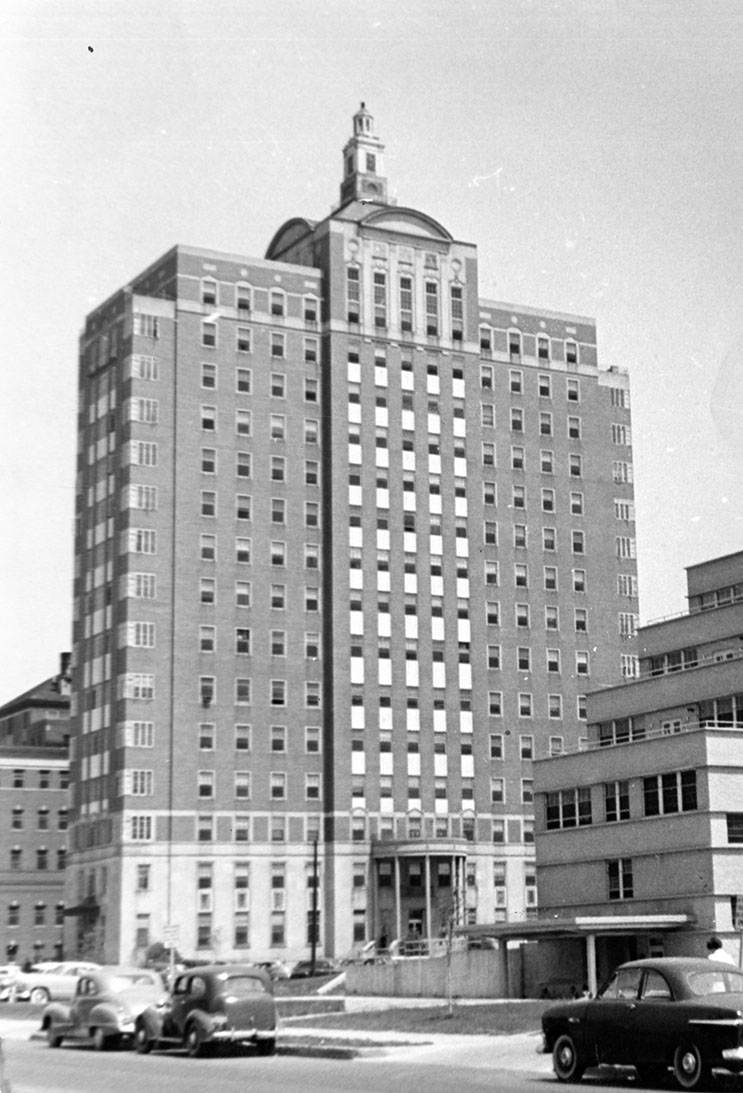
Photo credit: UAB Archive
Birmingham continued to expand and grow rapidly and the Hillman Hospital became inadequate. In the middle 1930’s, construction began on a modest seven story annex to Hillman Hospital. By 1938, the plans were expanded to build a 16 story hospital that the county commission subsequently named Jefferson Hospital, now the landmark building of today’s medical center.
-
1943- Governor Chauncey Sparks Supports the Jones Bill to Establish a 4 Year Medical School in Birmingham

Photo credit: UAB Archive
In 1943, Governor Chauncey Sparks, in his inaugural address, announced his intention to establish a four-year medical school. The governor appointed a building commission, with himself as chairman, to select the location for the school. After careful deliberation and numerous public hearings, the commission voted in 1944 in favor of Birmingham as “no other city could rival Birmingham’s offer of the Jefferson-Hillman Hospital Complex”. Other factors in favor of Birmingham were its central location in the state and the strong and growing business community capable of lending support. Also, the city enjoyed a sophisticated level of health care with some physicians achieving local and national prominence as practitioners and leaders of professional organizations.
With the strong support of Governor Sparks, the legislature approved the Jones Bill in 1943 establishing a four-year school in Birmingham under the Board of Trustees of the University of Alabama. The medical school was transferred from Tuscaloosa to Birmingham and expanded from a two to four-year institution.
-
1943-University Hospital is Established
Photo credit: UAB Archive
After the passing of the Jones Bill established Birmigham as the location for a four-year medical school, Jefferson County obtained a 99-year lease of the Hillman and Jefferson Hospitals for the University. These entities merged to become University Hospitals, the teaching facility for the new school.
-
1944-Roy R. Kracke Becomes First Dean of the Medical School
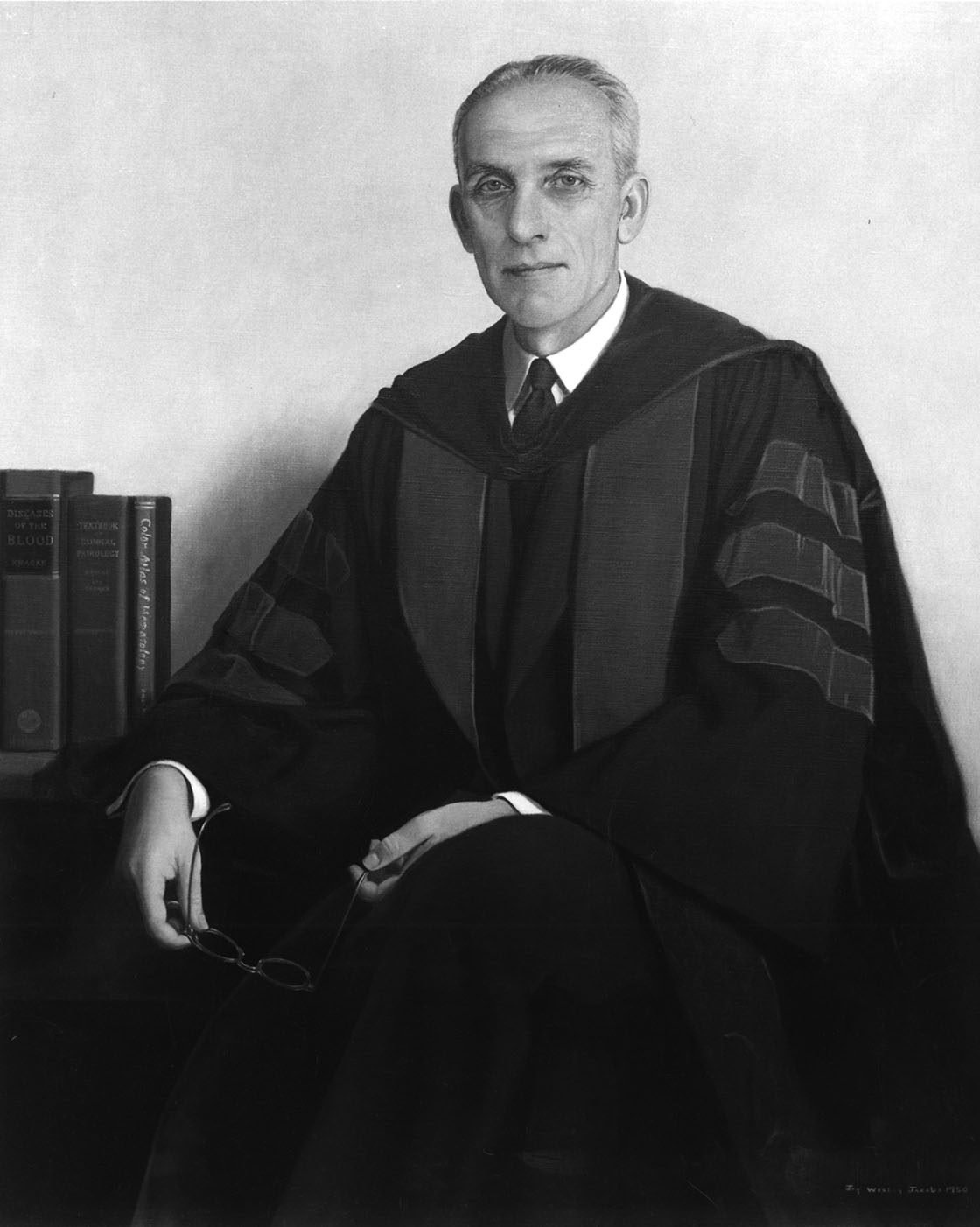
Photo credit: UAB Archive
In August of 1944, Dr. Roy R. Kracke, an Alabama native, was recruited from Emory University to become the first dean of the new medical school of the University of Alabama, a position he held until his death in 1950.
All the basic science and clinical departments of the school were established in 1945. In October of that year, classes for freshman medical students began at the new, four-year Medical College of Alabama.
In the ensuing 35 years, training in other health professions was expanded to include the following schools: School of Dentistry in 1948, School of Nursing in 1967, School of Allied Health Professions in 1969, School of Optometry in 1969 and School of Public Health in 1980.
-
1948- Joseph F. Volker Becomes Dean of the Dental School
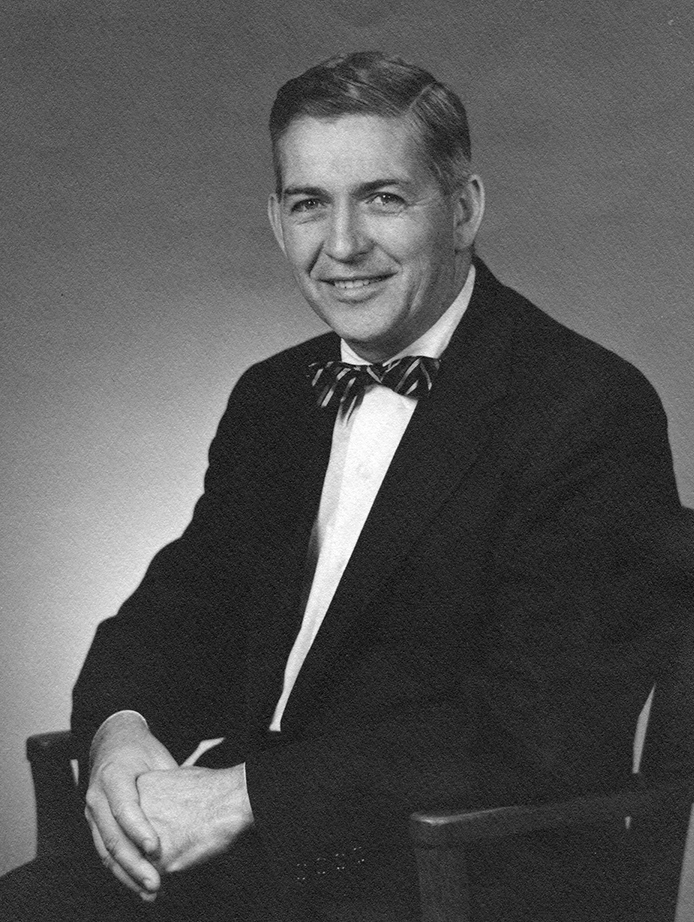
Photo credit: UAB Archive
The first dean of the School of Dentistry was Joseph F. Volker, D.D.S., Ph.D., who arrived in 1948 from Tufts School of Dentistry in Boston, Massachusetts, where he held a similar position as dean.
Volker became one of the most powerful intellects and leaders of the University serving as dean of the dental school, president of the University of Alabama at Birmingham, and finally, as the first chancellor of the University of Alabama System.
In a few months after his arrival he selected the school’s first class, recruited faculty and staff, furnished laboratories and offices, and developed the new curriculum. The first class of students was admitted in October of 1948.
One of his most important early decisions was to implement a basic sciences curriculum comparable to that for the School of Medicine. He concluded that instead of recruiting a separate basic science faculty, the basic sciences departments of the School of Medicine should join forces with the dental school and be jointly managed to enhance cross fertilization. This arrangement, which is still in place, is one of the major strengths of the Medical Center.
-
Dean's of the Medical School
Deans of the Medical College of Alabama-1945–1969

Roy R. Kracke- 1944 – 1950
Tinsley R. Harrison- Acting- 1950 – 1951
James J. Durrett- 1951 – 1955
Robert C. Berson- 1955 – 1962
Richardson Hill, Jr.- 1962 – 1968
Clifton K. Meador- 1968 – 1969Photo credit: UAB Archive
Deans of the University of Alabama School of Medicine- 1969–Present

Clifton Meador- 1969 – 1973
James A. Pittman, Jr.- 1973 – 1992
Charlie W. Scott- Interim- 1992 – 1993
Harold J. Fallon- 1993 – 1997
William B. Deal- Interim- 1997
William B. Deal- 1997 – 2004
Robert R. Rich- 2004 – 2010
Ray L. Watts- 2010 – 2013
Anupam Agarwal- Interim- 2013
Selwyn M. Vickers, 2013 - PresentPhoto credit: UAB Archive
Early Pediatric Care
Due to the rapid growth and population expansion of Birmingham in the early 1900s, the need for pediatric medical care grew.
-
1912-Holy Innocents Hospital Opens
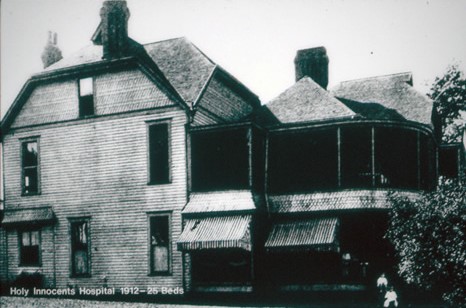
Photo credit: Children's of Alabama
The Children’s Hospital of Alabama opened its doors in 1912 as The Holy Innocents Hospital, located on Avenue G and 13th Street. Initially, the hospital accommodated 25 charity patients on two wards in a rented, simple-frame residence. As news of the hospital opening spread, more patients came, and soon the space was insufficient.
In 1914, the name was changed to The Children’s Hospital.
-
1923-Children's Hospital Builds New Facility
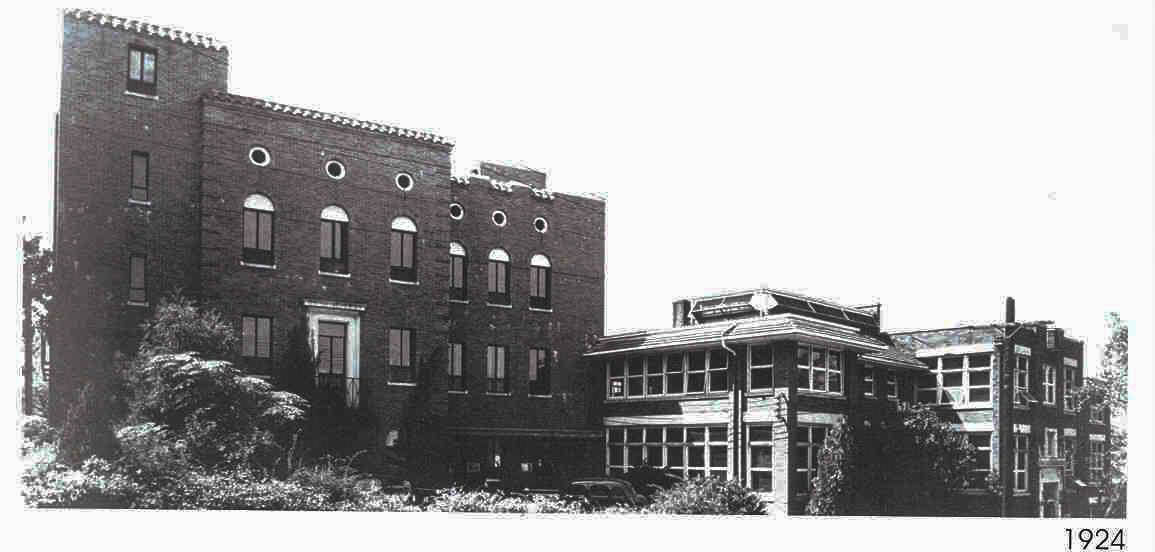
Photo credit: Children's of Alabama
Initial expansion by renovation of the building was followed by a move to a more impressive brick facility in 1923. In 1932, with the need for more space, a second building with an outpatient clinic, nurse’s quarters, and needed operating rooms was added. Much needed financial support came from the Community Chest, a charity known today as the United Way. Community volunteers, in particular women, were very committed to keeping the hospital operational; they raised funds, managed the hospital on a day-to-day basis, scrubbed floors and sat at the bedside with sick children. The dream of providing health care for children was becoming a reality, and Children’s Hospital now had the resources to accomplish its original mission – that every child who needed medical assistance was treated. No one would be turned away.
-
1929-Crippled Children's Clinic Opens
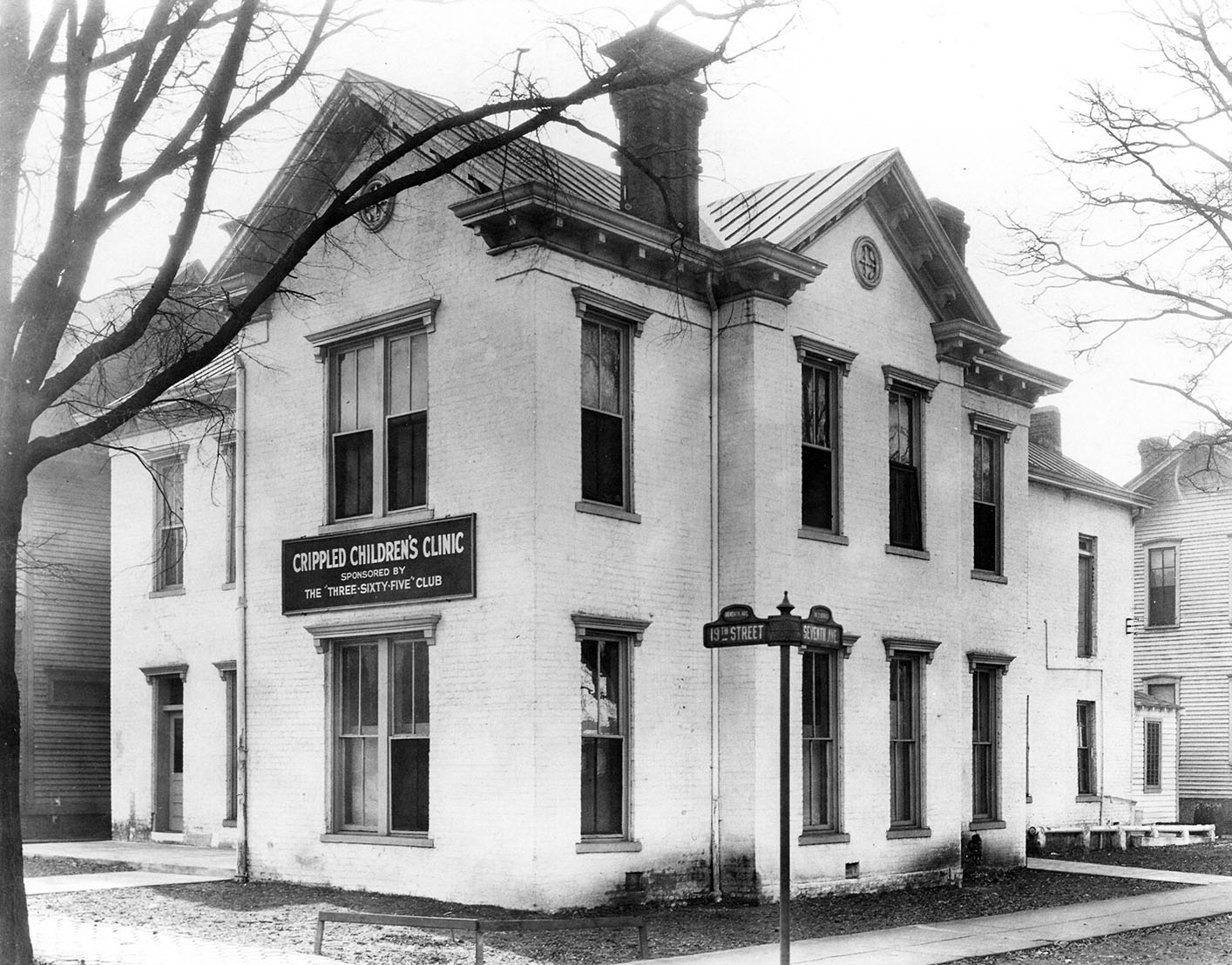
Photo credit: UAB Archive
In 1929, with the support of the community, the Crippled Children’s Clinic opened to the public for the purpose of treating victims of poliomyelitis. The clinic was located at 630 North 19th Street. When the clinic outgrew this location, it was moved to Midfield, and then in 1952 to the new Crippled Children’s Clinic and Hospital at 620 South 19th Street. Many of the children who were hospitalized suffered from paralytic poliomyelitis. When the Sabin and Salk vaccines eradicated the recurrent polio epidemics, the need for the hospital disappeared. Thus, in 1970, the building was purchased by UAB and renovated to become the University Ambulatory Center. In 1975, the building was demolished to make way for the construction of the Spain-Wallace Tower addition to University Hospital.
-
A Look at Children's Hospital Financial Statement in 1940
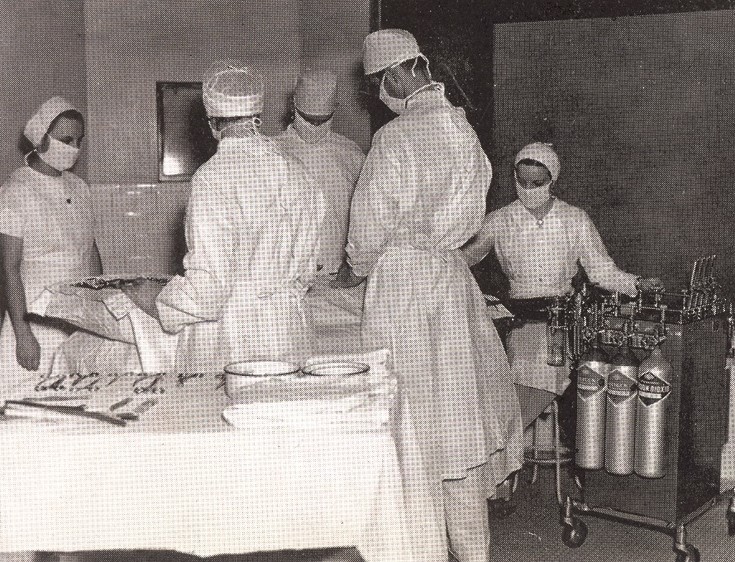
Photo credit: Children's of Alabama
In 1940 the financial statement of Children’s Hospital showed an income of $46,063 with over $29,000 coming from the Community Chest. On the expense side, $27,000 covered nursing and administration expenditures, $8,000 was spent for food, and $6,000 was spent for medical supplies and equipment. The report illustrates that the hospital had 1236 admissions, of whom 739 were “free admissions,” 144 part-pay, 205 private ward admissions and 148 private room admissions. Children of Jefferson County under the age of 12, unable to receive medical attention or hospitalization with their own resources, were treated entirely without cost. Non-residents of Jefferson County had to pay at least $15.00 a week. The total cost per child per day was $3.78.
The outpatient department reported 8,208 visits with 6,418 seen in pediatric clinics, 535 patients in the eye clinic, 1075 seen in the dental clinic, and 180 patients seen in the Child Guidance Clinic. The average number of visits per day was 32.8.
Beginnings of the Department of Pediatrics
The Department of Pediatrics was established in 1945, along with all of the clinical departments in the School of Medicine. The initial budget of the department was $4,000, including $2,900 dedicated to faculty salaries and $965 for equipment. For purpose of comparison, the Department of Surgery’s budget was $12,000, and the budget for the Department of Obstetrics was $11,000.
- 1945- Alfred A. Walker is Appointed First Pediatric Chair
- 1946- Council of Medical Education and Hospitals Does Inspections
- 1950-1951- Transition of Leadership and Department Reorganization
- 1961- New Children's Hospital Building Opens
- 1963- Herschel Bentley Becomes Chair of the Department
- 1964- Children's and University Pediatrics Training Programs Unite
- 1968- Pediatric Services Relocate from University Hospital to Children's Hospital
- 1969- John Benton Becomes Chair of the Department
- Chairs of the Department of Pediatrics
-
1945- Alfred A. Walker is Appointed First Pediatric Chair
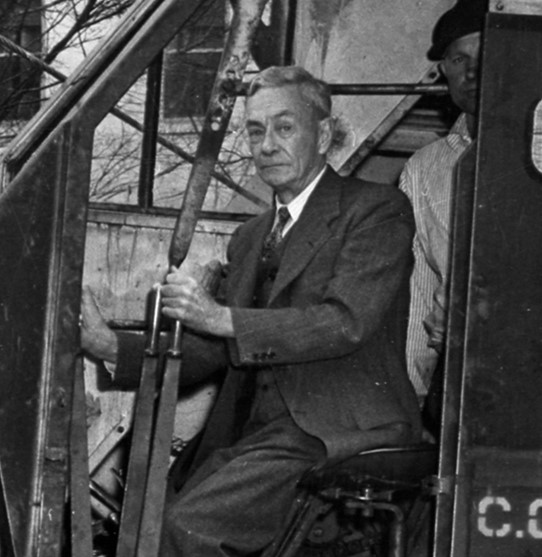
Photo credit: UAB Archive
Dr. Alfred A. Walker was appointed the first pediatric chair, and the faculty included: Drs. Beach Chenoweth (Executive Director), Hughes Kennedy, Jr., Clifford Lanier Lamar, John W. Simpson, Jerome Cochran Chapman, and Wallace Alexander Clyde. All were part-time. Pediatrics part-time faculty saw patients on the third and fourth floor of Jefferson Tower, at Children’s Hospital, and in their respective private practices.
-
1946- Council of Medical Education and Hospitals Does Inspections
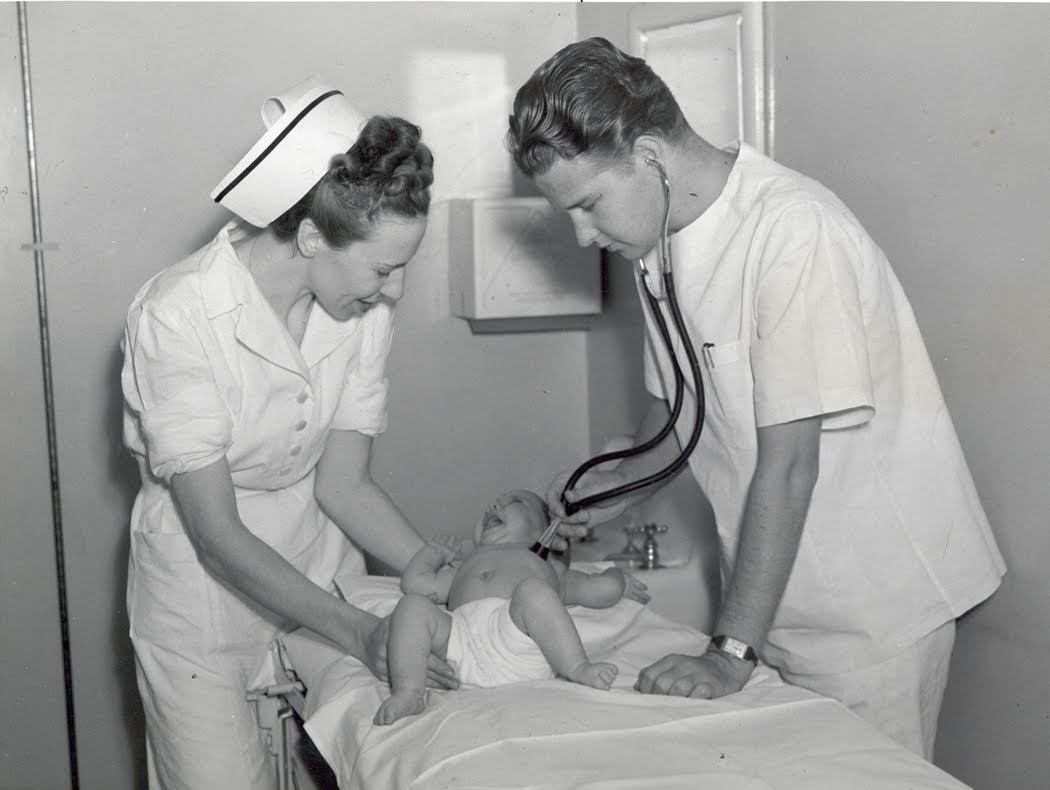
Photo credit: Children's of Alabama
In 1946, the American Medical Associations’ Council on Medical Education and Hospitals inspected Children’s Hospital and University Hospital as part of the first survey of the Medical College of Alabama. At the time Children’s Hospital was administered by the Ladies Board Managers with a Board of Trustees under the auspices of the Community Chest. The documents refer to Children’s Hospital’s affiliation with the Medical College for the purpose of providing a “source of pediatric clinical material.”
The hospital operated with a closed staff. There were 50 beds, no bassinets, all beds were available for teaching. In the previous year, Children’s Hospital had admitted 1,746 patients with an average daily census of 40.2 and an average length of stay of 8.4 days. The inspection confirmed the presence of a clinical laboratory in which students could perform laboratory procedures under the supervision of the Department of Clinical Pathology at the Medical College. It also documented the existence of an outpatient clinic with an average daily attendance of 16.4 patients.
In contrast, Jefferson-Hillman Hospital (Medical College) had 550 beds including adult and pediatrics, and 82 bassinets with more than half of the beds available for teaching. Pediatrics had 41 teaching beds located on the third and fourth floor of the Jefferson Tower. During the preceding year the hospital had 19,486 admissions with an average length of stay 9.3 days. The outpatient clinic had an average daily attendance of 174 patients with a total annual volume of 63,827 visits. -
1950-1951- Transition of Leadership and Department Reorganization
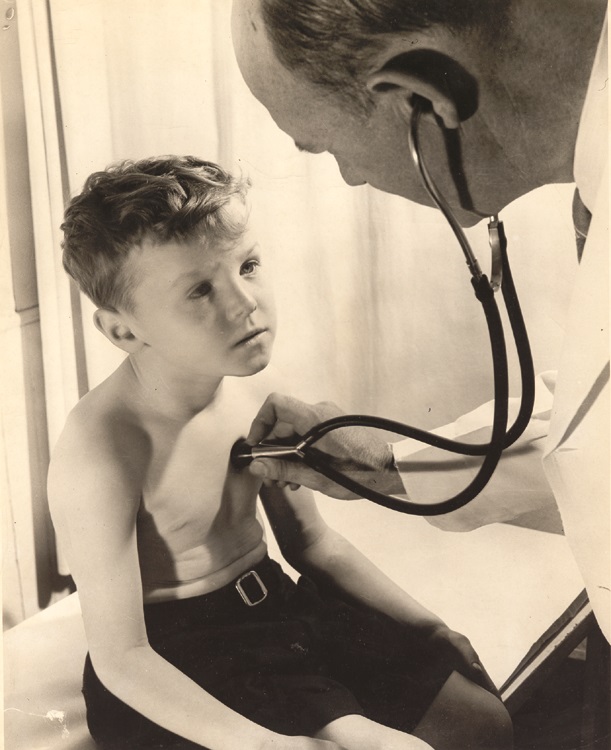
Photo credit: Children's of Alabama
In 1950, Dr. Walker resigned as chair and Dr. Beach Chenoweth, who was then serving as the executive director of the department, became acting chair. Shortly thereafter (1951) he announced his plans to resign. He communicated to Dr. Tinsley Harrison, the acting dean, that in order to survive, the department needed a full-time chairman. Dr. Harrison was aware of the critical difficulties the department faced and recognized that without a complete reorganization, the situation would only get worse. The reorganization began before the end of the year and ended with the appointment of Dr. Kendrick W. Hare, an Alabama native and professor of pharmacology, as full-time chair of the Department of Pediatrics.
Following Dr. Hare’s appointment, an arrangement was consummated between the Crippled Children’s Clinic and Hospital for the university physicians to provide 24-hour pediatric inpatient coverage and to staff the pediatric outpatient clinics.
Residents and interns performed histories and physicals for all patients admitted to orthopedics and/or surgery (plastic, urological, and burn) services. The department also assumed the responsibility for treatment of patients with acute polio as part of the teaching program. Within a few years, the hospital patient base shifted to children with congenital diseases, and metabolic and bone disorders. This service was discontinued when the hospital was purchased by UAB in order to become UAB’s ambulatory center. Within the Medical Center, pediatrics had its own service of approximately 40 beds located in Jefferson Hospital. Segregation was practiced in pediatrics as well as elsewhere in the Medical Center. White children were treated on a ward on the fourth floor, while African American children were seen on the third floor.
-
1961- New Children's Hospital Building Opens
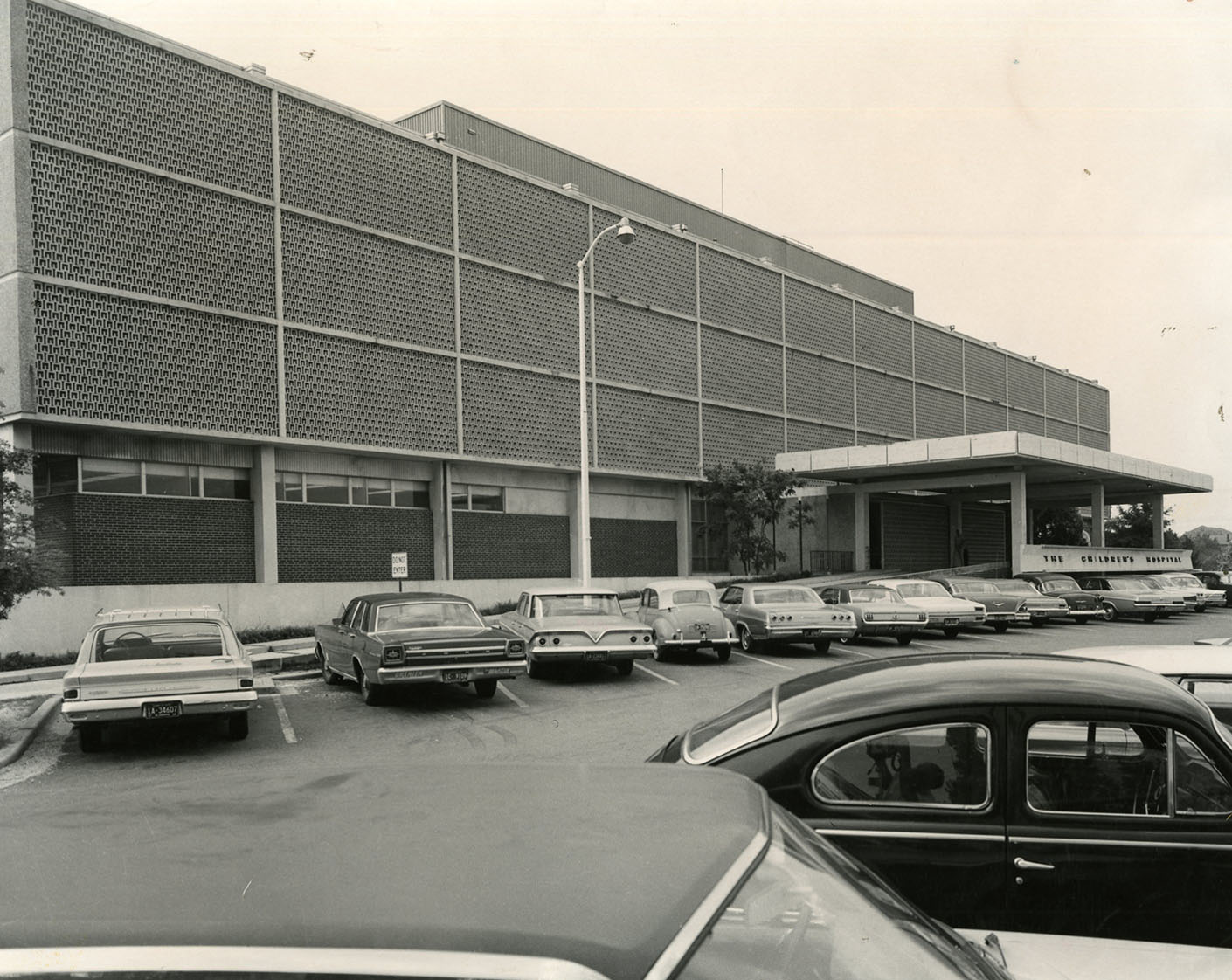
Photo credit: UAB Archive
In the late 1940’s, Dr. Roy R. Kracke sent a letter to the president of the University of Alabama summarizing the relationship between the Medical College and Children’s Hospital. It was apparent to Dr. Kracke, that the relocation of the Children’s Hospital into or near the Medical Center would be highly desirable. In addition to building a much needed new hospital with potential for expansion, the hospital would benefit from the facilities that already existed in the Medical Center, including the largest medical library in the southeast. The move would promote daily and close contact with the various staff members with particular reference to the faculty of the School of Medicine. Dr. Kracke noted that the staff of Children’s Hospital was essentially the same staff that comprised the Department of Pediatrics and that Children’s Hospital was being used as a component of the pediatric training program. He indicated that from a professional standpoint it would be advantageous for everyone concerned if both pediatric services were consolidated into a single entity. He stated that children would receive better medical care in an institution specifically for child care and manned by personnel who were accustomed, by training and experience, to dealing with children.
A year before this letter was written, a prominent civic leader, Robert R. Meyer donated a substantial gift ($750,000) upon his death, to build a new children’s hospital in memory of his wife. Dr. Kracke pointed out that with the existence of the Hill-Burton Act, the hospital could secure nearly $1 million for construction from the federal government. The issue was where to build. The Citizen’s Board of Trustees of the hospital appointed a committee headed by Mr. Rucker to investigate the best site for this new facility. Deliberations went on for months. Dr. Kracke told the Children’s Hospital group that if the institution moved to the Medical Center, the University of Alabama would not seek to own, control or operate the children’s wing. He indicated that combining the pediatric services of the two existing institutions would result in a patient service of 120 beds, and that of course this would be inadequate to take care of the future needs of children in Birmingham; thus, he suggested a hospital with 150 beds.
As the decision to build dragged on, the relations between the Medical College and the Children’s Hospital deteriorated, and at one point rotations of residents and interns ceased. The Board of Children’s Hospital finally approved the construction of the new hospital to be built at 1600 6th Ave South between 16th and 17th Street and the new hospital opened its doors in 1961.
-
1963- Herschel Bentley Becomes Chair of the Department
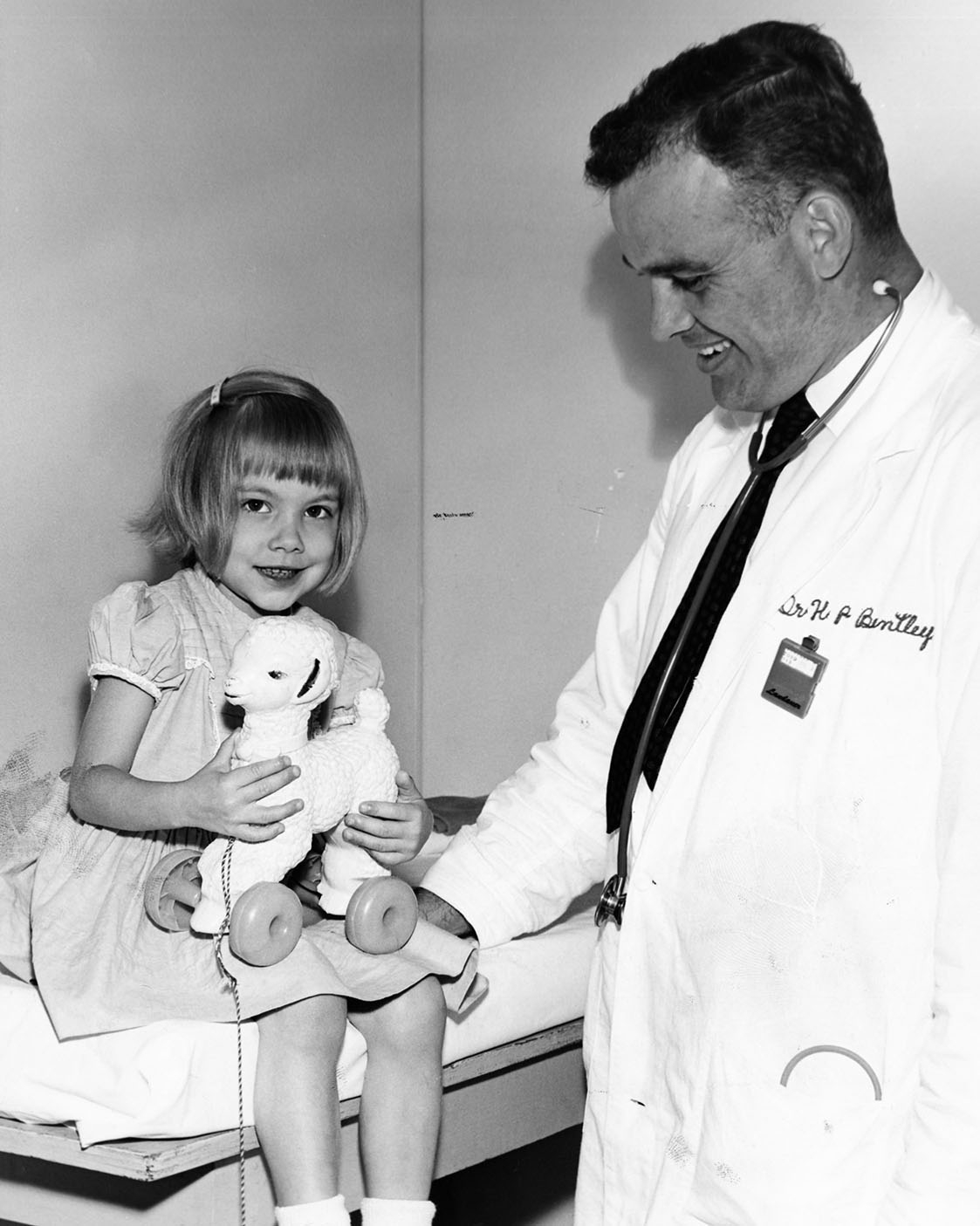
Photo credit: UAB Archive
In 1963, Dr. Hare (Chairman of Pediatrics) was appointed director of the new Institute of Growth and Development, and Dr. S. Richardson Hill, the Dean of the School of Medicine appointed faculty member and medical school alumnus, Dr. Herschel P. Bentley, Jr., to succeed Hare as Chair of Pediatrics. Bentley had completed his internship and residency in pediatrics at University Hospital. He said that his goal was ensuring academic excellence as well as an expansion of the research programs in the department. His major research focus was cystic fibrosis and blood diseases.
-
1964- Children's and University Pediatrics Training Programs Unite
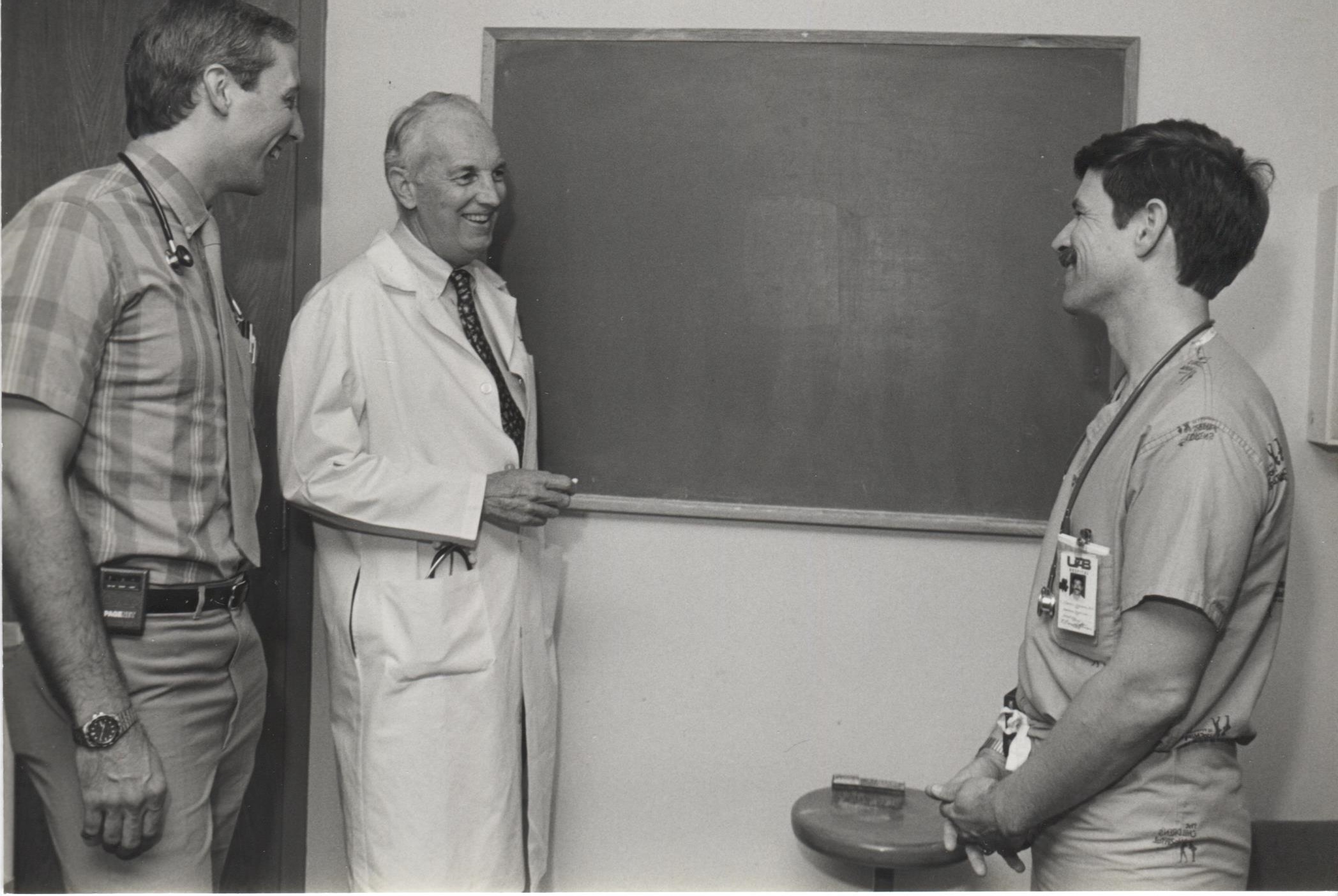
In 1964, the teaching program of the Department of Pediatrics at the Medical College of Alabama, including the pediatric service of University Hospital, and the Children’s Hospital of Birmingham, became the unified program of the University of Alabama Medical Center. The combined service had 198 beds, 90 bassinets and an average inpatient service of 12,892 yearly admissions and 24,363 yearly clinic visits. The expanded pediatric service intended to have 18 residents and 10 interns.
The joint announcement of the unification was made by Dr. Herschel Bentley, Chairman of Pediatrics, and Dr. Harry C. Shirkey, Medical Director of Children’s Hospital and Associate Professor in the department. Under the agreement, the chairman would be responsible for the teaching programs. In their statements, they highlighted the benefit of the proximity of the two services with a single teaching program and the clear potential to recruit faculty, the house staff, and expand the research facilities. Both emphasized the benefit of having additional subspecialties in pediatrics. At the time the decision was made to merge the two programs, neither program was very successful as exemplified by the difficulty retaining residents.
-
1968- Pediatric Services Relocate from University Hospital to Children's Hospital
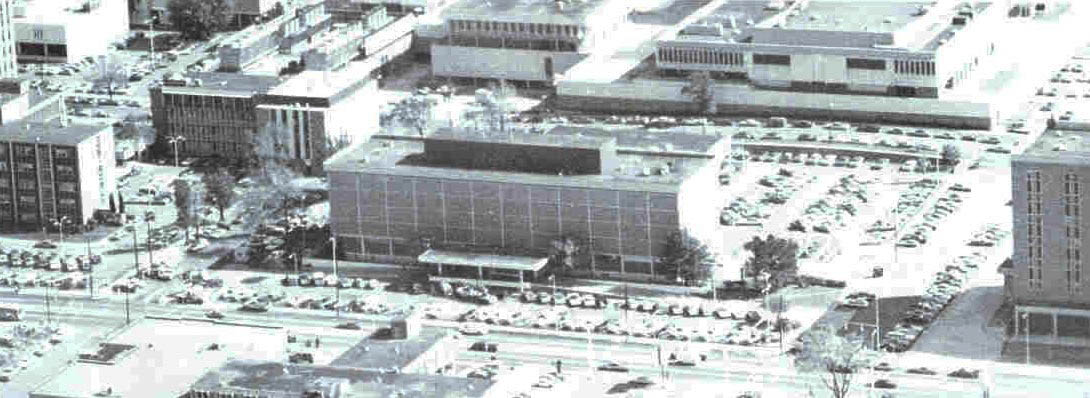
Photo credit: Children's of Alabama
In 1968, the pediatric service was finally relocated from the University Hospital to Children’s Hospital. However, pediatric cardiology, cardiovascular surgery and neonatology remained at University Hospital.
-
1969- John Benton Becomes Chair of the Department
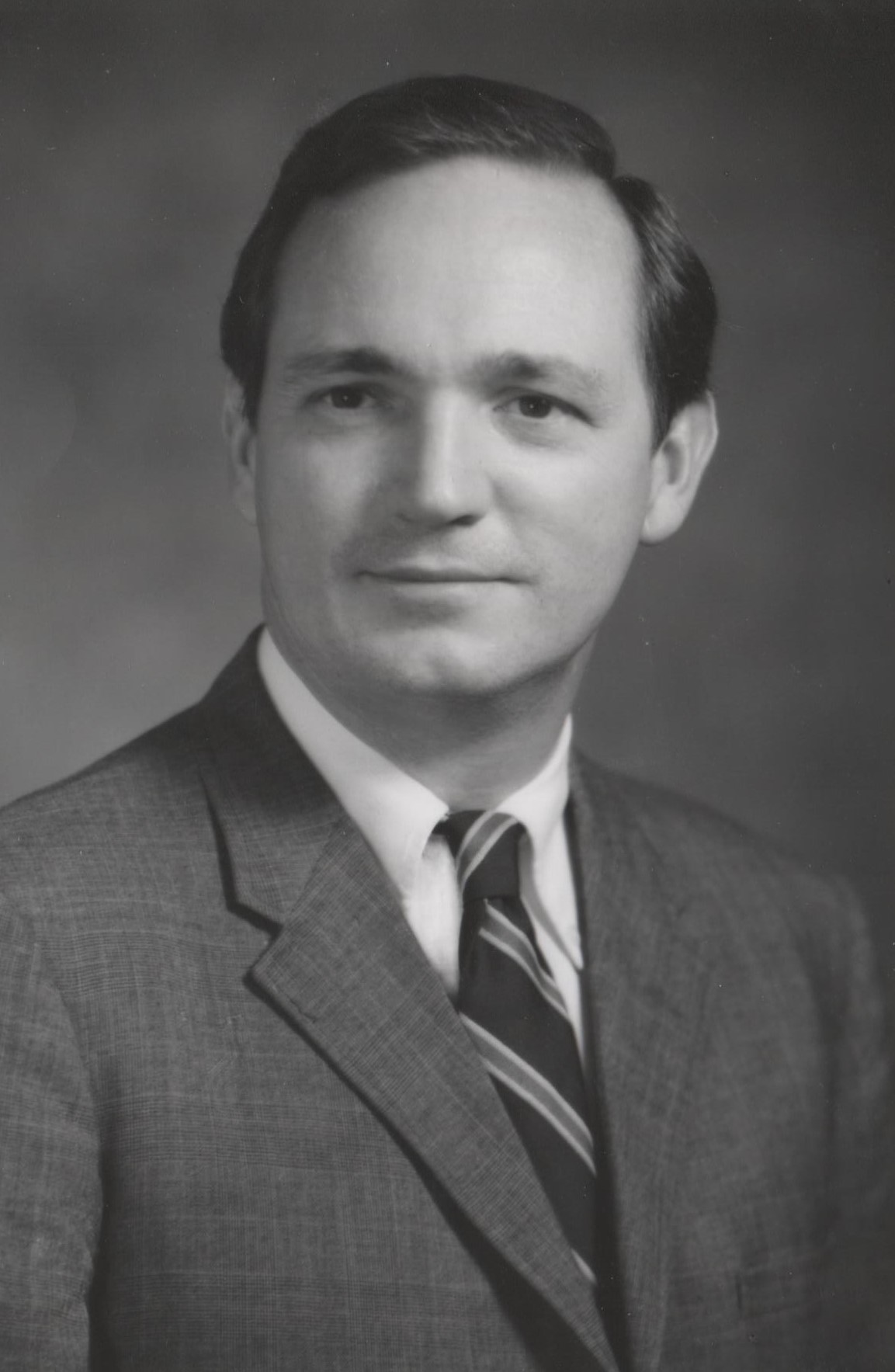
In 1969, Benton was named chairman of the Department of Pediatrics. He provided skillful leadership during a period of crucial change, and played a key role in expanding and improving the quality of the house staff and the pediatric residency program, which rapidly became known as one of the strongest residency programs in the Southeast. During his tenure as chairman, Dr. Benton was also committed to encouraging research interests and, most importantly, allowed the faculty sufficient time to do so.
-
Chairs of the Department of Pediatrics
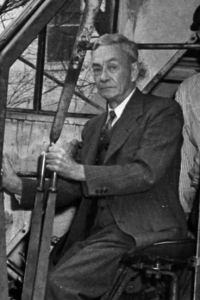
Alfred A. Walker
1945-1950
Photo credit: UAB Archive

Beach Chenoweth
Acting- 1950-1951

Kendrick Hare
1951-1963
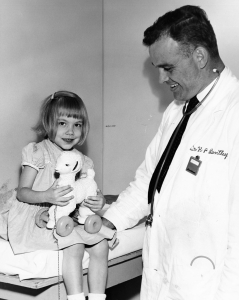
Herschel P. Bentley Jr.
1963-1968
Photo credit: UAB Archive
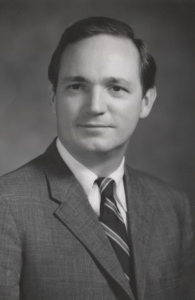
John W. Benton
Acting- 1968-1969
1969-1983
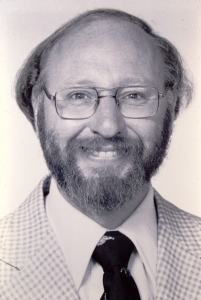
Richard J. Whitley
Acting- 1983
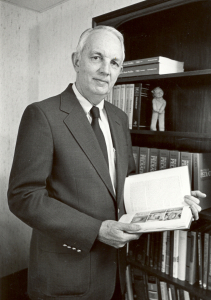
Hugh C. Dillon
1984-1988
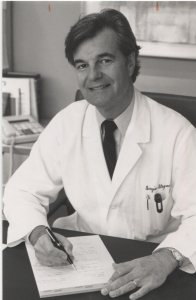
Sergio B. Stagno
Acting- 1988-1989
1989-2014
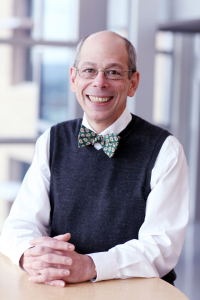
Mitchell B. Cohen
2014-2025
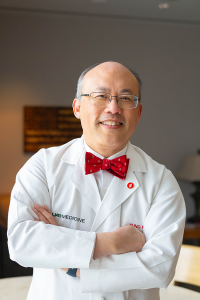
Yung Lau
2025-Present
Early Pediatrics Faculty
The early 1960’s were tumultuous. The city of Birmingham found itself in the eye of the civil rights storm that swept the nation. Relations between the Department and Children’s Hospital were tense. But despite the internal and external turmoil, the Department began to coalesce and underwent evolution from a small, loosely organized unit, to a regionally and nationally recognized leader in pediatric training and research.
- 1952- Sarah Davis Joined the Faculty
- 1957- Lionel Bargeron Joined the Faculty
- 1960- Charles A. Alford Joined the Faculty
- 1962- Wayne & Sarah Finley Joined the Faculty
- 1963- Hugh Dillon Joined the Faculty
- 1964- Russell Cunningham Joined the Faculty
- 1964- George Cassady Joined the Faculty
- 1966- John W. Benton Joined the Faculty
- 1966- William A. Daniel Joined the Faculty
- 1966- Paul A. Palmisano Joined the Faculty
- 1967- Ralph Tiller Joined the Faculty
- 1967- Max Cooper Joined the Faculty
- 1968- Hernan Moreno Joined the Faculty
- 1970- Warren Derrick Joined the Faculty
-
1952- Sarah Davis Joined the Faculty
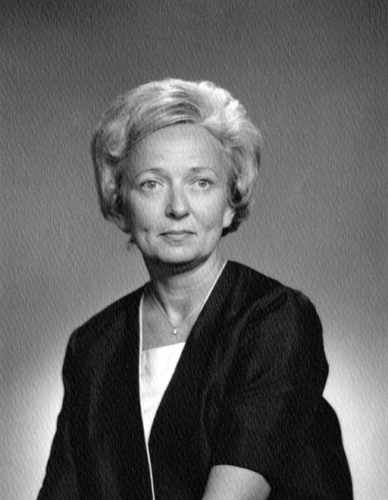
Photo credit: UAB Archive
An early member of the department was Dr. Sarah Davis, a member of the teaching faculty since 1953. In 1961, the senior class presented her with the Dido Award given to a full-time faculty member in recognition of teaching skills and patience, understanding and consideration for students. She was a native of Bessemer, Alabama, and continued to work as general pediatrician in the department for several years.
-
1957- Lionel Bargeron Joined the Faculty
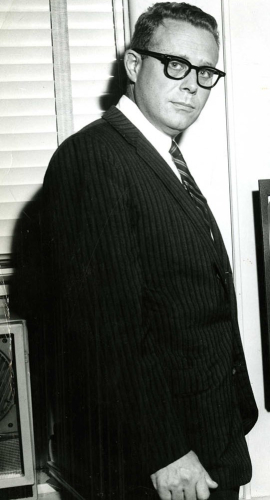
Photo credit: UAB Archive
Lionel Malcolm Bargeron, Jr. (Mac) graduated from the Medical College of Alabama in 1952. His internship and first year of residency were completed at Jefferson-Hillman Hospital here in Birmingham. From 1954 to 1955, he did a second year of residency at Babies Hospital, Columbia-Presbyterian Medical Center in New York City. His training continued with a two-year Public Health Research Fellowship – Pediatric Cardiology at the University of Alabama at Birmingham, under Dr. Richard Bing, a pioneer in the development of pediatric cardiology. In 1957, Bargeron joined the faculty of the Medical College of Alabama in the Department of Surgery. Bargeron was one of the pioneers of cineangiography in infants and children, having developed one of the first biplane cine units in 1958. The technique of angled cineangiography which became the standard in pediatric laboratories was developed by Dr. Bargeron and two colleagues in 1972.
In 1989, Dr. Bargeron led the effort to migrate the Division of Pediatric Cardiology Division from the Department of Surgery to the Department of Pediatrics. This was one of the most important signs that with new leadership the Department of Pediatrics had become whole. In recognition for all his tireless efforts, the University honored him with the establishment of an endowed chair in Pediatric Cardiology.
Mac became a major collaborator with Dr. John Kirklin, and was a key player in the Alabama Congenital Heart Center at UAB. In 1993, the Board of Trustees of the University of Alabama named the suite located at 320 New Hillman Building the LM Bargeron Pediatric Cardiology Suite in his honor.
-
1960- Charles A. Alford Joined the Faculty
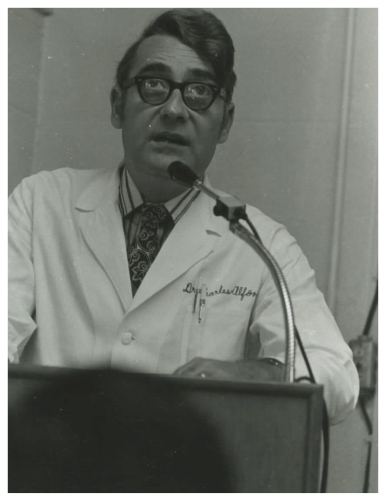
Charles A. Alford (Charlie) was another remarkable faculty member who joined the department in 1960. Alford graduated from the Medical College of Alabama in 1955, did his internship and residency in pediatrics at the University Hospital, and was chief resident for 1957 to 1958. After serving in the military as pediatrician in chief at the Naval Hospital in Sasebo, Japan, Alford returned as an Instructor in Pediatrics at the Medical College of Alabama (1960) with an initial interest in renal physiology, particularly fluid and electrolyte disturbances. He quickly realized that a postdoctoral fellowship would be required for a successful academic career. In 1962, he joined the laboratory of Dr. Thomas Weller, who along with John Enders and Frederick Robbins had recently been awarded the Nobel Prize in Medicine for work done to propagate viruses in tissue cultures. Alford was a fellow with support from the National Institute of Allergy and Infectious Diseases (NIAID), National Institutes of Health (NIH), for three years at the Harvard School of Public Health and Children’s Hospital of Boston. He studied congenital rubella infection and made key contributions to the knowledge, pathogenesis and diagnosis of this congenital infection. More importantly, his experiences in Weller’s laboratory provided him with the tools for broader studies of fetal infections and an appreciation for the importance of the role of the laboratory in solving clinical problems, a conviction that shaped his career as an investigator and as a mentor. At the end of his fellowship he returned to Birmingham and joined the Department of Pediatrics.
After leaving Weller’s laboratory, Alford began large scale investigations using the fetal immune response to diagnose and then to screen for congenital infections. Through this work he made important contributions on congenital syphilis and congenital toxoplasmosis but quickly realized that congenital cytomegalovirus (CMV) infection was far more common than any other congenital infection and it appeared to be a common cause of hearing loss and mental retardation. Remarkably, at the same time Alford was leading his CMV team, he also led groundbreaking studies of antiviral treatment of neonatal herpes simplex virus infection and herpes encephalitis.
In the 1970s, Alford assembled a team of investigators at UAB and set about defining the epidemiology, natural history, and microbiological and immunological characteristics of maternal and congenital infections, in particular CMV. In parallel, the group also worked in groundbreaking studies of antiviral treatment of herpesvirus infections. The fellows, who soon became colleagues in the Division of Infectious Diseases, included Drs. Rich Whitley, Sergio Stagno, Bob Pass, Bill Britt, David Kimberlin, Kevin Cassady, Marilyn Crain, Cecelia Hutto, Suresh Boppana, and Shannon Ross.
To this day, the studies of congenital CMV and development of antiviral therapies continue with the involvement of younger generations. Perhaps the best example of the influence that Charlie Alford had on academic medicine is the statement by Nobel Laureate Tom Weller writing in his autobiography: “a sterling example of my scientific progress is the career of Dr. Charles A. Alford, who after two years in our laboratory returned, to the Department of Pediatrics in Alabama . . . His group became the leading center in the United States studying congenital viral diseases. It is personally gratifying that the group in Birmingham refers to Dr. Charles A. Alford as my scientific son and themselves as my scientific grandchildren.”
Throughout Alford’s academic career he received continuous support from the NIH and the March of Dimes. He received multiple awards and served as President for the Society of Pediatric Research (SPR) from 1973-1974, chaired the Council of the American Pediatric Society (APS) in 1987 and served on multiple committees and NIH study sections. He was recognized and honored in 1991 with the establishment at UAB of the Charles A. Alford Endowed Chair in Pediatric Infectious Diseases, currently held by one of his disciples, William J. Britt, MD.
-
1962- Wayne & Sarah Finley Joined the Faculty
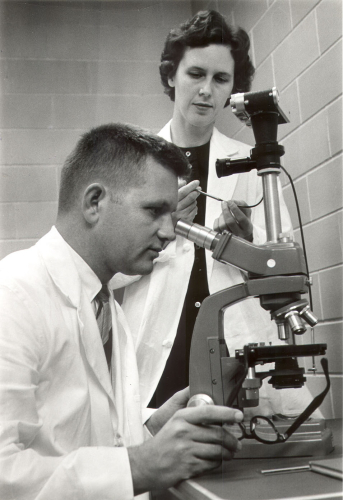
Photo credit: UAB Archive
Among the early faculty members of the Department of Pediatrics, several graduated from the University of Alabama School of Medicine and trained in pediatrics at University Hospital. Drs. Sara and Wayne Finley were excellent examples. The Finleys were the first trainee graduates invited to study at the Institute for Medical Genetics at the University of Uppsala in Sweden. Upon their return to Birmingham, and with a grant from the Bureau of Maternal and Child Health of the State of Alabama, they established a laboratory of medical genetics in the Medical Center. They led the laboratory of medical genetics until their retirement in the early 2000’s, which coincided with the creation of the Department of Medical Genetics.
-
1963- Hugh Dillon Joined the Faculty
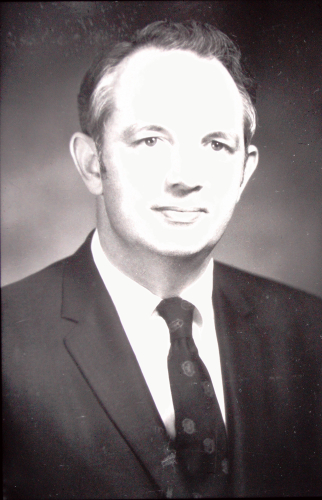
Hugh C. Dillon obtained his medical degree from the Medical College of Alabama in 1955 and served his internship and residency at the University of Alabama Hospital in Birmingham. He began a fellowship in infectious diseases at the University of Minnesota but it was interrupted in 1958 by a call to military service. After two years in the United States Air Force, he entered private practice in Montgomery, Alabama, with Dr. William A. Daniel. He was lured back to laboratory investigation at the University of Minnesota where he served two additional years (1961-1963) as fellow of the National Foundation-March of Dimes.
In 1963, he returned to Birmingham and the Medical Center as an Assistant Professor of Pediatrics and established the Streptococcal Research Laboratory, making major contributions to our understanding of these infections. He was highly successful in securing grant funding and was a prolific contributor to peer reviewed literature.
In 1984, he accepted the dual position as chairman of the Department of Pediatrics and medical director of the Children’s Hospital of Alabama, the position he held until his untimely death in 1988.
-
1964- Russell Cunningham Joined the Faculty
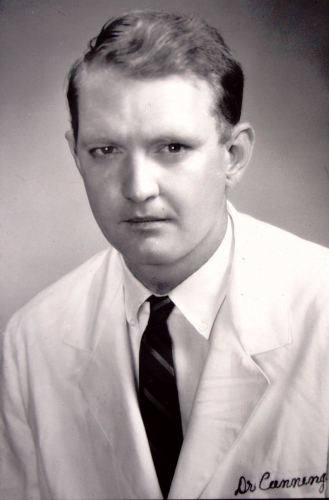
Before joining the Department of Pediatrics in 1964, Dr. Cunningham graduated from the Vanderbilt School of Medicine in 1958. He did his internship at Vanderbilt Hospital and his pediatric residency at the Los Angeles Children’s Hospital, where he served one year as chief resident. In 1962, he began his fellowship training in Endocrinology at Harvard University (1962-1964). Upon joining the Department of Pediatrics, Dr. Cunningham served as the only pediatric endocrinologist until 1990 when he was joined by Drs. Joy Atchison and Katrina Parker, both of whom had completed their endocrinology training at Children’s Hospital of Pittsburgh. This was the beginning of the Division of Endocrinology.
Dr. Cunningham gained a reputation as a great physician and endocrinologist. He was passionate about medical education, and in 1987 became the Director of the Pediatric Clerkship, a position he maintained until his retirement. Another major contribution to UAB was his work as Chairman of the Institutional Review Board (1983-1995).
In recognition for his excellence in medical education and mentoring of residents, the department established the Russell Cunningham Memorial Research Scholarship in 2007. The goal of the scholarship is to attract UAB medical students who are interested in academic pursuits to train during the summer with a mentor in pediatrics. Two awards are given annually.
-
1964- George Cassady Joined the Faculty
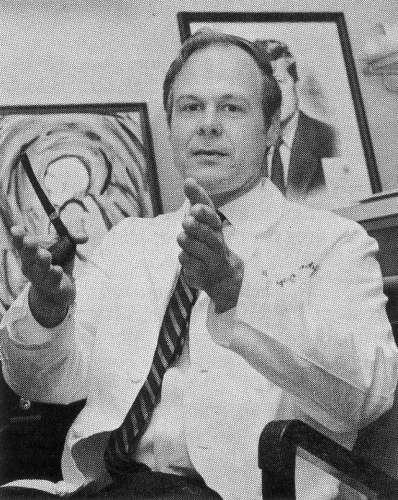
Dr. George Cassady, a native of California, joined the faculty of the Department of Pediatrics in 1964 as head of the Division of Neonatology. Dr. Cassady graduated from Duke Medical School in 1958 and completed his residency training at the same institution in 1960. He then served for two years as a clinical associate and medical investigator in the genetics unit at the NIH. From 1962 to 1964 he was a senior resident in pediatrics and fellow in neonatal physiology with Dr. Clement Smith at Harvard University.
When Dr. Cassady joined the Department in 1964 the neonatology unit at University Hospital was located on the third and fourth floors of the New Hillman Building on the corner of 20th Street and 7th Avenue South. By 1980, the unit had grown to 21 beds for premature/sick neonates with an average daily census of 19, and 95 beds for healthy newborns with a daily census of 47.
Dr. Cassady was an excellent leader who was not afraid to ruffle feathers in order to get things done. He had superb clinical skills and was a great motivator and teacher. He did not settle for anything less than excellence and was demanding of himself and his co-workers. He valued research and aggressively pursued funding. The culmination of his efforts occurred when he secured funds from the National Institute of Child Health and Human Development (NICHD) for the research network of neonatal intensive care units. He was funded on the first cycle, one of only seven institutions. This grant has been renewed multiple times and is still active today. The division under his direction provided exemplary education and a continuous flow of quality research at both basic and clinical levels. The fellowship program established by Dr. Cassady soon after his arrival at UAB has produced excellent clinical and basic research individuals in the field of neonatology, populating both academic medicine and private practice.
Dr. Cassady, unhappy with the unacceptably high rate of neonatal and infant mortality in Alabama, worked tirelessly to address the problem by working with the State Medical Association, the Alabama Chapter of the American Academy of Pediatrics (AAP) and the State Department of Public Health. He appealed to leaders in the community and asked for ideas and the collaboration of physicians for the purpose of reducing the tragic and unnecessary toll of infant deaths in Alabama. Since his call for action was issued in the State Medical Association Journal in 1968, neonatal outcomes have improved substantially, but unfortunately Alabama still ranks at the bottom of infant and newborn mortality statistics.
During his time as division director, Dr. Cassady recruited several neonatologists. Among them, Drs. David Wirtschafter, Joseph B. Phillips, Elaine Barefield, and others. George Cassady retired in 1989 and returned to California where he became director of neonatology and chairman of the Department of Pediatrics at Children’s Hospital of San Francisco.
-
1966- John W. Benton Joined the Faculty
Dr. John W. Benton graduated in 1955 from the Medical College of Alabama, completed his internship at the University of Alabama Hospital and then did his pediatric residency at the University of Utah and the University of Minnesota Hospitals. Upon his return to Birmingham, he completed two years of advanced studies as a NIH trainee in Neurology (1960-1962). He then did his pediatric neurology fellowship at the Massachusetts General Hospital of Harvard Medical School (1964-1966). Dr. Benton returned to UAB in 1966. He was a pioneering child neurologist, and taught many generations of pediatricians to appreciate the intricacies of the pediatric nervous system, and inspired many to enter both pediatrics and pediatric neurology.
In 1969, Benton was named chairman of the Department of Pediatrics. He provided skillful leadership during a period of crucial change, and played a key role in expanding and improving the quality of the house staff and the pediatric residency program, which rapidly became known as one of the strongest residency programs in the Southeast. During his tenure as chairman, Dr. Benton was also committed to encouraging research interests and, most importantly, allowed the faculty sufficient time to do so. He stepped down as Chairman in 1983.
-
1966- William A. Daniel Joined the Faculty
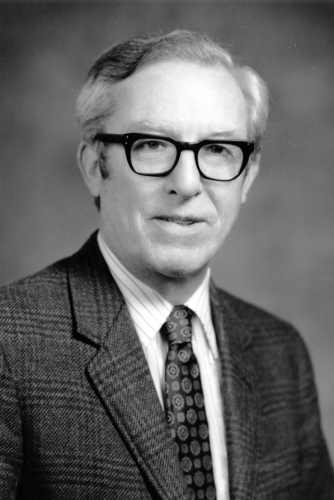
Photo credit: UAB Archive
William (Bill) A. Daniel, Jr. joined the Department of Pediatrics in 1966 at the rank of professor, and was appointed as chief of the Division of Adolescent Medicine the same year. Daniel obtained his medical degree from Northwestern University in 1940. He did his internship at Charity Hospital in New Orleans (1939-40), a pediatric internship at the Children’s Hospital in Dallas, Texas, and pediatric residency at Children’s Memorial Hospital in Chicago, Illinois. In 1942, he went into private practice in Montgomery, Alabama where he worked until 1966. In 1960, Hugh Dillion joined his practice for a short time.
The department gained national attention in 1966 when it received a $1,529,000 grant from the Children’s Bureau of the Department of Health, Education and Welfare. Daniel was the principal investigator on this large grant. Dr. Joe Volker, the medical center’s vice president said that, “A limited amount of funds was available through Children’s Bureau, and only a few such comprehensive programs will still be available in the United States. This is a pioneer venture in providing preventative medical and dental care for children so that they will be healthy adults.” The grant provided funds for the establishment of an adolescent unit, one of the only such programs in the United States at that time. The news was well received and provided a boost to the department’s faculty. The Children and Youth project (known as the C and Y) provided funding for many additional programs, including faculty salaries.
For his life time contributions to the field of adolescent medicine, Dr. Daniel received the Abraham Jacobi Award from the American Academy of Pediatrics in 1988
-
1966- Paul A. Palmisano Joined the Faculty
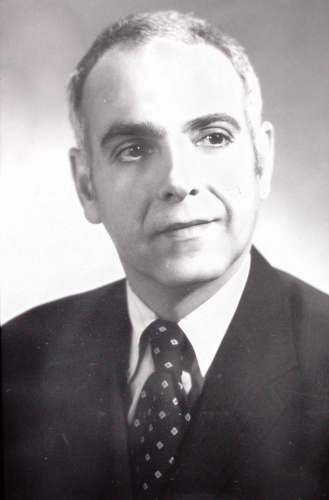
Paul A. Palmisano was a native of Cincinnati, Ohio where he received his medical degree from the University of Cincinnati in 1959. He then became the chief of pediatrics at Frankfurt – Giessen Medical Service, as a captain in the US Army Medical Corps, Germany. In 1961 he returned to Cincinnati and became Assistant Director at the Children’s Hospital Clinic System. He left in 1962 and joined a private practice group in Canton, Ohio. In 1966, he was recruited as an attending physician by the University of Alabama Medical College to serve both as a pediatrician and pharmacologist. His early career included serving as a medical officer for the Food and Drug Administration in numerous positions from 1962 through 1966. His passion was the approval of the Poison Prevention Packaging Act which limited childhood intoxication by reducing packaging size and inventing child-proof tops. He also served as member of the advisory committee on drug reactions at the Armed Forces Institute of Pathology and the Technical Advisory Committee at the Consumer Product Safety Commission.
Dr. Palmisano played an instrumental role in the development of a successful poison control center and child safety programs at Children’s Hospital. For over 20 years, he oversaw the publication of the Poison Information Bulletin. Dr. Palmisano practiced pediatrics as what we now define as a “hospitalist”. For many years he was the attending of the “Blue Team” inpatient service at Children’s Hospital. He worked closely with students, house officers and colleagues. His clinical skills were legendary, and until the end of his career he was responsible for “Palmisano Rounds,” which consisted of an afternoon session leading medical students and residents in the presentation, evaluation and management of pediatric patients with interesting medical diagnoses and findings. This activity was always ranked at the top of thought-provoking and valuable experiences for students and residents. In 1975, he was appointed director of student affairs and assistant dean, and then, in 1979, associate dean. When he stepped down from this position in 1990, Dean James A. Pittman wrote to him and said, “You have kept the medical students, and largely the medical school, together with your pro-student, yet objective approach, and we will not be able to replace you.”
In recognition of his remarkable contributions to teaching, the Department of Pediatrics established the Paul Palmisano Excellence in Pediatrics Award in 1993. The award is given annually to a senior medical student who, in the opinion of the faculty, best demonstrates excellence in pediatrics, a passion for learning, a desire to share knowledge through example and compassion for the needs of children and their families. Dr. Palmisano retired from the medical staff in November, 2000.
-
1967- Ralph Tiller Joined the Faculty
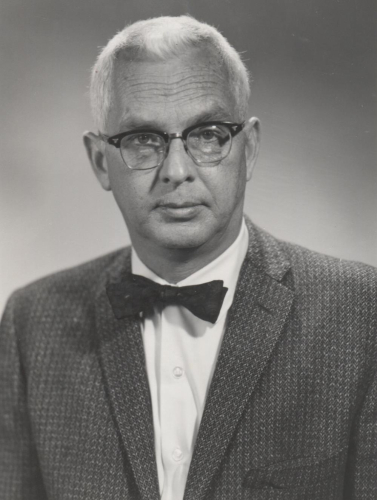
Ralph E. Tiller, a native of Birmingham, attended the Tulane University School of Medicine in New Orleans, Louisiana, where he graduated in 1951. He did his internship at Fitzsimons Army Hospital in Denver, Colorado and his residency at Tulane University where he was appointed chief resident for the academic year 1954-1955. During the next 13 years he practiced pediatrics in Columbus, Georgia. While in practice he served as consultant to the Muscogee County Health Department and the Martin Army Hospital in Fort Benning, Georgia.
In July 1967, Dr. Tiller joined the Department of Pediatrics at the University of Alabama School of Medicine. Over the next 21 years at UAB, he served as director of the residency training program and directed the inpatient teaching service at Children’s Hospital, serving perennially as attending on the Green Team (inpatient service). He was considered by many to be the most brilliant clinician in the department. He earned a reputation as Alabama’s most sought-after pediatric consultant. He pursued his interest in diseases of the chest and in a short time established the Division of Pulmonology and created both the Cystic Fibrosis Center at Children’s Hospital and the Pediatric Pulmonary Center. The Pediatric Pulmonary Center was one of five original training centers funded by the NIH, requiring regular competitive renewals. The center remains funded to this day.
Dr. Tiller’s passion for the care of children and his effective style of teaching inspired medical students, residents, pulmonary fellows and colleagues for over two decades. Dr. Tiller was uncompromising in his demand for excellence in himself, his trainees, and his colleagues. His efforts contributed in a large way to the outstanding reputation of the department and Children’s Hospital of Alabama. The Department of Pediatrics awarded Dr. Tiller the first Distinguished Faculty Award for Excellence in Teaching, an award that now bears his name. He retired from the University in 1989.
-
1967- Max Cooper Joined the Faculty
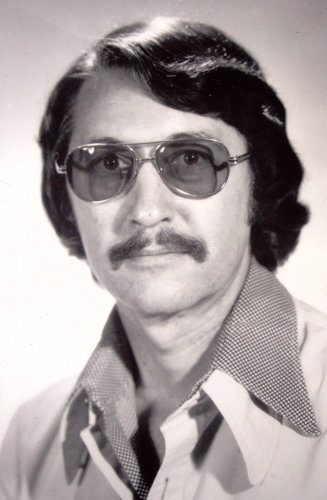
Max Cooper joined the faculty in the Department of Pediatrics in 1967. He earned his medical from Tulane University School of Medicine and later trained in pediatrics at the same institution and the Hospital for Sick Children (Great Ormond Street), London, and in pediatric allergy at the University of California, San Francisco (UCSF). In 1963, he moved to the University of Minnesota to further his training with Dr. Robert Good. His first major publications in 1965 and 1966 described one of the most important discoveries in modern immunology, namely the B and T limbs of the immune system. It represented the clear distinction between the antibody and cell mediated arms of the immune response. This seminal discovery lead to the quick understanding of immunodeficiency diseases. Cooper devoted a major effort to define the ontogeny of the immune system and added important understanding to a number of immunodeficiency diseases, including Wiskott-Aldrich syndrome, IgA deficiency, X-linked and autosomal recessive agammaglobulinemia, and common variable deficiency among others. He made his biggest contribution to basic immunology by demonstrating that adaptive immunity first emerged in jawless vertebrates such as the lamprey eel, and not with jawed vertebrates, as thought for years. This rewarding experimental model has led to the definition of somatic diversification of lymphocyte receptors.
Dr. Cooper was a role model for the pediatric clinical scientist and developmental biologist throughout his career. While at UAB, Cooper received continuous funding from the NIH, and was awarded a Howard Hughes funded investigator grant which he renewed successfully for many years. In his current position at Emory University, he has received the prestigious Georgia Research Alliance Eminent Scholar Award. Cooper has received some of the most outstanding awards in science, including election to the National Academy of Science and the Institute of Medicine. In 2000, he received the Lifetime Achievement Award from the American Association of Immunologists.
Two of his earliest collaborators at UAB were Richard (Dick) B. Johnston, Jr. and Alexander (Sandy) R. Lawton, both excellent physician scientists who went on to successful careers. Dick Johnston later became chair of pediatrics at the Children’s Hospital of Philadelphia and subsequently scientific director for the March of Dimes. Sandy Lawton became an endowed professor at Vanderbilt University. Over Cooper’s 30-year career at UAB, it is fair to say that hundreds of trainees, fellows and eventual collaborators from all over the world came to train under him. He is highly respected throughout the world and is one of the warmest and most giving scientists one could ever find.
-
1968- Hernan Moreno Joined the Faculty
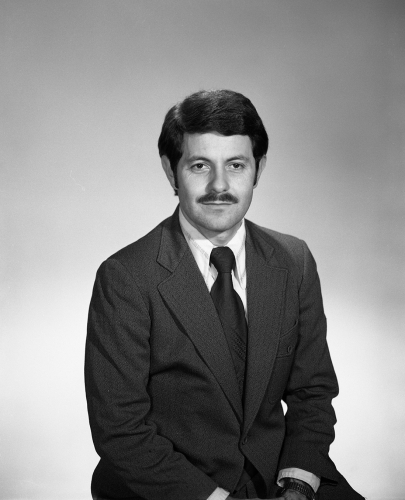
Photo credit: UAB Archive
In 1968, Dr. Hernan Moreno was recruited at the completion of his hematology oncology training at Cincinnati Children’s Hospital. He became the first director of the division, a position he held until 1976 when he retired to work in general pediatrics in Birmingham.
-
1970- Warren Derrick Joined the Faculty
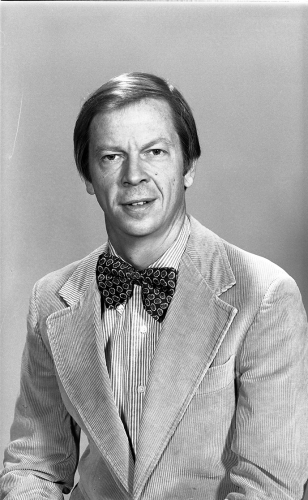
Photo credit: UAB Archive
In 1970, Dr. Warren C. Derrick joined the faculty after doing his pediatric residency at UAB and completing a two-year infectious diseases fellowship at the NIH (NIAID). He joined Dr. Hugh Dillion and participated in landmark studies of streptococcal infection. His interest in general pediatrics led him to devote a significant effort in ambulatory pediatrics. He resigned in 1976 and became the first Chairman of Pediatrics at the University of South Carolina in Columbia, South Carolina.
The 1970s
The 1970s were a remarkably exciting and triumphant period for UAB’s Department of Pediatrics. New faculty, fellows and residents were recruited and the relationship with Children’s Hospital was solidified.
-
Infectious Disease Research Expands
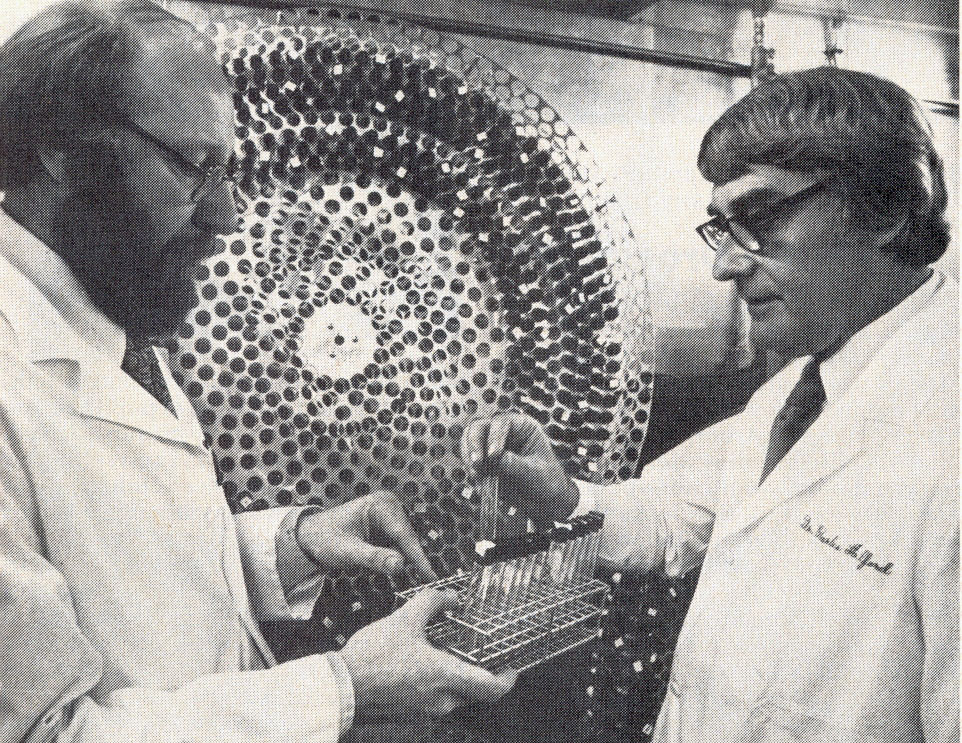
In 1971, Drs. Sergio Stagno and David Reynolds joined Dr. Alford’s laboratory to expand the studies on congenital infections. The group became successful in securing NIH funding and were soon joined by Drs. Rich Whitley, Bob Pass, and later Bill Britt. These fellows became faculty members in the department with joint appointments in Microbiology.
The environment was friendly, and it was easy to develop collaborations such as with Max Cooper’s group in immunology, the neonatology group with George Cassady, and with private practice physicians in the community (pediatricians and obstetricians). With the advent of the Cancer Center, the first interdisciplinary center at UAB, the infectious diseases group became faculty members of the center and were able to collaborate as well as help with diagnosis and management of infectious disease in high risk immunocompromised cancer patients.
The Diagnostic Virology Lab was established by this group to study infectious diseases in the Medical Center as well as assist community physicians throughout the State of Alabama.
In 1977 a $1.5 million program project grant was awarded to Dr. Alford and colleagues for the study of the natural history of congenital and perinatal infections including CMV and group B streptococcus.
-
The Department Continues to Grow
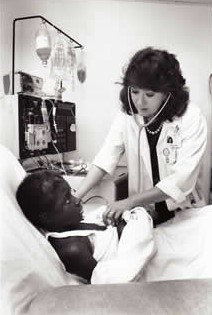
Photo credit: Children's of Alabama
When Dr. Benton became chairman, the faculty numbered 12, but by the end of his tenure it had reached 40.
In his 1976-1977 annual report, Dr. Benton noted that the department had grown to include 16 specialties ranging from adolescent medicine to pediatric pulmonary medicine. While some areas only had one faculty member, infectious diseases had five members and general pediatrics had four.
In 1977, Dr. Carden Johnston became the director of the Ambulatory Care Section and Dr. Edward C. Kohaut was recruited to direct the Pediatric Nephrology Division. Benton’s report also mentioned the department’s effort to recruit female and minority faculty and house officers. He reported that Drs. Kathleen Nelson and Mary Pat Hemstreet had joined the department. Dr. Nelson joined the Division of General Pediatrics, which she subsequently led before becoming Associate Dean of students in the Medical School. Dr. Hemstreet became the director of the Allergy Division and subsequently became Associate Director of the residency training program. In 1976, two African Americans were among the pediatric intern class.
During his tenure, several former residents returned to join the faculty. Among these were Drs. Whitley (ID), Raymond Lyrene (Pulmonary), Ed Polhill (Emergency Department [ED]), Robert Castleberry (Hematology/Oncology), Coralie Haines (General Pediatrics/Allergy), Scooter Haywood (Neonatology) and Joy Atchison (Endocrinology). Others went into the private practice of pediatrics in Birmingham and throughout Alabama.
The Division of Neurology expanded with the additions of Dr. O. Carter Snead in 1977 and Dr. Gary J. Myers in 1978. Dr. Myers had a joint appointment as associate director of the Center for Developmental and Learning Disorders (now Sparks Center). He subsequently became the director of the center (1980) and remained on the faculty until 1990 when he returned to the University of Rochester to pursue his NIH funded studies on the effect of methylmercury in human populations, a program that is still ongoing in the Seychelles Islands. Dr. Carter Snead was recruited in the early nineties to head the Division of Neurology at the Hospital for Sick Children in Toronto.
In 1977, the Division of Hematology/Oncology was headed by Dr. William M. Crist after the resignation of Dr. Hernan Moreno. Dr. Robert Castleberry joined the division in 1977, along with Dr. James C. Dearth in 1979.
-
Snapshot of the Clinical Services at Children's Hospital in the 1970s
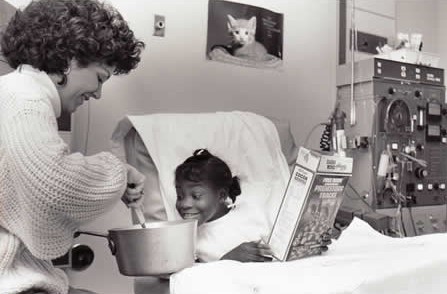
Photo credit: Children's of Alabama
In the late 1970s, Children’s Hospital had 160 inpatient beds divided into medical, surgical and adolescent services. Approximately 9,000 inpatients were cared for annually. The medical service was divided into two teams, Blue and Green. The Green Team was led by Ralph Tiller and the Blue Team by Dr. Paul Palmisano, plus rotating faculty from the ID division and general pediatrics division.
The emergency room had approximately 20,000 visits annually and the general pediatric clinic another 8,000 visits. Both were staffed by faculty during the day and by residents who covered the unit for 24 hour shifts.
The 1980s
In 1980, Dr. Rich Whitley was appointed vice-chairman to assist in management of academic functions. The research portfolio reached $5.6 million in extramural support with nearly half coming from the federal government. The faculty of the department numbered 38, with 16 professors, nine associate professors and 13 assistant professors. On October 1, 1981, the Department of Pediatrics joined the Health Services Foundation (HSF) with Dr. Benton serving on its Advisory Committee.
Over the course of the decade there would be three leadership changes for the Department and expansion of the faculty to alleviate shortages in many divisions.
At the end of fiscal year 1988, the major sources of revenue for the department were: clinical revenues $4.7 million, research (grants and contracts) $4.6 million and teaching (state allocation) $2.1 million. The total revenues for the department was $14 million.
- 1981- New Children's Hospital Building is Built
- 1983- Dr. Benton Steps Down as Chairman
- 1984- Hugh Dillon Becomes Chairman
- The Department's Dedication to Academic Excellence
- Residency Program Success
- 1989- Dr. Stagno Becomes Chairman
- Aggressive Recruitment of Faculty
- Pediatric Research Institute is Created
- Dillon Research Laboratory is Built
- Faculty Highlights
-
1981- New Children's Hospital Building is Built

Photo credit: Children's of Alabama
Children’s opened a new building tower in 1981 that allowed the department to bring the majority of the faculty together for the first time in 12 years.
In his communication with the dean and president of the University, Dr. Dillon (1986) indicated that the majority of hospital admissions at Children’s Hospital were medical admissions, and of these, the overwhelming majority were patients of our attending faculty. He pointed out that Children’s Hospital had emerged as a university class children’s medical center even though neonatology, cardiology and cardiovascular surgery remained at University Hospital. He reported that the department had expanded subspecialty clinics and developed programs in hematology-oncology, cystic fibrosis, and dialysis for children with end stage renal diseases. While the medical staff remained open, many community physicians had begun to admit their patients directly to the teaching service. He also expressed the opinion that it would be detrimental to the future of the department and Children’s Hospital to move ambulatory services to the new proposed ambulatory clinic being planned by the HSF. This was particularly controversial as the department was expected to contribute hard earned dollars to build such a clinic. Finally, he explained that in 1981, Children’s had opened a new building tower that allowed the department to bring the majority of the faculty together for the first time in 12 years.
-
1983- Dr. Benton Steps Down as Chairman
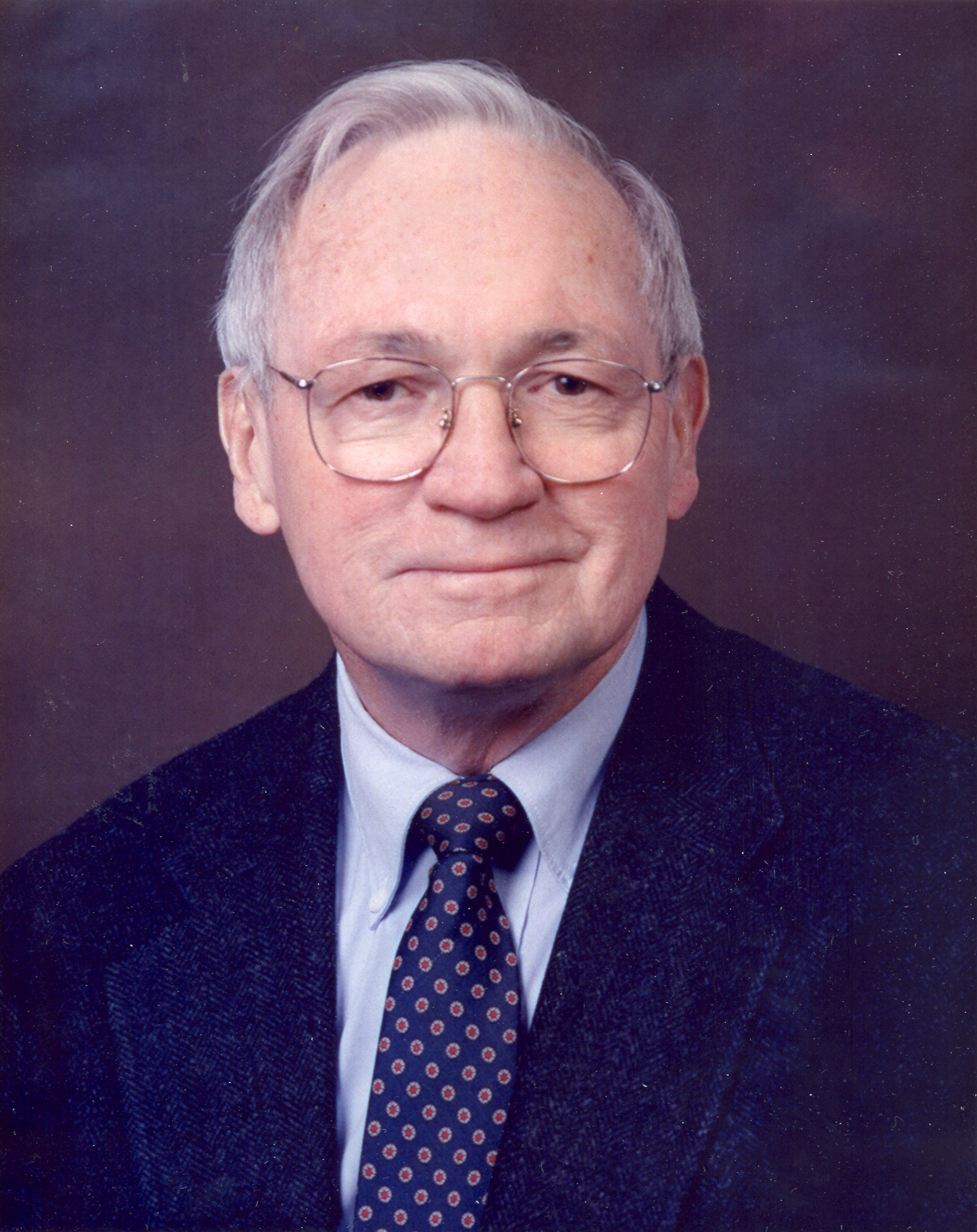
Dr. Benton stepped down as chairman in 1983 after serving for 15 years, but remained in his role as Division Director of Neurology until 1992. He was succeeded in an interim capacity by Dr. Richard Whitley.
-
1984- Hugh Dillon Becomes Chairman
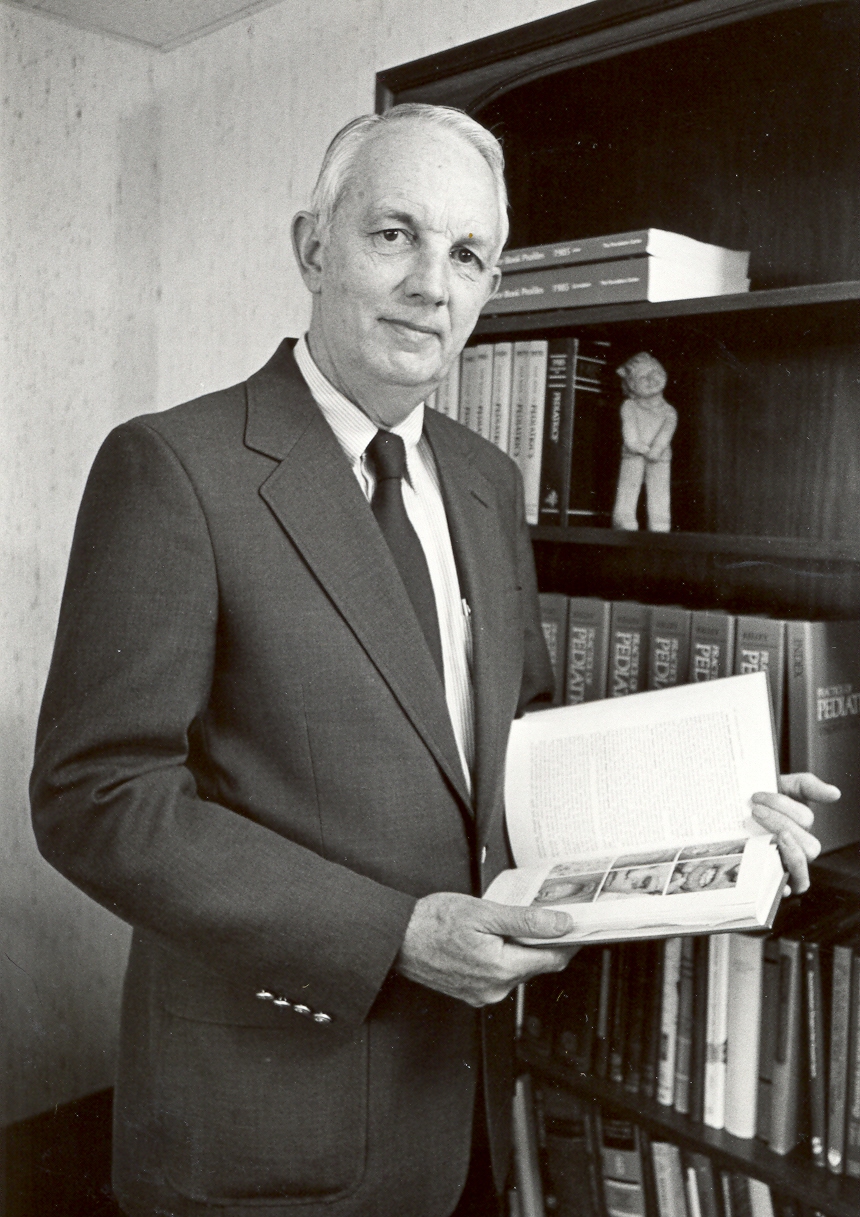
On January 1, 1984, Dr. Hugh Dillion became the departmental chair.
-
The Department's Dedication to Academic Excellence
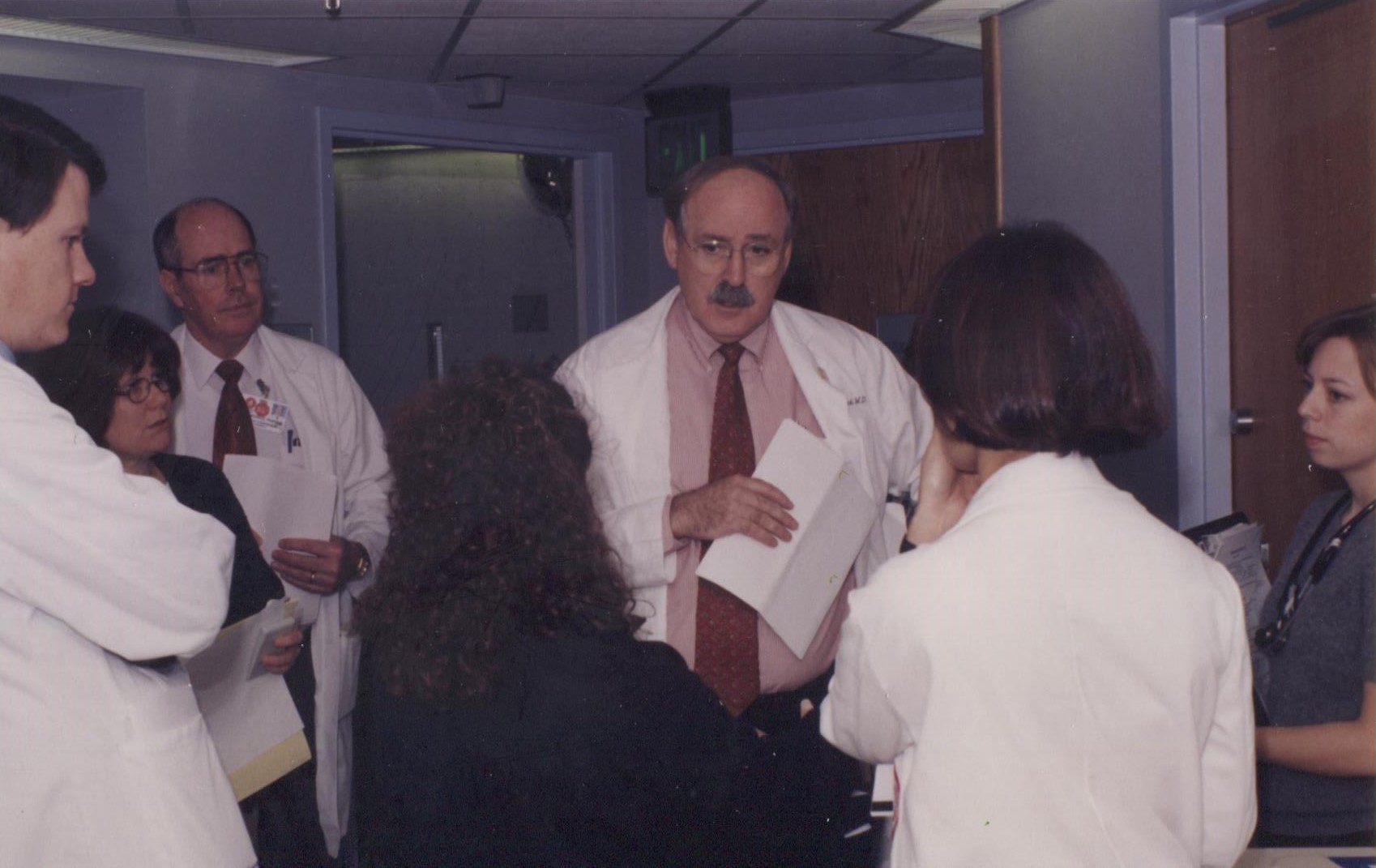
In 1986, Dr. Hugh C. Dillion wrote Dr. McCallum, then President of UAB, that “The Department of Pediatrics and the Children’s Hospital bear an intimate relationship to one another. Our department has been headquartered here (at Children’s) since 1968. The affiliation agreement between the Board (of Trustees) of the Children’s Hospital and the University has proven of mutual benefit to both institutions. The faculty of the Department of Pediatrics had gradually grown over the years and has achieved significant national recognition and stature. Our pediatric residency program has become increasingly popular and very competitive. The quality of our faculty and the excellent clinical facilities of The Children’s Hospital contribute greatly to make this an outstanding pediatric educational program.”
He wanted the school’s administration to appreciate the dedication of the pediatric faculty to academic excellence. He noted that “not less than 20% of our faculty members” had served on either NIH study sections or councils or in comparable roles with the Department of Maternal and Child Health. He added that several faculty, including himself, had even chaired such programs. He pointed out that despite numerous and impressive accomplishments, the department still had a need for additional faculty members.
-
Residency Program Success
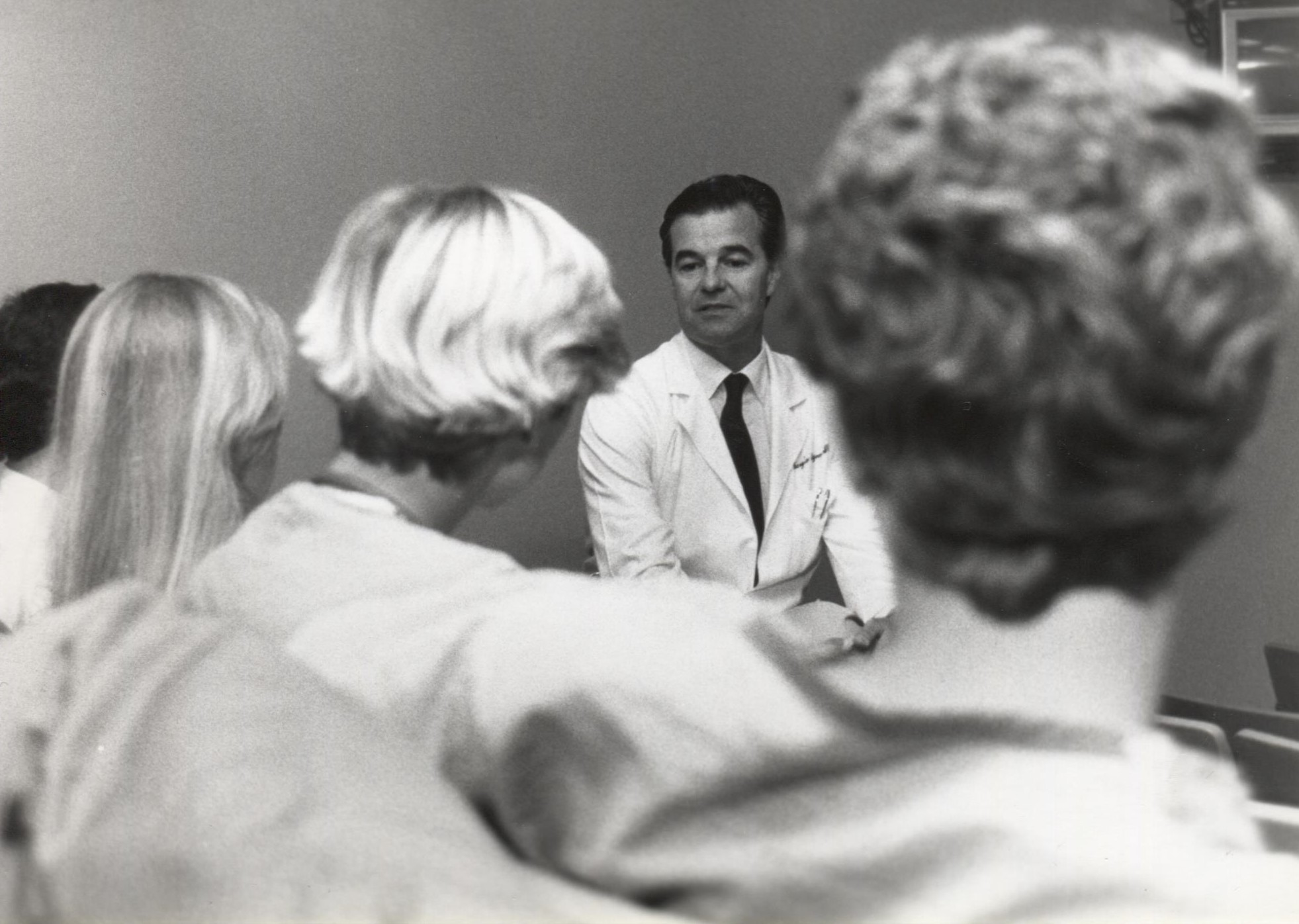
In a 1987 interview with the Birmingham News, Dr. Dillion indicated that while there remained a desperate need for an increase in faculty, the residency program now ranked among the nation’s best. He spoke with pride about pediatrics having interviewed more than 100 intern applicants for the 13 available spots that year. This was at a time when prestigious pediatric programs at other institutions were unable to fill their positions. At the time, Drs. Sergio Stagno and Mary Pat Hemstreet were the director and associate director of residency training program, respectively.
-
1989- Dr. Stagno Becomes Chairman
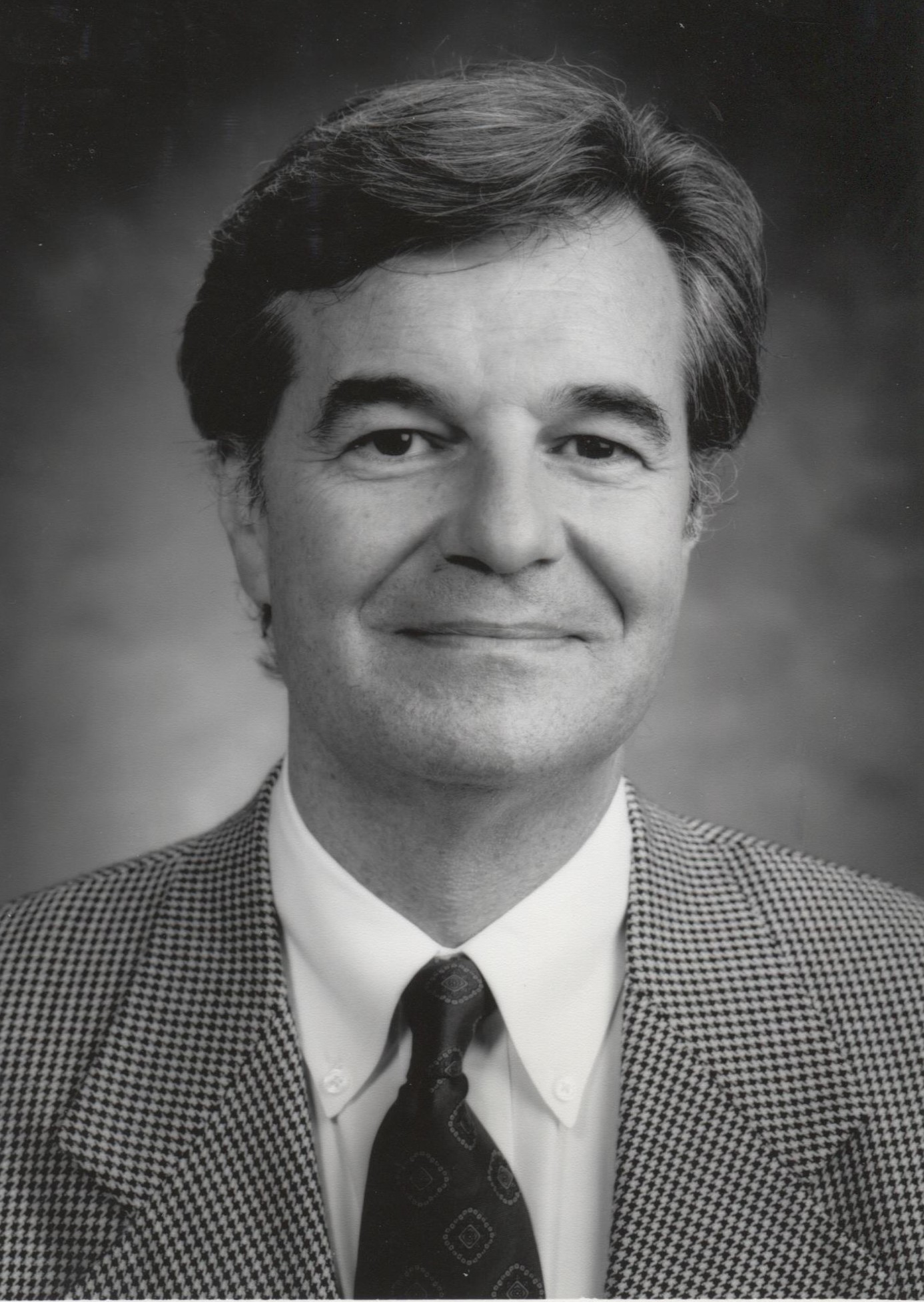
In March of 1988, Dr. Dillion took a temporary leave of absence, and Dean Pittman appointed Dr. Sergio Stagno, who was the director if the residency training program and director of the diagnostic virology laboratory, as acting chairman. Unfortunately, in July of that year Dr. Dillion died unexpectedly and the School of Medicine appointed a search committee for a new chair.
Dr. Stagno’s appointment as Chair of the Department and Physician in Chief of the Children’s Hospital became official in 1989.
In his letter of offer, the dean authorized Dr. Stagno to proceed with the expansion of the faculty as resources (funds and space) allowed it. In response to Dr. Stagno’s request, the School of Medicine agreed to transfer the Division of Cardiology from the Department of Surgery to Pediatrics and also agreed that the cost centers of medical genetics, immunology/rheumatology/allergy, and neurology were to remain in pediatrics irrespective of future location. In addition, space for research was secured, and the first two endowed chairs were announced (Ireland and Loeb).
The letter of agreement between Drs. Pittman and Stagno also confirmed the retention of the Diagnostic Virology Lab within the Division of Infectious Diseases and the support from the dean to proceed with the application for a branch of UAB’s General Clinical Research Center (GCRC) to be located at Children’s Hospital. In addition to an increase in recurrent fund allocations to the department, Dean Pittman concurred with the desire of pediatrics to have a seat on the executive committee of the HSF, thus creating a larger role in the medical center. He committed to the achievement of this goal.
Twenty-four hours after the official announcement of the appointment as chair, Dr. Stagno received a visit from Drs. Mac Bargeron (Division Director of Cardiology), Ed Colvin, and Mike McConnell (newest member of the cardiology division) who expressed delight in a move from surgery to pediatrics. As a demonstration of their support, the new Division of Pediatric Cardiology committed $800,000 to the establishment of an endowed chair in cardiology.
-
Aggressive Recruitment of Faculty
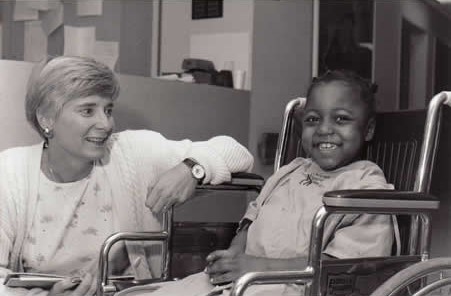
Photo credit: Children's of Alabama
After Dr. Dillon's leave of abscence, the dean organized a site-visit by outside experts to analyze the challenges facing the department. The team included Drs. David Korn, Donald Medearis, and Beverly Morgan, and was chaired by Dr. Stanton Segal. Representing Children’s Hospital was Mr. John Binswanger, a member of the Board.
The most critical of the several challenges facing the department was the shortage of faculty in many divisions. The faculty numbered 42 members in 1988, and there were several members who announced their desire to retire or relocate.
In neonatology, George Cassady, the director of the division, announced his retirement, and Dr. Clint Jointer relocated to Cincinnati. Dr. Joe Phillips vacillated on outside offers to relocate. Dr. Dennis Crouse, who had just joined the division, required 75% time protected for research as he was funded by a Clinical Investigator Award from the NIH. The fourth member of the division was Dr. Raymond Lyrene who had trained at the University of Washington/Children’s Hospital in Seattle and directed the infant/neonatal ICU at Children’s Hospital, a unit that had expanded from 8 to 22 beds by the spring of 1989. With the announcement from Ralph Tiller of his impending retirement, Dr. Stagno asked Dr. Lyrene to become the acting division director for the pulmonary division as he was the most qualified leader in this field. The other members of the division were Dana Brasfield who was doing a sabbatical in medical genetics and Robert Schumacher. Fortunately, Dr. James Royall decided to stay in the division after the completion of his training.
With the departure of Dr. Jose Mestre to establish his private practice in Birmingham, no faculty remained in gastroenterology. In the Division of Immunology/Rheumatology, Dr. Joe Butler, who had trained at the NIH, decided to establish a private practice in general pediatrics. In endocrinology, Dr. Russell Cunningham remained a solo practitioner. Neurology was also very short of staff with Drs. Benton, Gary Myers, and Carter Snead. Fortunately, Dr. Lane Rutledge was scheduled to join the division after completing her fellowship in neurology/genetics and inborn errors of metabolism. In critical care, Dr. Sam Tilden had just joined the faculty but was alone and in desperate need to expand his team. The Divisions of Emergency Medicine and General Pediatrics were also short of staff, and the coverage of the ED was woefully inadequate, with faculty covering only one 8 hour shift during the day. The rest of the time the coverage was provided by residents.
The Division of Nephrology had expanded to two faculty members as Dr. Bryson Waldo returned from the University of Cincinnati to join Dr. Ed Kohaut. Even infectious diseases faced significant challenges in bacteriology after the untimely death of Dr. Dillon. The only two remaining members of this section, Barry Gray and the most recent addition, Dr. Marilyn Crain, were very junior and faced challenges managing the research portfolio. Hematology/oncology was more stable with the addition of Dr. Roger Berkow and Dr. Tom Howard in 1984.
Faced with this information, Dean Pittman authorized Dr. Stagno to pursue an aggressive recruiting program, and during the next six months, eight faculty members were recruited.
-
Pediatric Research Institute is Created
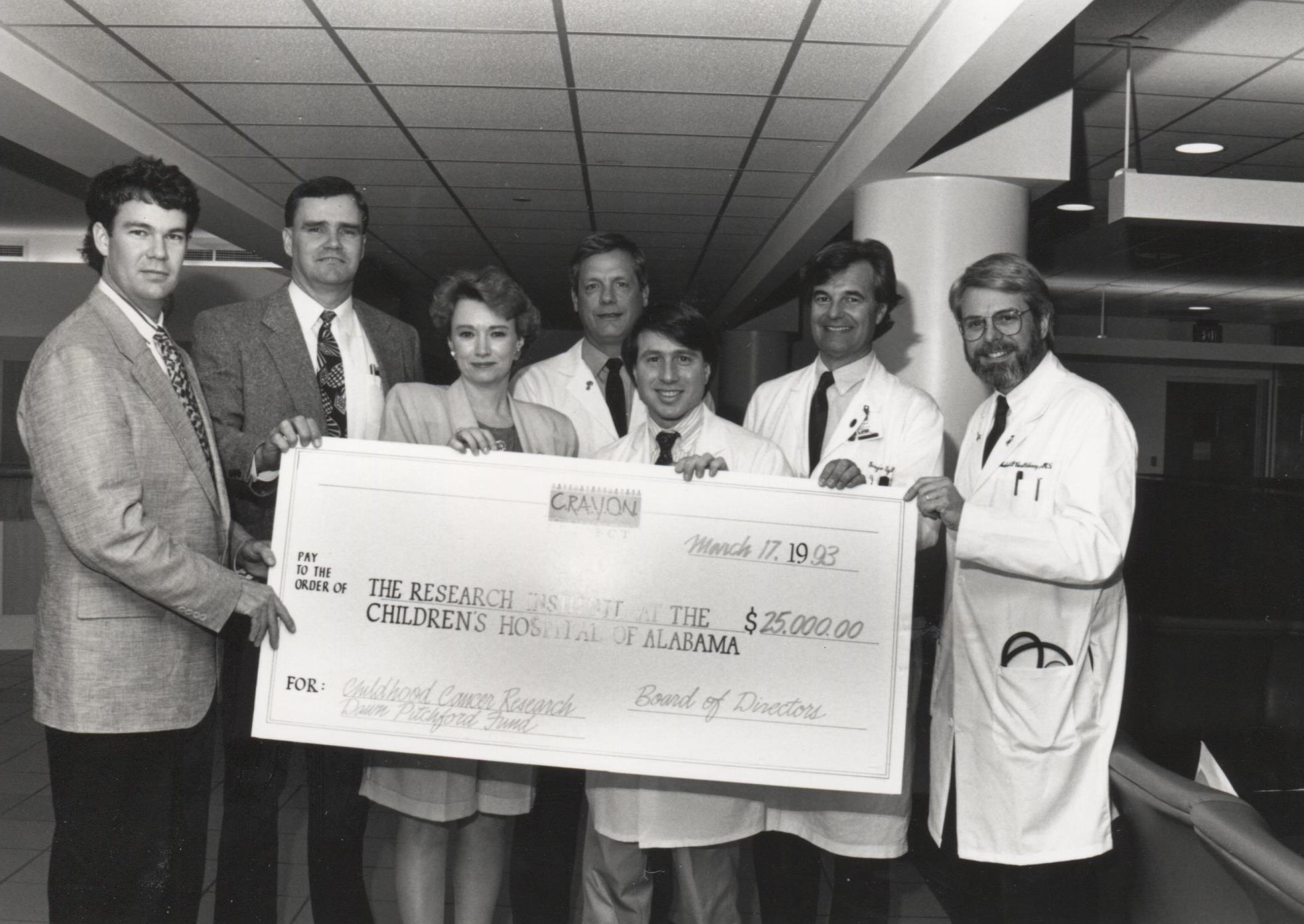
Perhaps the decision of greatest impact after Dr. Stagno became the chair, was the creation of the Pediatric Research Institute (PRI) now the Kaul Pediatric Research Institute (KPRI) based at Children’s Hospital and funded from proceeds of the Children’s Miracle Network Telethon. The PRI was envisioned as a program to fund and support research efforts of the faculty based on a competitive, rigorous selection process. The program was approved by the Board of Trustees of the hospital and by Dr. Dearth, acting as medical director and CEO of the hospital. In addition, Children’s Hospital committed recurring funds to support division directors and other faculty members in positions of significant responsibility and for recruiting new faculty.
-
Dillon Research Laboratory is Built
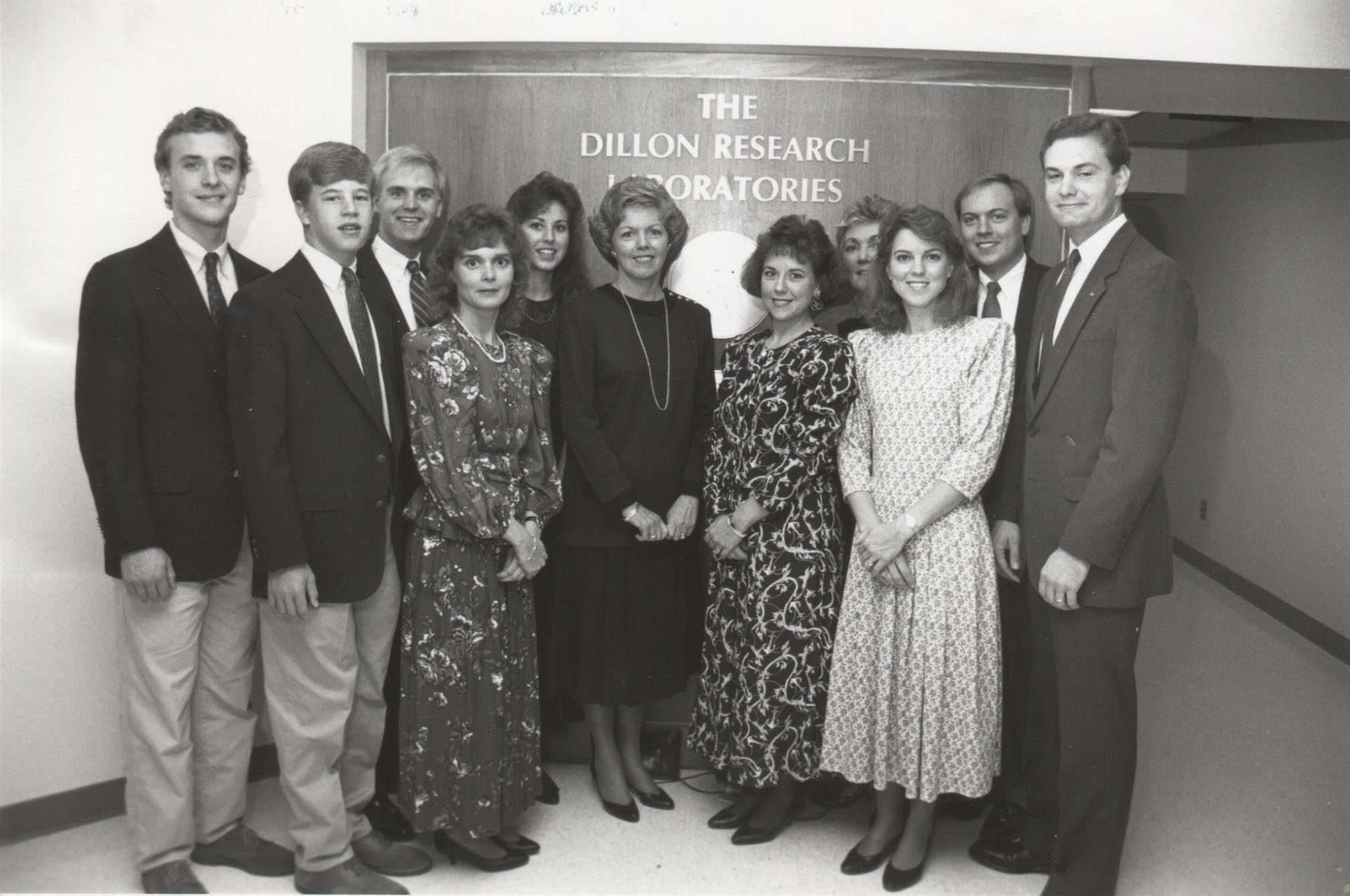
The hospital committed to building a research laboratory with approximately 10,000 square feet. The office of the Vice President of Health Affairs derived a formula to pay the rent for this new unit. This new laboratory came to be known as the Dillion Research Laboratory in honor of the former chairman’s work and dedication.
-
Faculty Highlights
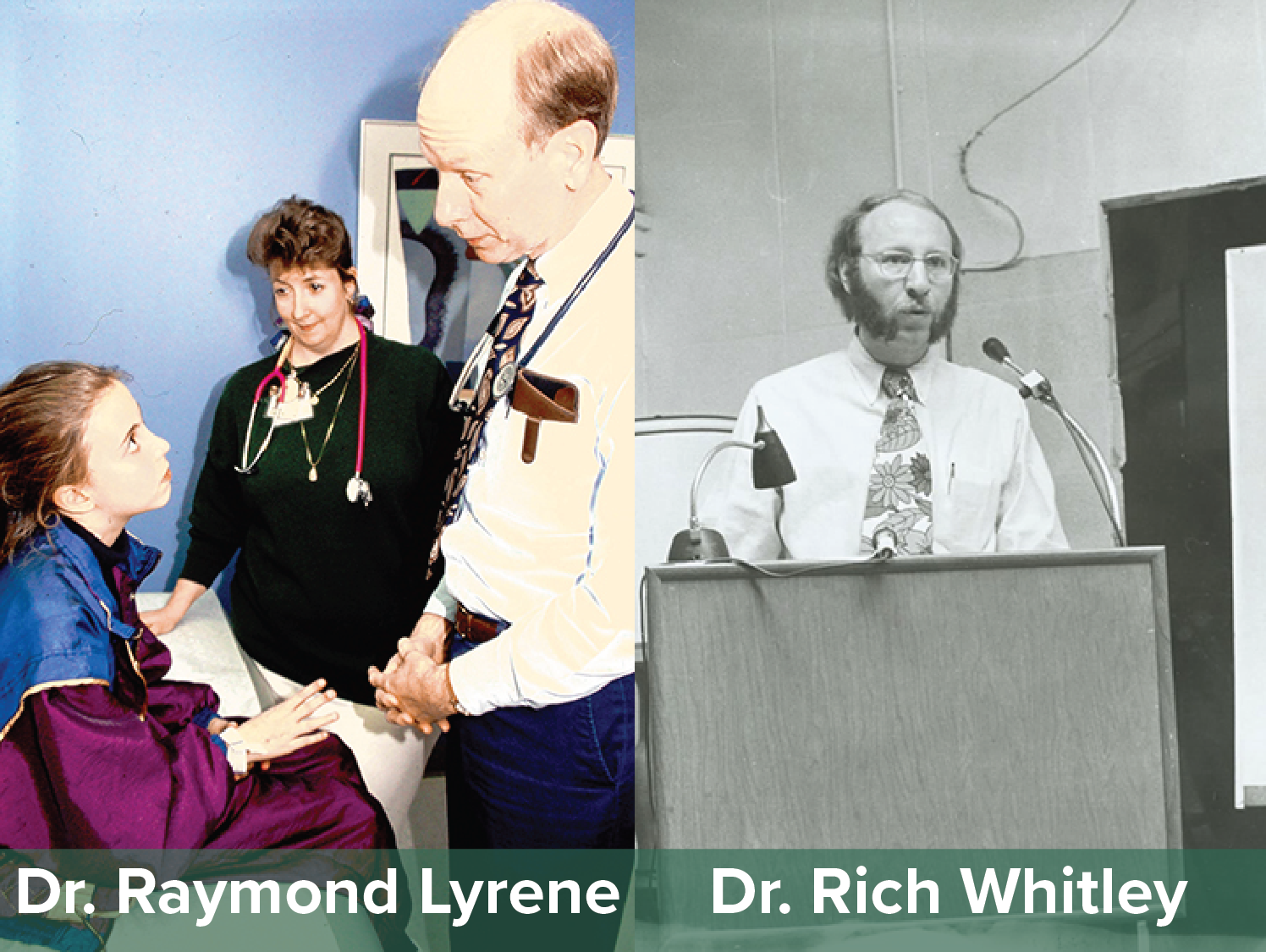
Dr. Raymond Lyrene
Dr. Lyrene proved to be an outstanding leader and was very successful in building the Division of Pulmonary Medicine by attracting excellent faculty, expanding the Cystic Fibrosis Center, closely collaborating with the counterpart adult division and strengthening the links with the cystic fibrosis research team at UAB. During his tenure, he was the Director of the Pediatric Pulmonary Center, a Maternal and Child Health funded training grant, the purpose of which was to train graduate level health care professionals in the area of pediatric respiratory diseases. The grant has been successfully renewed for over 25 years. During Dr. Lyrene’s tenure, the ACGME approved the pediatric pulmonary fellowship program. Near the end of his tenure he and the faculty in the pulmonology division established a Sleep Disorders Center and secured a training grant for young pulmonologists.
His clinical skills, soft spoken leadership style and commitment to the academic mission of the department and Children’s of Alabama are to this day legendary. After his retirement in 2008, Dr. Lyrene became a volunteer at Children’s Hospital. In addition, he continues to serve his church by participating in missionary work in South Sudan.
Dr. Richard Whitley
As the faculty grew, so did the Department’s reputation for clinical, teaching and research excellence. Dr. Rich Whitley received the American Academy of Pediatrics Excellence in Pediatrics Research Award for his outstanding work in the development of antiviral therapeutics. This award was one of many that Dr. Whitley has received for his remarkable contributions to the field of infectious diseases. Most recently, he has been selected by the Infectious Diseases Society of America to receive the 2018 Alexander Fleming Award for Lifetime Achievement. Whitley has been continuously funded by the NIH for the multicenter studies of antiviral therapies. He has served on multiple study sections and councils at the NIH and over the years has become the top funded investigator at UAB, bringing in excess of $10 million annually. He is a highly effective educator and a superior clinician who has been listed in the Best Doctors in America since the inception of this program. He has served as an exemplary role model to many medical students, residents and infectious diseases fellows. He is a sought after speaker at national and international meetings, and his contributions to the scientific literature is rapidly approaching 1,000 articles, books and book chapters. Despite the multiple offers and opportunities available to Dr. Whitley over the years, he elected to stay here and help build the Department of Pediatrics. His commitment has been greatly appreciated by the leadership of the department and the medical center.
The 1990s
The 1990s saw further expansion of the Department under the leadership of Dr. Stagno. The faculty continued to grow and patient care revenue and research awards increased.
-
1990- Three Department Faculty Receive National Awards
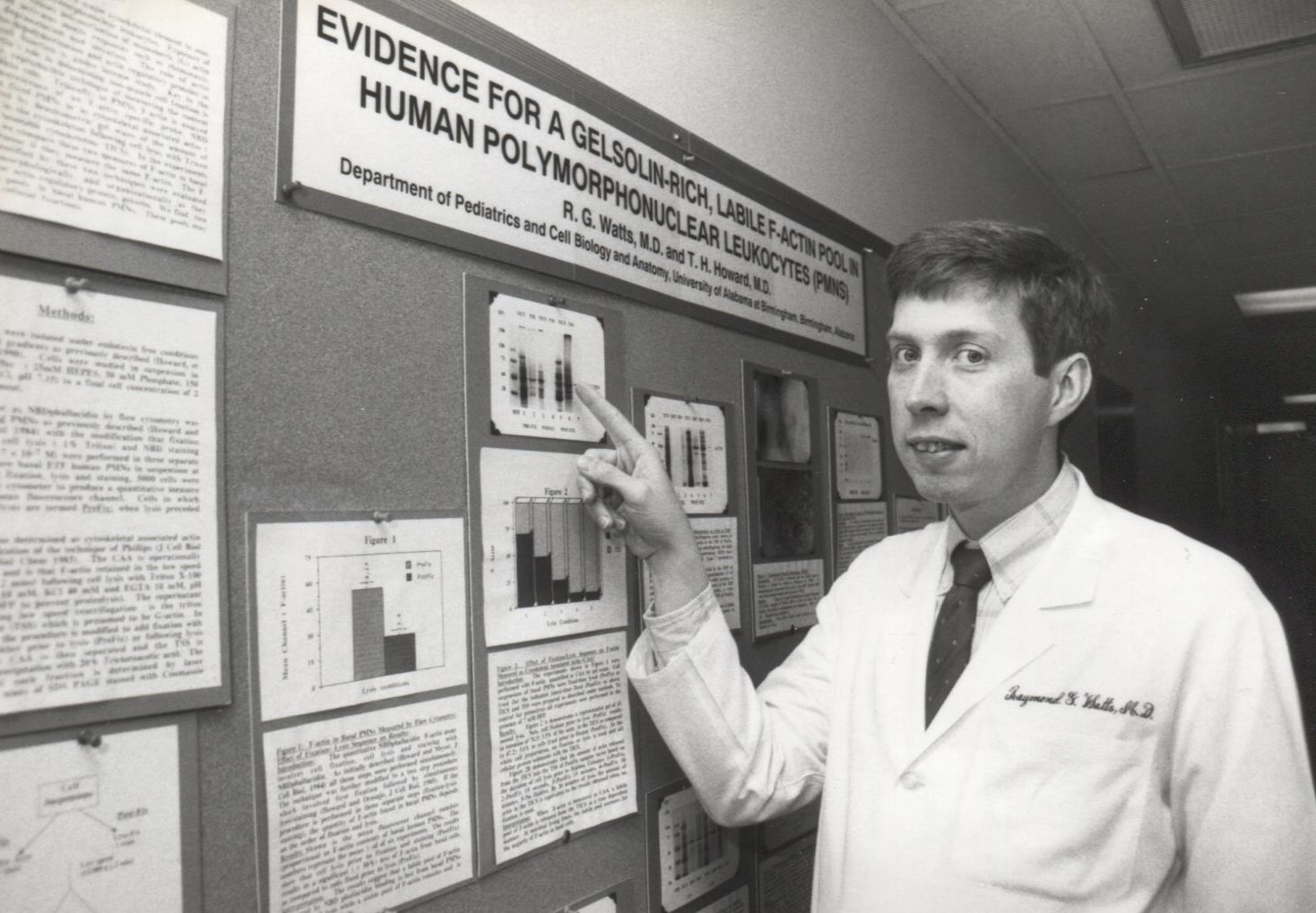
In 1990, Dr. Kathleen Nelson became President Elect of the Ambulatory Pediatric Association.
Dr. Marilyn Crain, director of the HIV clinic received a citation from the Health Care Financing Administration for her extensive and compassionate service to children with HIV and AIDS.
The Society for Pediatric Research gave the Young Investigator Award to Raymond G. Watts (pictured) who, after completing his fellowship, joined the Division of Hematology/Oncology.
-
1991- Wally Carlo Becomes Division Director for Neonatology
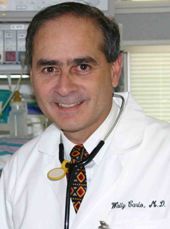
In 1991, the department was successful in recruiting Dr. Wally Carlo from Rainbow Children’s Hospital in Cleveland to lead the Division of Neonatology. The arrival of Dr. Carlo was one of the most significant additions to the faculty because of his strong leadership skills and “can do attitude.” He immediately set up an open-door policy for all neonates from any referring hospital. He committed himself to the highest standards of care, strong research and collaboration with institutions across the USA and abroad. Dr. Carlo successfully secured a multi-institutional NIH grant for the Neonatal Network, plus many other grants, to support his and his collaborators research. He has become an internationally renowned neonatologist for his landmark studies in Zambia, India and Latin America. Dr. Carlo also created a system whereby a group of neonatologists in his division care for all neonates born at six other community hospitals, allowing for high standard of care and judicious use of resources. This model is still operative today and transformed the Neonatology Division into one of the top such units in the country in terms of productivity per faculty, size of research portfolio, international recognition and overall reputation.
-
Grow Our Own Program

Faced with significant clinical and academic demands in the face of very limited funding to hire outstanding physicians in the late 1980s and during the 1990s, Dr. Stagno implemented a program that most faculty recognize by the name “Grow our Own.” The vision and goals were to train young physicians beginning at the level of residents, followed by subspecialty fellows, and young faculty. At a later stage this was expanded to include support for UAB medical students who wanted to do research during the summer with mentoring from pediatric faculty.
The most significant examples of this strategy included: Dixon Fellowship Award, KPRI Grant Funding, Child Health Research Center, Founders Funt Grant Support and the Russell Cunningham Memorial Research Scholarships.
-
Dixon Fellowship Award
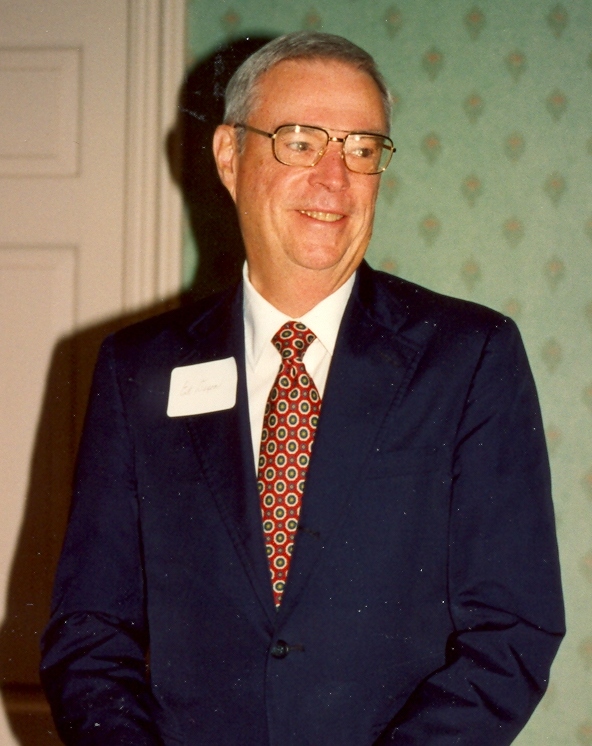
The Dixon Fellowships were endowed in 1988 by the Edwin Dixon (pictured) family of Birmingham, Alabama. The Dixon Fellowships are competitive awards for subspecialty training. They are fellow friendly and last one to two years. In addition to a stipend, the fellowship provides annual discretionary funds for academic enrichment. There are five Dixon Fellow training slots and funding for the program is shared between the Dixon Foundation and the Department of Pediatrics. Since the establishment of the fellowship, 73 awards have been given. Of the awardees, more than 50% are now active faculty within the Department. Among the alumni, there are ten division chiefs, seven endowed chairs, one clerkship director, five fellowship program directors, one residency training program co-director, one center director, and one associate dean.
The selection of fellows is made by a committee composed of Dixon family members and five former Dixon Fellows who evaluate a formal proposal submitted by the fellows with letters from their future mentors and division directors. Awardees are announced at the end of May each year during the delivery of the Bradford Dean Dixon Memorial Lectureship. To date, 36 lectures have been presented at Grand Rounds by notable leaders in the field of pediatrics.
Click here for a list of Dixon Lecturers
-
1991- Child Health Research Center (CHRC) is Established

The K12 (CHRC) NIH award from NICHD was first obtained in 1991, and the department was able to renew the grant for four cycles (20 years). This award allowed the department to support the training of physician scientists who were within the first three years of their faculty appointment. The award was competitive with selection by a scientific review/advisory group. Once awarded, it provided up to $100,000 per year for up to three years. Grantees were required to present their work either in poster session or platform presentation at the national meeting of CHRC centers. A total of thirty awards were granted. Of those awarded, fifteen became full-time faculty in the department.
-
1993- First KPRI Grants Awarded

When Dr. Stagno was appointed chair of the pediatric department and physician in chief in 1989, he proposed to the Board of Trustees of the Children’s Hospital of Alabama (COA) the creation of what was initially known as the Pediatric Research Institute. The main purpose was to provide internal funding for junior faculty who were just beginning their academic careers. The initial funding came from proceeds (10%) of the telethon, with half committed to an endowment, and the other half to support grants submitted by faculty or professionals working at Children’s of Alabama. These included UAB faculty in pediatrics, surgery, and psychiatry, as well as nurses, social workers, and nutritionists who were employed by the hospital.
Following the donation of an initial $5 million from the Kaul Foundation to increase the endowment, the Board of Trustees changed the name of this program to the Kaul Pediatric Research Institute (KPRI). Initially, four two- year grants of $20,000 per year were awarded. With the increase of the contributions to the KPRI and the growth of the endowment, seven grants are now awarded each year, and the funding has increased to $35,000 each for five new investigators and two awards at $50,000 each for senior investigators.
The program is competitive and peer-reviewed in an NIH format. The first grants were awarded in 1993. To date 122 grants have been awarded to a total 88 investigators for a total investment of $7,647,000. The return on the investment has been outstanding with forty-two awardees remaining with UAB Pediatrics as faculty. During the period 2010-2016, KPRI faculty awards totaled $2.66 million and have resulted in $8.75 million in extramural funding directly associated with the KPRI project and a total of $25.85 million in extramural funding to these investigators.
Photo credit: Children's of Alabama
-
Continued Growth of the Department
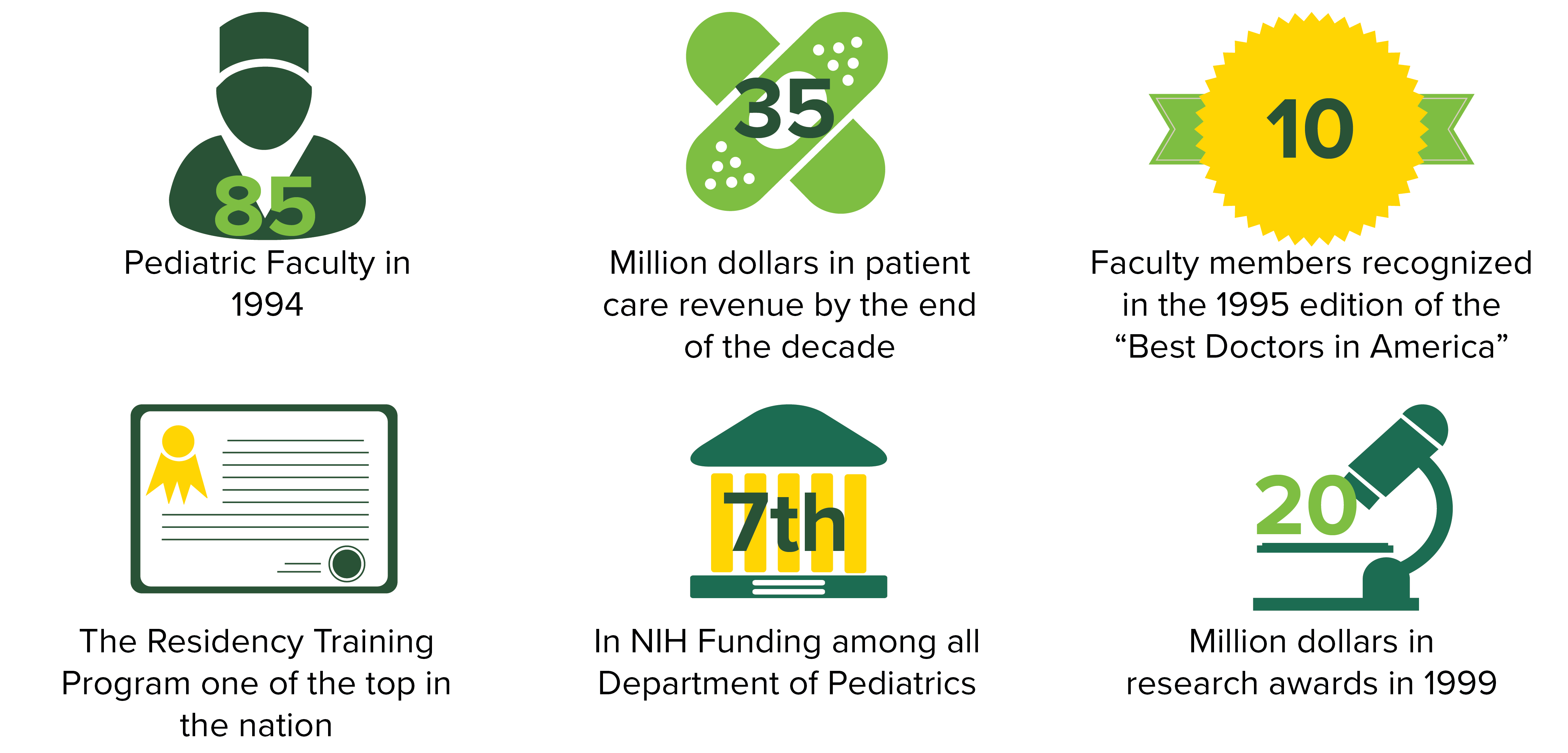
By 1994, the pediatric faculty numbered 85, having grown from 20 in 1974 and 42 in 1988. The Residency Training Program enjoyed a reputation as one of the nation’s top programs and had achieved an outstanding record for its residents receiving certification. Drs. Michele Holloway Nichols and Raymond G. Watts, who had been assistant program directors, assumed the full responsibility for managing the residency training program in 1994.
The 1995 edition of the “Best Doctors in America” recognized 10 faculty members of the Department of Pediatrics as among the best in their subspecialties. Patient care revenues were in excess of $35 million by the end of the decade.
Research awards continued to grow and almost tripled from $7 million in 1989 to nearly $20 million is 1999. The NIH ranking among all departments of pediatrics went from 18 to 7, however during the decade there was fluctuation but always below position number 24.
The 2000s
As a new millenium started the Department continued to grow. By 2003, the faculty had grown to 97 members, including 38 women. Forty-two percent of the faculty had secondary appointments in other departments within the School of Medicine. New facilities were built and unique patient services were established.
- 2000- Children's Harbor Center Opens
- 2000- Pediatric Hospital Medicine Service Established
- 2000- Bruno Pediatric Diabetes Education Center is Established
- 2002- Global Health Program Expands
- 2002- Division of Pediatric Rehabilitation Medicine is Established
- Centers of Excellence at Children's and UAB
- Expansion of Unique Services Available to Children in the State
- Three Faculty Appointed to National Leadership Roles
- Training Programs Success
- 2006- Pediatric Simulation Center is Established
- 2006- Founder's Fund Endowment is Established
- 2007- James Dearth Retires as CEO of Children's
- 2007- Russell Cunningham Memorial Research Scholarship is Established
- 2007- Pediatric Rheumatology Clinic Opens at Children's Hospital
- 2008- Bridge Connecting Children's Hospital to UAB Hospital Opens
-
2000- Children's Harbor Center Opens
A new century of pediatric care dawned in 2000 with the opening of the five-story Children’s Harbor Center, located on the corner of 6th Avenue South and 16th Street.The building houses the Children’s Center for Research and Innovation and Children’s Family Center. The building is bridged with the main Children’s Hospital across 6th avenue. The new facility provided three floors for research laboratories and faculty offices plus a floor for a wonderful lecture center (Bradley Lecture Hall) that offers great flexibility to accommodate small group gatherings as well as auditorium space for more than 300 attendees.
Photo credit: Children's of Alabama
-
2000- Pediatric Hospital Medicine Service Established
Pediatric Hospital Medicine began in 2000 as a service available to private practice pediatricians on a voluntary basis. The service was initially staffed by one full-time pediatrician (Dr. Cecelia Hutto) with the goal of improving admissions for referred patients, providing a consistent approach to patient care, improving communication between hospital staff and referring physicians and improving senior resident education. By 2003 admissions were 1,250 per year. The service grew in popularity and quality and is now staffed by 14 academic pediatricians under the direction of Dr. Bob Pass. Pediatric Hospital Medicine now offers a two-year fellowship program.
-
2000- Bruno Pediatric Diabetes Education Center is Established
In 1991, Mr. Joseph Bruno, a well-known community leader, made a commitment to support the establishment of a Pediatric Diabetes Center of Excellence at Children’s Hospital. The contributions from the Bruno Family Foundation were matched on a yearly basis by funds from the Department of Pediatrics and in kind support from Children’s Hospital. From the outset the goal was to establish an endowment to be managed by the recently established research institute. Only the interest generated by the endowment was to be dispersed on a yearly basis to support the Juvenile Diabetes Program.
At the time of inception, the department had only three endocrinologists to care for an expanding number of cases from the Birmingham area and from across the state of Alabama, as there were no other board certified endocrinologists outside Children’s Hospital. Dr. Russell Cunningham had more than 25 years of experience and Drs. Joycelyn Atchison and Katrina Parker were recent recruits. By the year 2000, three more faculty members were recruited - Dr. Kenneth McCormick as Division Director and Drs. Hussein Abdul-Latif and Gail Mick. The number of referrals continued to grow and the endocrinology clinic became the busiest among all ambulatory clinics within pediatrics. With the ever expanding clinical demands, a new strategy was needed. With the arrival of Dr. Ken McCormick as Division Director in June of 2000, a plan was developed to create a Pediatric Diabetes Center at the new ambulatory center at Children’s South. The center was designated as the Bruno Pediatric Diabetes Education Center. At that time the Division of Endocrinology provided care for over 1,100 children with diabetes and managed approximate 150 new cases per year referred by pediatricians from across the state of Alabama.
The new center included adequate clinic space, offices for the multidisciplinary team and rooms to facilitate the education of patients and families. The multidisciplinary team consisted of physicians, certified diabetes educators, nutritionists, social workers and psychologists. This team was integrated with staff of the Children’s Hospital Endocrinology Division, allowing for cross fertilization, expansion of services and combining inpatient care with ambulatory services as needed.
Major emphasis was devoted to developing a pediatric endocrinology training program and the pursuit of clinical and fundamental research. Dr. Ambika Ashraf was the first fellow in the newly established program and joined the faculty at the completion of her training. The “Grow our Own” approach has been successful with the addition of Drs. Mary Lauren Scott and Caroline Colvin. Faculty recruited from other academic institutions who remain on staff includes Drs. Michael Stalvey, Pallavi Iyer and Gio Beauchamp.
In subsequent years UAB proposed a Comprehensive Diabetes Center as a joint project of UAB, Children’s Hospital and community leaders committed to philanthropic efforts. The goal was to serve the needs of children and adults in Alabama with both type 1 and type 2 diabetes. The partnership was envisioned as essential to establish fundamental research, translational research and outstanding innovative clinical care programs. With the start of the Comprehensive Diabetes Center of the pediatric endocrinology clinic space, academic office and administrative space have continued to grow along with an increase in size of faculty and training program.
-
2002- Global Health Program Expands
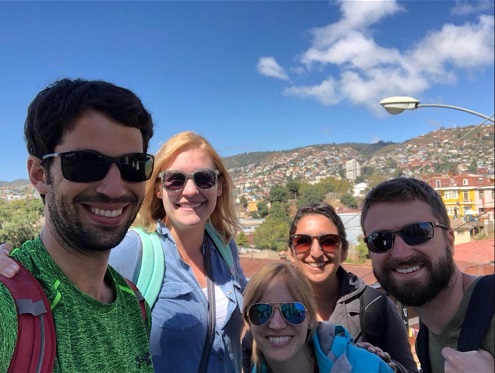
From the early 1990’s the department engaged in an international exchange with the training of physician scientists, primarily in immunology, infectious diseases and neonatology. As the department grew, opportunities for subspecialty training became available in other areas and in excess of 100 physicians, primarily from Latin America, came to Birmingham to expand their knowledge and acquire skills for periods ranging from a one month stay to three years of formal subspecialty fellowship training.
The interest in global health was expanded in 2002 by establishing an exchange of residents between the department of pediatrics’ program and the Catholic University in Santiago, Chile. Two residents from UAB Pediatrics travel to Santiago Chile every year and complete a one-month clinical rotation under the supervision of a senior faculty; two residents from Chile come to UAB/Children’s of Alabama and spend two months rotating in our sub-specialty services and/or the pediatric hospital medicine service. In 2012, this program was expanded to the Universidad del Desarrollo/Clinica Alemana with an additional two residents participating in the exchange. The stipends and travel related costs for the eight residents participating in this annual exchange is funded by the Child Health Foundation, Birmingham, Alabama. The residents who have participated in this program have gained new knowledge regarding health care delivery systems, the differences in health care resources, the spectrum of clinical problems as well as pathologies and in a broader sense how to live and work in a foreign environment. It is hoped that in the future this program can be expanded to other countries by securing funding and establishing affiliation agreements with other foreign medical schools.
-
2002- Division of Pediatric Rehabilitation Medicine is Established
In 2002, the adult Department of Rehabilitation Medicine faced financial difficulties and the long term stability of the faculty dedicated to pediatric care was in jeopardy. The Department of Pediatrics negotiated the transfer of Dr. Charlie Law, the only remaining pediatric faculty member, and started the Division of Pediatric Rehabilitation Medicine. In 2004, Dr. Drew Davis became the first fellow, and upon completion of his training, joined the faculty in 2005. In 2011, Dr. Law resigned from the faculty to join a private practice; however, he agreed to continue work part-time with Dr. Davis who had assumed the position of division director. In 2013, Dr. Paola Mendoza-Sengco joined the division upon completion of her fellowship training at Cincinnati Children’s Hospital. In 2015, Dr. Erin Swanson-Kimani joined the division after completing a combined residency in general pediatrics and physical medicine and rehabilitation at Cincinnati Children’s Hospital Medical Center.
-
Centers of Excellence at Children's and UAB
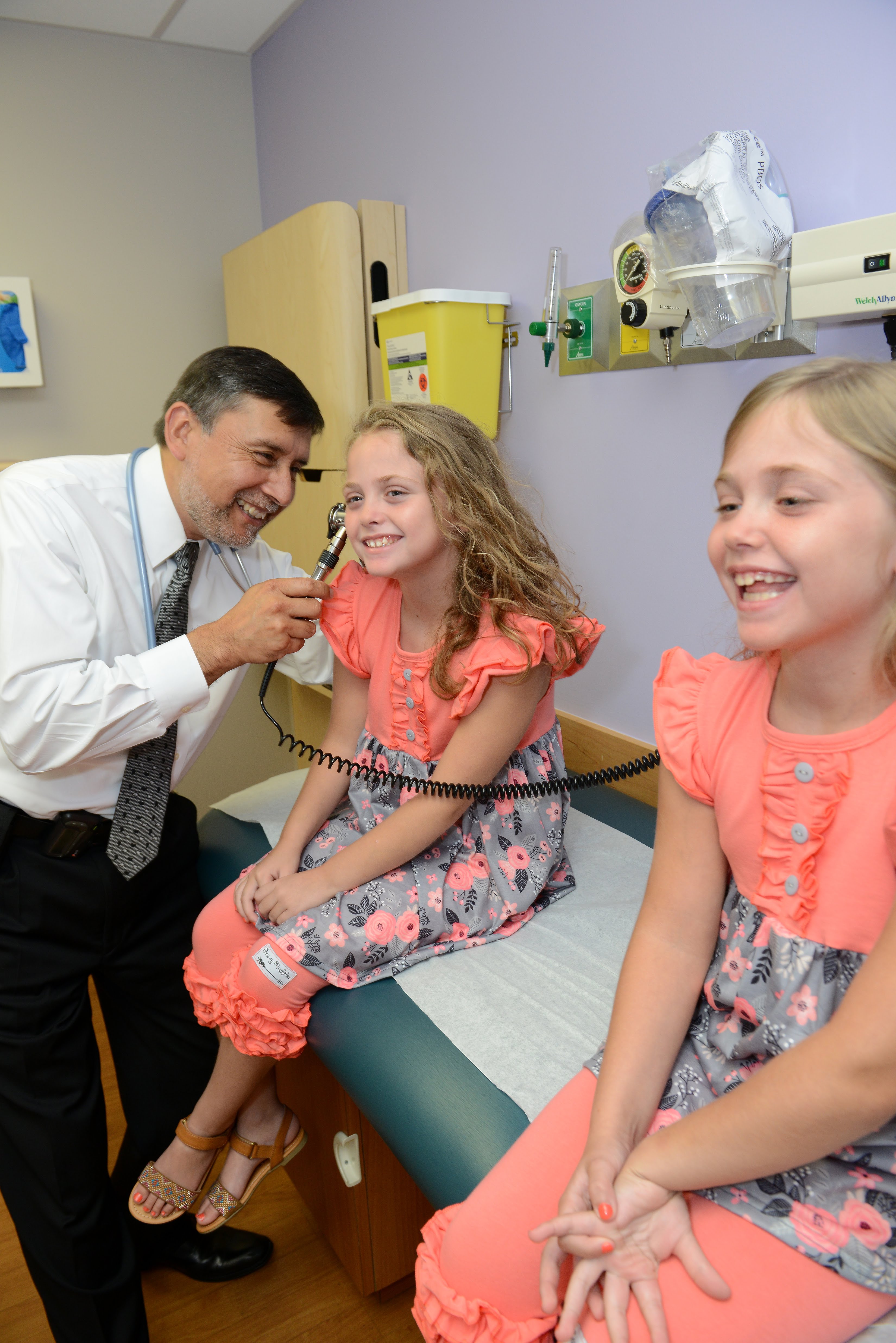
In 2002, a progress report prepared in conjunction with Children’s of Alabama described the Centers of Excellence that had emerged between 1987-2002.
Comprehensive Epilepsy Center for Children Comprehensive Pediatric Pulmonary Center Family AIDS Center Juvenile Diabetes Center Kidney Dialysis/Transplant Center Lowder Stem Cell Transplant Center Neuro-Oncology Unit Regional Neonatal Intensive Care Unit Regional Poison Information Center Child Injury Prevention Center Sleep Disorders Center Spina Bifida Clinic Photo credit: Children's of Alabama
-
Expansion of Unique Services Available to Children in the State
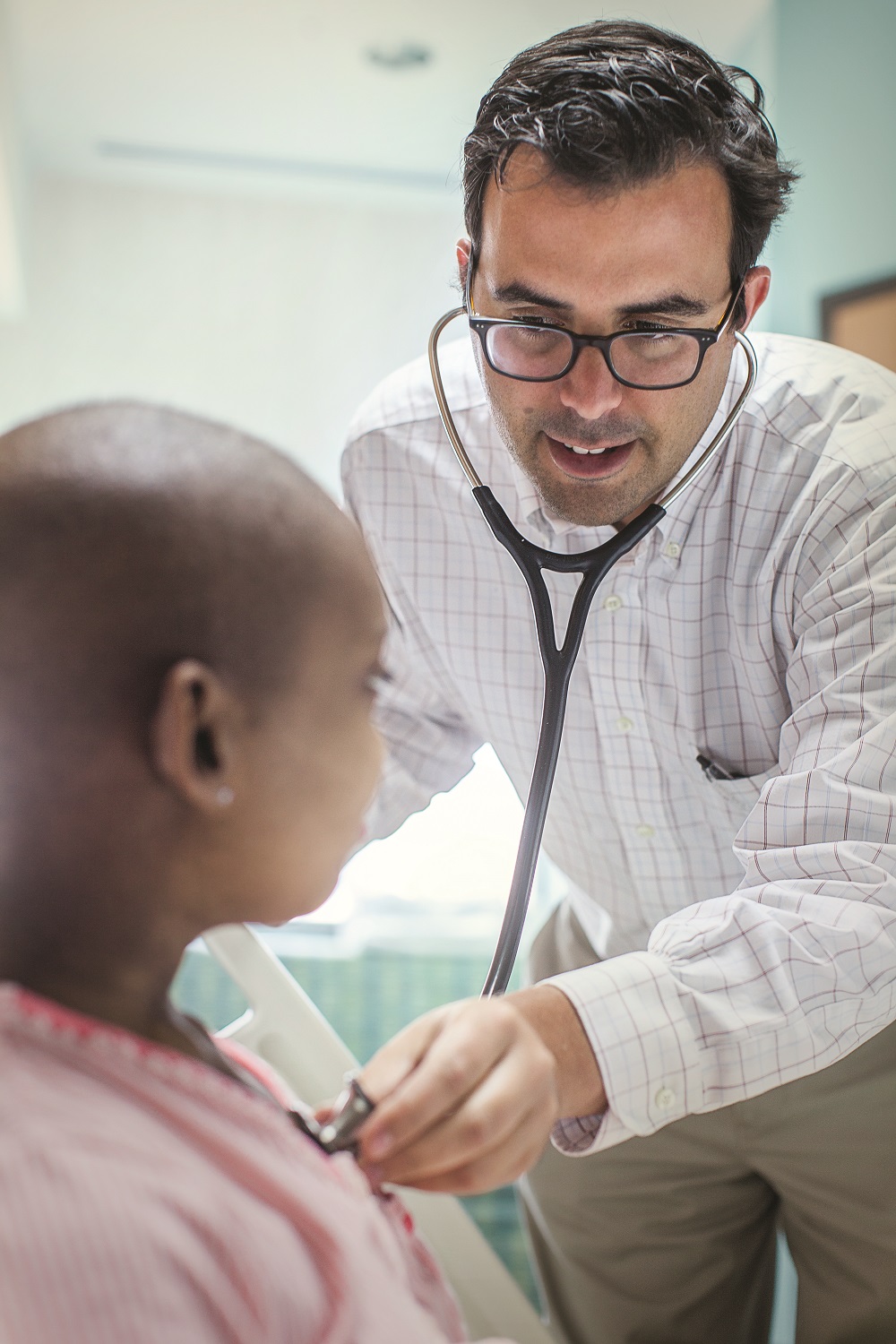
During the next decade, with the continued expansion of the faculty and support from the School of Medicine, Children’s of Alabama, and philanthropy, the department was able to expand the nature of unique services available to children in the state. These included, among others:
The Center for Childhood Cancers & Blood Disorders Specialized clinic for Immunodeficiencies Specialized Clinic for Congenital Infections Muscular Dystrophy Association Clinic Center for International Adoptions Center for Congenital Heart Diseases Clinic for Eating Disorders/Childhood Obesity Sickle Cell Anemia and Hemophilia Clinic Multiple Sclerosis Center Specialized Clinic for Rett Syndrome Deep Sedation Service Center of Excellence in Rheumatology Photo credit: Scout Branding
-
Three Faculty Appointed to National Leadership Roles
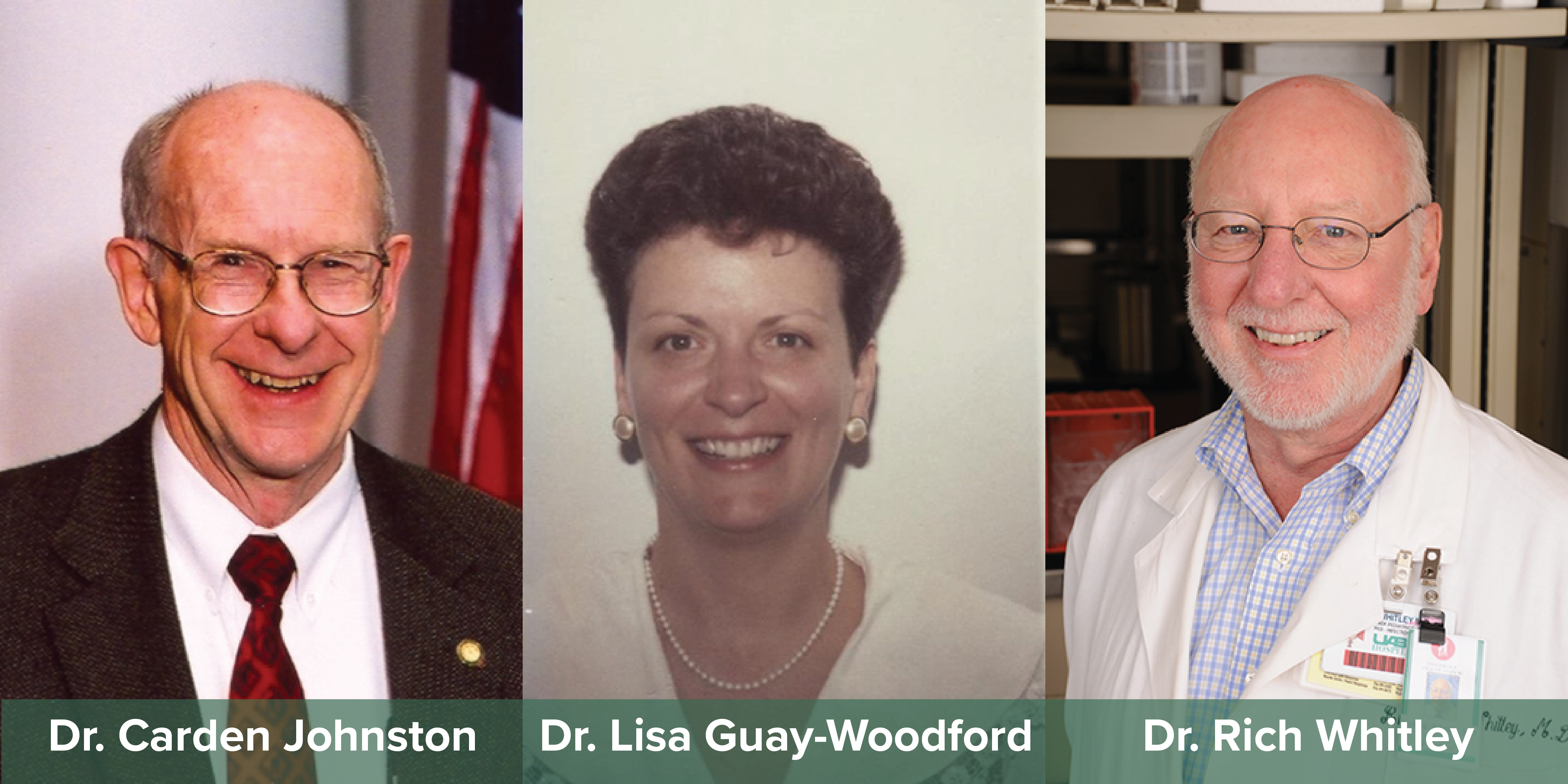
The success and recognition of the faculty continued to grow.
Dr. Carden Johnston became President of the American Academy of Pediatrics in 2003.
Dr. Lisa Guay-Woodford became the President of the Society for Pediatric Research in 2004.
Dr. Rich Whitley became President of the Infectious Diseases Society of America in 2006.
-
Training Programs Success
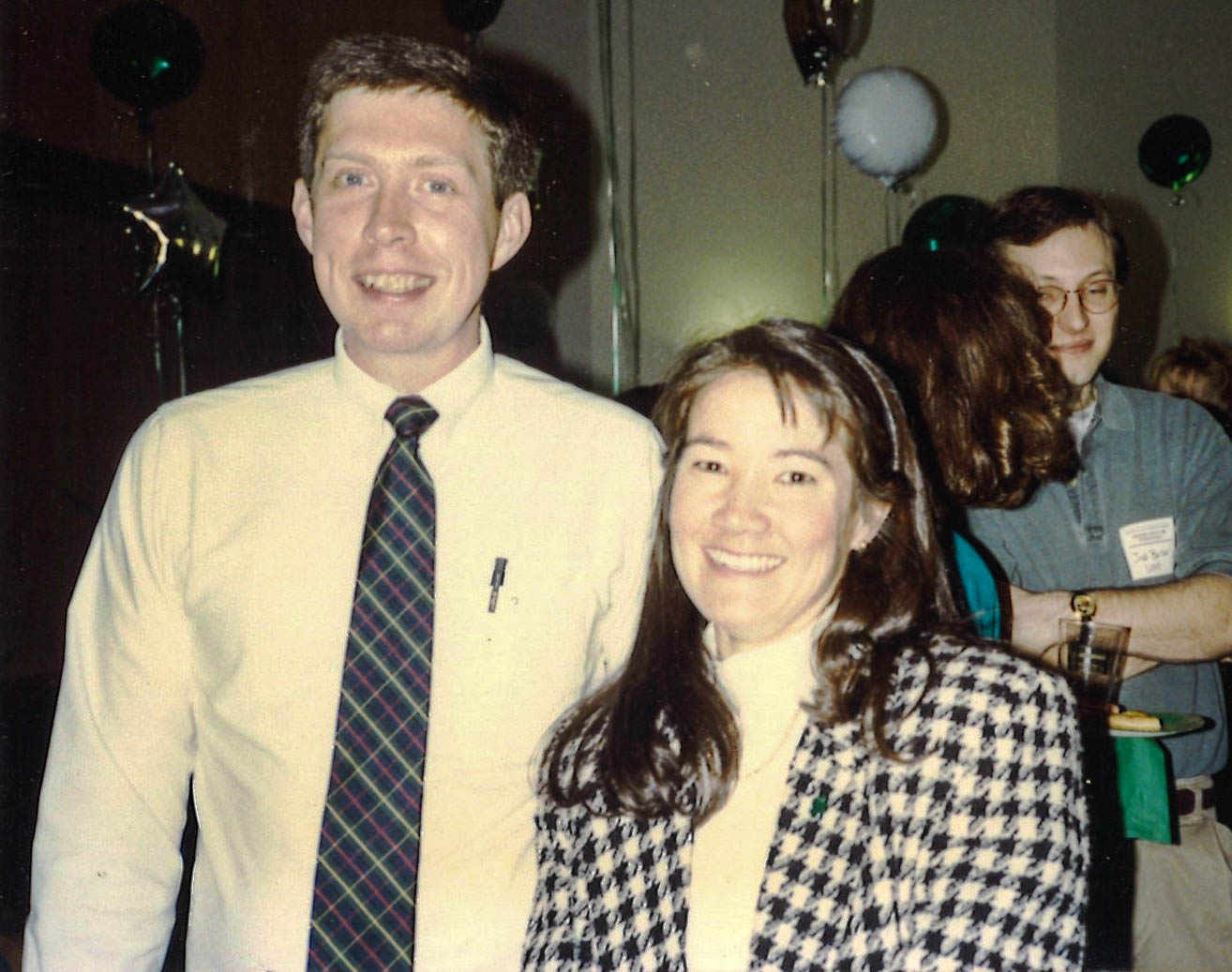
Very important to the department was the role of Drs. Michele H. Nichols and Raymond G. Watts as the Directors of the Residency Training Program. Dr. Nichols was in the Division of Emergency Medicine and Dr. Watts in the Division of Hematology/Oncology. In the US News and World Report of 2001, the department ranked 19th among all pediatric training programs.
The residency training program expanded in 1993 by establishing the Combined Medicine/Pediatrics program in which residents complete two years in each specialty, and at the end can seek board certification in both specialties. It quickly grew to four residents per year and has achieved excellent results based on board certification scores and employment opportunities or additional training opportunities available for the graduates. Dr. J.R. Hartig became the director of the combined training program in 2004.
Pediatric Subspecialty Training
As part of the “Grow Your Own” program, the establishment of subspecialty fellowships gained momentum as graduating fellows became prime candidates for faculty recruitment. From a modest start in the early nineties with four to five fellows graduating every year, the program grew to 30 fellows by the year 2000, 40 fellows by 2005 and 50 fellows by 2010. In order to expand and attract good candidates, we obtained and maintained accreditation from the ACGME for 16 subspecialties.
-
2006- Pediatric Simulation Center is Established
In 2006, the Pediatric Simulation Center was established at Children’s Hospital. It has become a first-class tool for training residents and staff by simulating emergency situations and imparting the necessary skills to improve patient management. Drs. Nancy Tofil and Marjorie Lee White were the leaders behind this initiative and trained the wonderful team of nurses and staff. In subsequent years Dr. White migrated to the UAB simulation center and Dr. Tofil concentrated on the development of our center. The success of this initiative can only be judged as spectacular on the basis of the originality and diversity of the simulation scenarios and the thousands of learners who participate every year to acquire or refine their skills. In addition to the traditional training in simulated lumbar puncture, endotracheal intubation, resuscitation, central venous line placement and peripheral IVs, learners are exposed to simulated cross cover and handoff scenarios, simulated forensic evidence gathering in child abuse, response to codes in challenging locations within the hospital and parking decks and many others. Many of the projects are funded by the Founder’s Fund and Cunningham programs and are performed in the simulation center by residents and medical students supervised by pediatric faculty mentors.
-
2006- Founder's Fund Endowment is Established
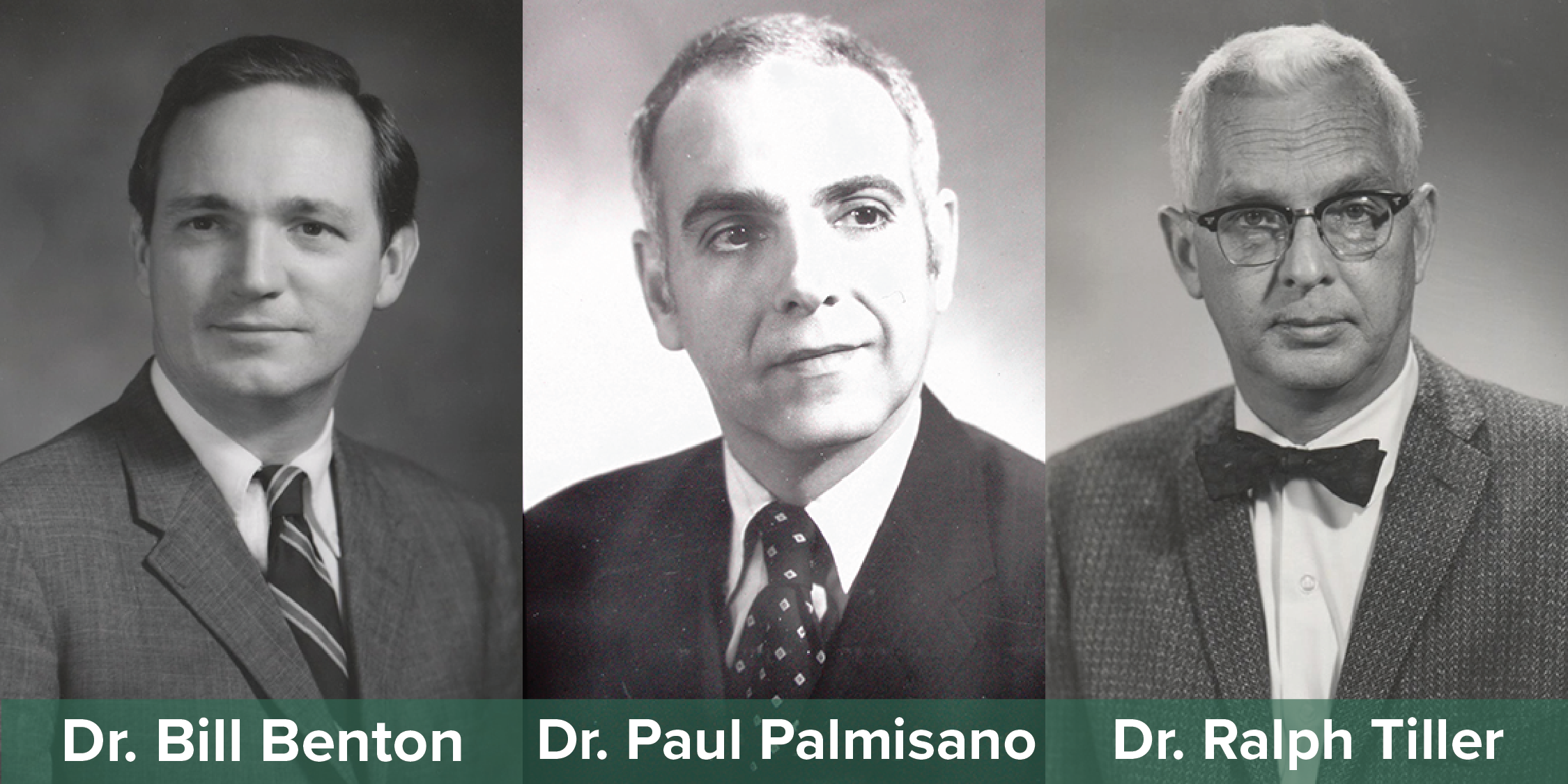
The Founder’s Fund Endowment was developed in partnership with Children’s of Alabama in 2006 to honor three prominent former faculty members: Drs. Ralph Tiller, Paul Palmisano, and Bill Benton. This program was designed to specifically benefit the Pediatric Residency Program. The monies raised are held in an endowed account by Children’s of Alabama in the Kaul Pediatric Research Institute. Founder’s Fund grants are available every May for new innovative education, clinical research, quality improvement or outcomes research that focus on residency education and advocacy. Approximately 10-12 grants are awarded each year in the amount of approximately $1,000 per year. It is a competitive process under the direction of the residency program directors. Successful applications have included: breaking bad news, simulation-based management of DKA, evaluation of intranasal lidocaine, improving breast feeding, smoking cessation, counseling genetic disorders, asthma guidelines for interns, simulated forensic evidence collection training for acute sexual assaults, simulated lumbar puncture training, teaching (simulation) placement of femoral CVL, integrating advocacy into residency and many others.
Several of these projects have resulted in significant advances in the manner by which we care for patients, patient and family education, training for medical students and residents and advocacy. At least ten projects have led to presentations by residents and their mentors at national and regional academic meetings (SPR/APS, SSPR, AAP).
-
2007- James Dearth Retires as CEO of Children's
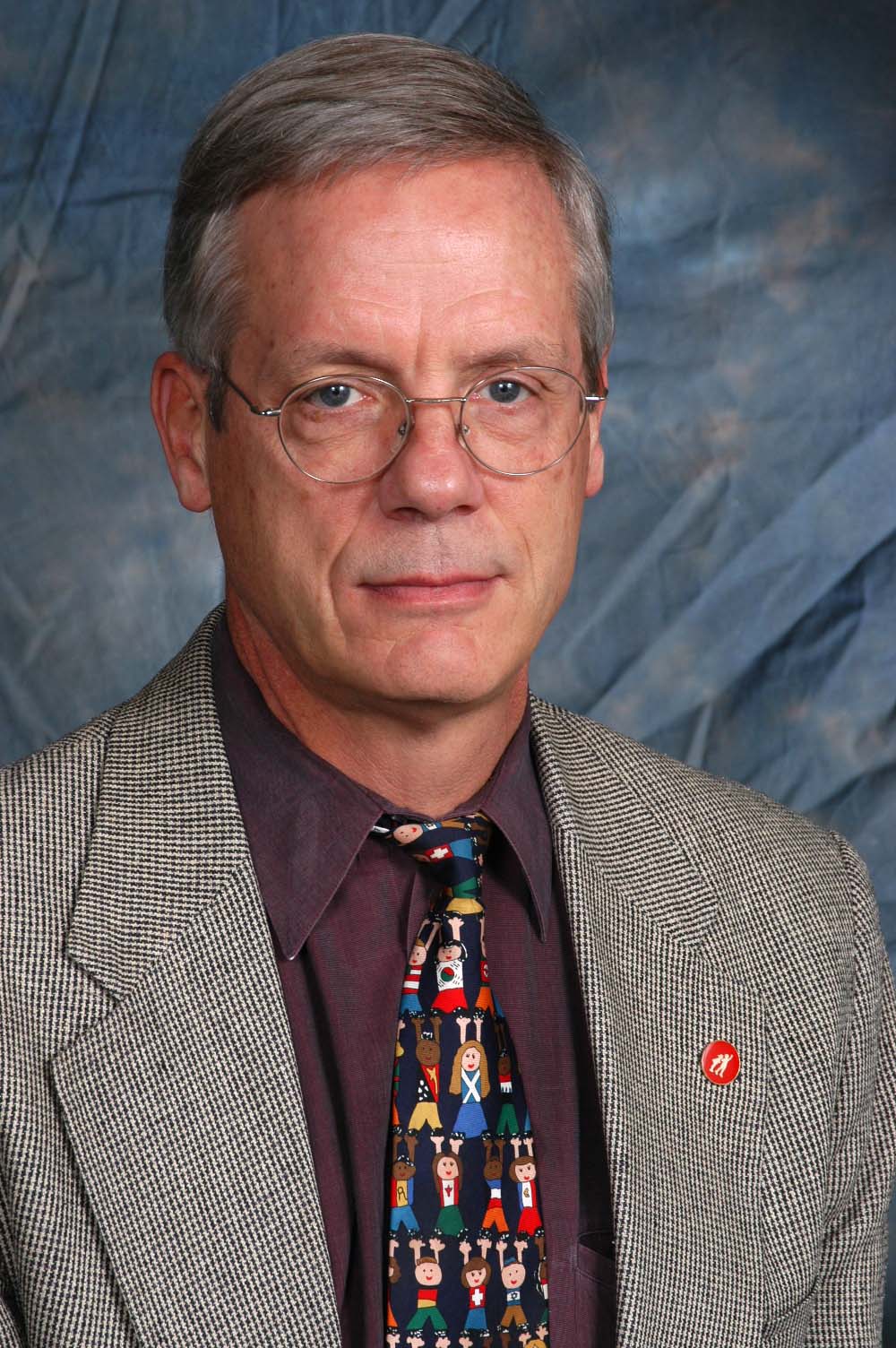
Jim Dearth joined the faculty of the Department of Pediatrics as a hematologist-oncologist in 1979. He had completed his residency and subspecialty training at the Mayo Clinic. His strong interest in administration led him to donate a significant amount of time to hospital administration, and, in 1985, Dr. Jim Dearth became the Medical Director of Children’s Hospital. Two years later he was appointed Chief Executive Officer by the Board of Trustees. Nationally he was recognized as a strong leader for his ability to bridge an administrative role and still maintain his clinical practice. As a physician in charge of the hospital he was well aware of the challenges, obstacles and the superb opportunities that lay ahead for the hospital and the department. In 2007, after more than 20 years of leadership, he announced his retirement. He was succeeded by Mike Warren, a very successful business leader who served on the Board of Trustees of Children’s Hospital for more than 20 years.
Photo credit: Children's of Alabama
-
2007- Russell Cunningham Memorial Research Scholarship is Established
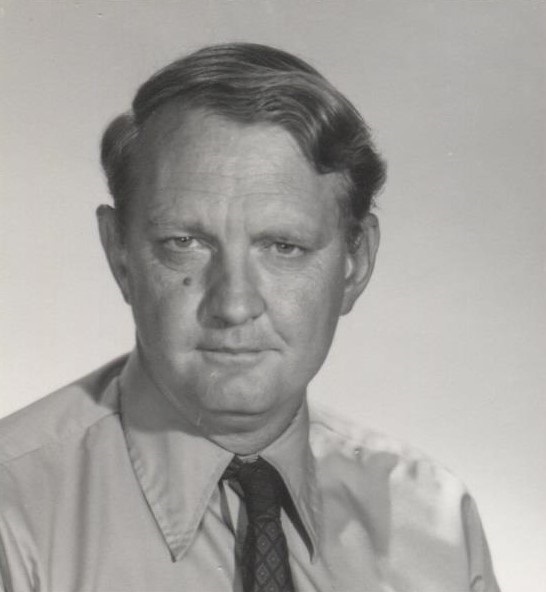
The Cunningham Scholarship was established in 2007 to honor Dr. Cunningham, the former Director of the Division of Endocrinology and Pediatric Clerkship Director. The goal of the program is to attract UAB medical students who are interested in academic pursuits during the summer. Two awards in the amount of $4,000 each are given each year after a competitive selection process. To date, 25 awards have been granted. Students select their mentors and are tracked for ultimate career paths.
-
2007- Pediatric Rheumatology Clinic Opens at Children's Hospital
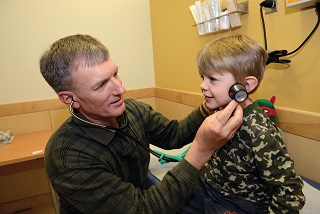
One of the most glaring deficiencies in the Department of Pediatrics was the lack of a stable pediatric rheumatology program. Dr. Joe Butler, who trained in pediatric rheumatology at the NIH, led the service for a brief period before his resignation in 1988. In the year 2000, Dr. Polly Ferguson, a board-certified pediatric rheumatologist was recruited from the University of Virginia. Unfortunately, she resigned her appointment to return to Iowa to help elderly parents. For years there were no board-certified pediatric rheumatologists in the entire state of Alabama. The national shortage of such specialists was particularly critical in our geographical area.
The rheumatology clinic was staffed primarily by adult rheumatologists from the UAB program. Dr. Louis Heck was the director of the program from 1980 until the year 2000. Upon his departure, Dr. Prescott Atkinson, a member of the Division of Immunology, assumed the responsibility for pediatric rheumatology before and after Dr. Ferguson’s tenure.
The absence of pediatric rheumatology had to be quickly addressed. A plan was developed by partnering with the Arthritis Foundation of Alabama who committed to raise $1 million. Further, the Children’s Hospital of Alabama committed $500,000 if matched by UAB and agreed to the construction of a state-of-the-art clinic and an infusion therapy unit. Soon a $2 million endowment was established and a major recruiting effort was mounted. Dr. Randy Cron and his colleague, Dr. Tim Beukelman were recruited from the Children’s Hospital of Philadelphia. Dr. Cron was a nationally renowned pediatric rheumatologist with a successful research background, excellent clinical training and a proven mentor. For these reasons he was able to recruit Dr. Beukelman as his junior partner. Mr. Ted Kennedy, a very successful Birmingham businessman, played a key role in the recruitment of Dr. Cron and later contributed funds to establish an endowed fellowship program for the division.
The faculty and many families with children with rheumatologic conditions were delighted with the news. On September 10, 2007, the new Division of Pediatric Rheumatology Clinic at Children’s Hospital opened its doors in a brand-new clinic facility.
The Division of Pediatric Rheumatology has become very successful. The faculty has grown to six plus one fellow per year of training. The division provides state of the art clinical care to all patients in Alabama. A satellite clinic operates in Mobile, Alabama, with monthly visits by a faculty member. In addition to the more typical rheumatologic conditions, the group has developed research programs and clinical expertise in such areas as macrophage activation syndrome, temporomandibular joint arthritis, juvenile spondyloarthropathy and several programs assessing safety and efficacy of therapeutic interventions. The national visibility of the faculty is outstanding, and the faculty record of invited lectures and scientific publications is equally remarkable. Besides Drs. Cron and Beukelman, current faculty members include Drs. Melissa Manion, Mathew Stoll, Peter Weiser and Emily Smitherman.
-
2008- Bridge Connecting Children's Hospital to UAB Hospital Opens
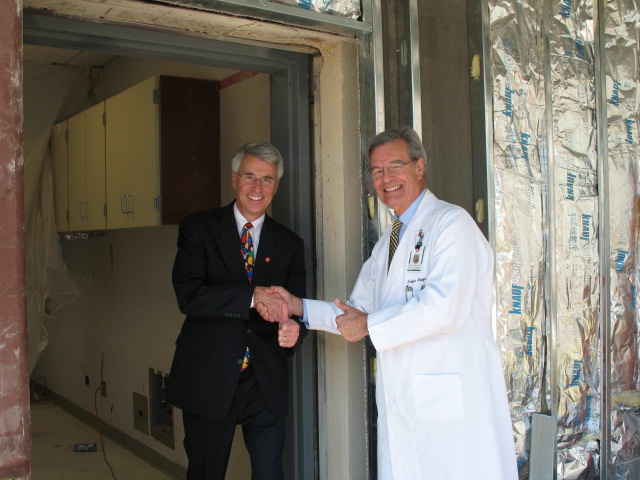
After several years of deferral, the connecting bridge from Children’s Hospital to UAB Medical Center was completed in 2008. The need for the bridge was based on the more than 170 critical care transports a year between the two hospitals at an annual cost of over $200,000. In addition, the bridge provided access for a large number of faculty (pediatric and others), staff and trainees who worked in both institutions.
Photo credit: Children's of Alabama
The 2010s
-
2010- Women's and Infant Center Opens
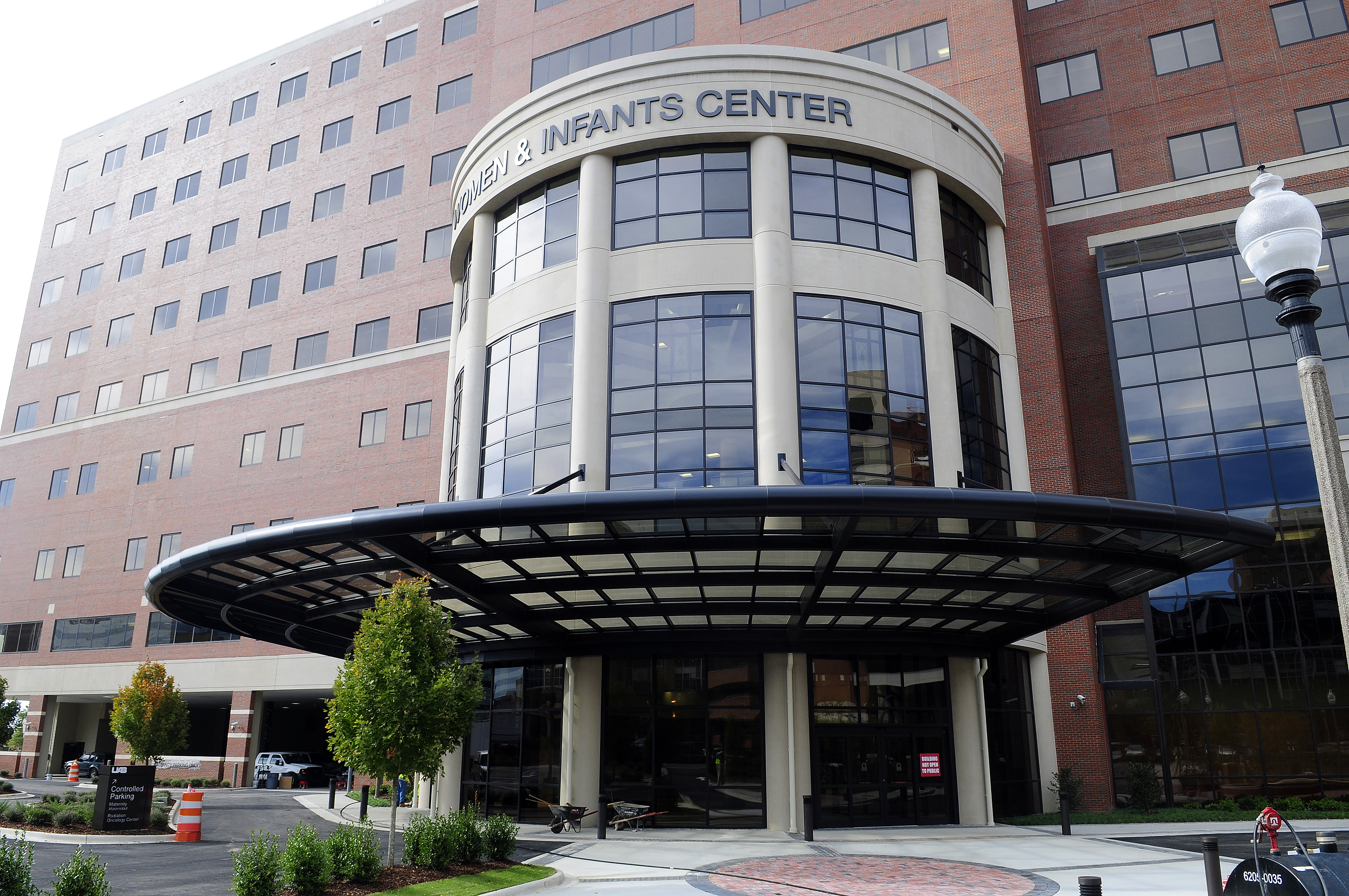
With the opening of the Women and Infant Center (WIC) in 2010, the Division on Neonatology finally moved to new space with a capacity for 124 neonates. The neonatology and pediatric cardiology faculty groups, plus the ambulatory clinic for cardiology, were also relocated to the WIC in very close proximity to Children’s Hospital. With the completion of the WIC, and the new Children’s Hospital (Benjamin Russell) in 2012, bridges seamlessly connecting UAB Hospital and Children’s Hospital became available and improved physician and patient movement. This connectivity allowed for the final transfer from UAB Hospital to Children’s Hospital of the pediatric cardiovascular center and all pediatric transplant programs. The unification of all pediatric services was finally complete after 44 years.
Photo credit: UAB
-
2011- Children's Celebrates 100 Years of Pediatric Care

In 2011, Children’s Hospital celebrated a century of pediatric care and service to children. In that year the number of outpatient visits surpassed 630,000 and admissions more than 14,000.
Photo credit: Children's of Alabama
-
2012- Benjamin Russell Hospital for Children Opens

In 2008, Children’s announced the $100 Million “Keeping Promises” capital campaign for a 750,000 square foot expansion of the hospital. The campaign concluded in 2009, two years earlier than expected, raising more than $110 million. The largest contribution of $25 million came from Ben and Luanne Russell, and the new building expansion was named the Benjamin Russell Hospital for Children in honor of Mr. Russell’s grandfather.
In August of 2012, the Benjamin Russell Hospital for Children opened its doors. The new hospital is bridged to the Children’s Harbor Building, Children’s Park Place and the UAB Women and Infant Center. The 12-story building exceeds 760,000 square feet and the number of licensed beds increased to 332, plus 48 neonatal intensive care bassinets.
A note of interest is that the helipad on the roof of the new hospital is large and strong enough for a “Black Hawk” helicopter landing, the kind used by the National Guard during disasters.
Photo credit: Children's of Alabama
-
2013- Dr. Stagno Announces Retirement
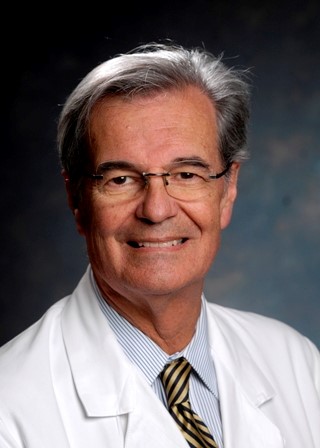
After the search for a new dean at the Medical School came to a successful completion with the appointment of Dr. Selwyn Vickers, Dr. Stagno, after 25 years of service, decided to step down. His announcement in September 2013 was endorsed by the leadership of UAB, HSF and Children’s of Alabama with the commitment to engage a recruiting firm to conduct a national search, a process expected to last one year. Dr. Stagno agreed to continue serving as Chair and Physician-in-Chief until his replacement was in place.
Drs. Selwyn Vickers and Anupam Agarwal, Interim Dean, asked Dr. Lou Bridges, Director of the Division of Clinical Immunology and Rheumatology, and Dr. James Markert, the recently appointed Chair of the new Department of Neurosurgery to co-chair the search committee for the new chair and physician-in-chief.
The search, which resulted in many outstanding candidates from very prestigious institutions, brought a national level of visibility to the faculty, staff and to what UAB and Children’s promised to deliver, namely a strong leader who would advocate for children and provide leadership to grow to the next level.
As Dr. Stagno stepped down at the end of fiscal year 2014 the department financial statement indicated a total income of $99.4 million with $17.7 million generated by research and $58.3 million from clinical revenue. The department was ranked 17 in NIH funding. Other notable benchmarks are indicated in the chart below, which compares figures from 1988 and 2014 encompassing the 26 years of Dr. Stagno’s tenure as Chairman of the Department.
Also remarkable is the dramatic improvement in the depth of the clinical enterprise. While in 1988 there were major sections of pediatric subspecialty care missing or operating with only one physician, in 2014, with the exception of hepatology, all essential areas had been addressed and strengthened and this was formally rectified in 2017 with the addition of Drs. Leonis and Noel to complement Dr. Nogueira in pediatric hepatology.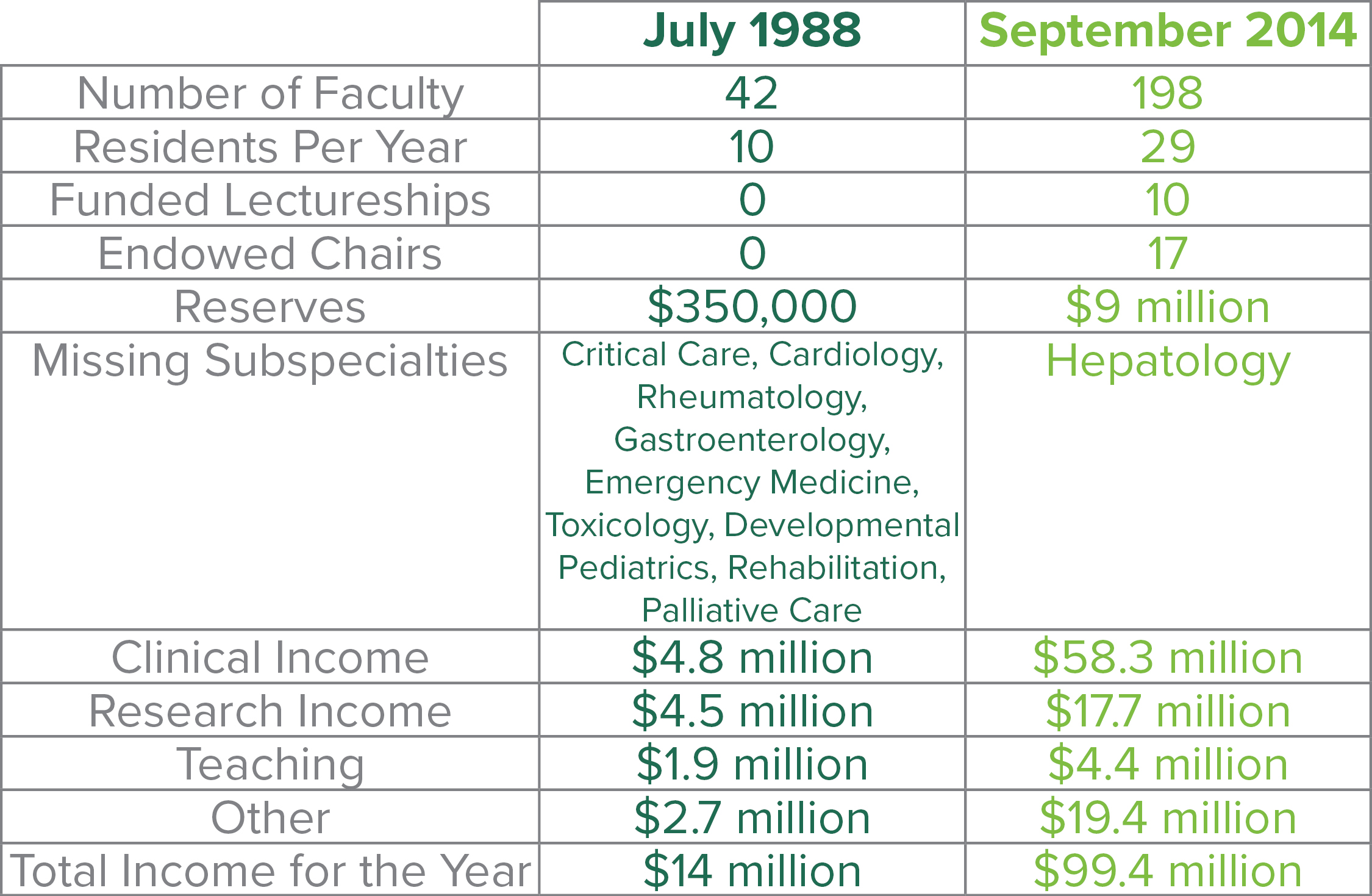
-
2014- Mitch Cohen Becomes Chairman
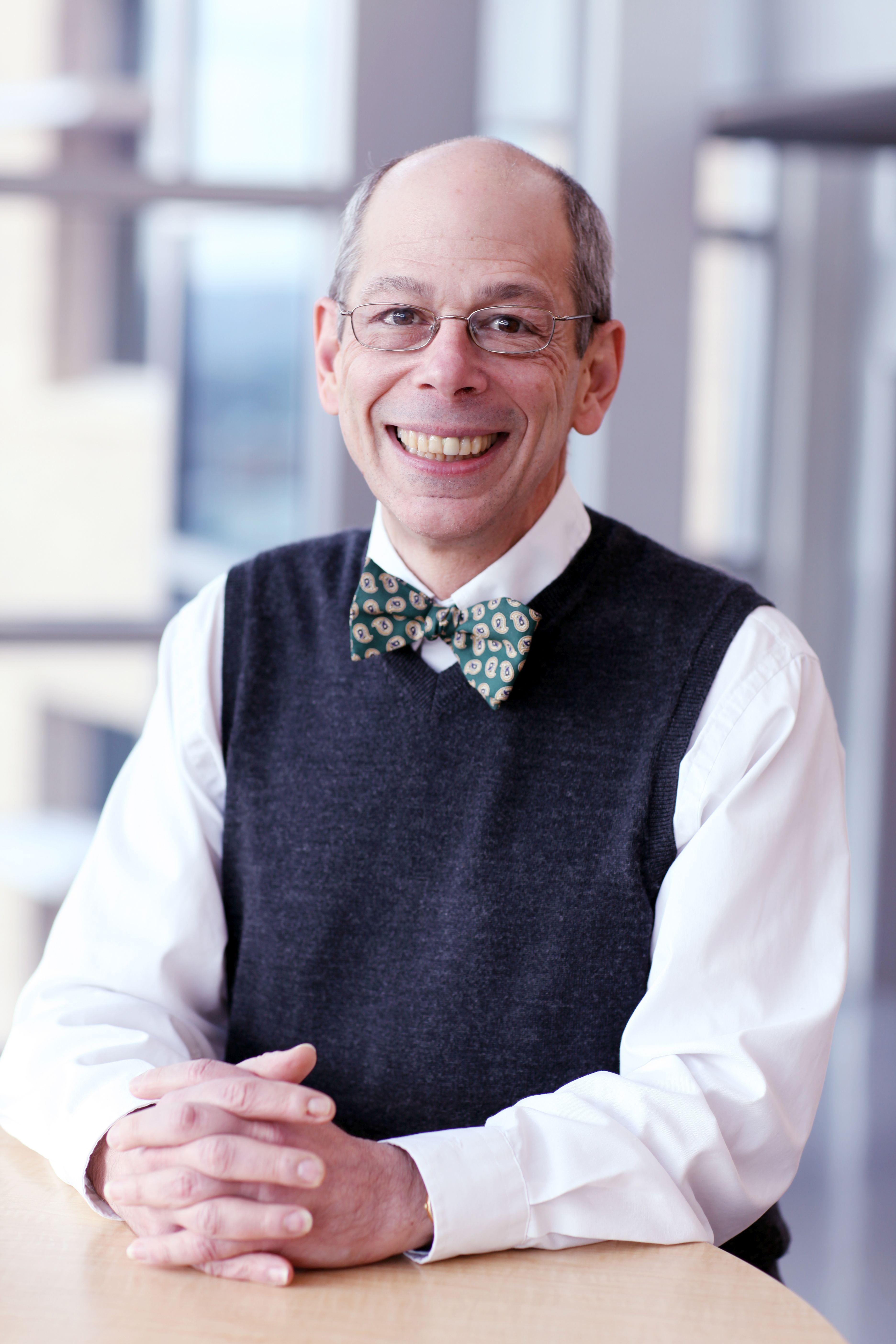
After an extensive and intense search Dean Vickers announced on June 16, 2014 that Dr. Mitch Cohen had been identified as the new chair of pediatrics and physician-in-chief at Children’s of Alabama with a starting date of September 1, 2014. “Dr. Cohen was recruited from Cincinnati Children’s Hospital, where he had built one of the most respected Division of Gastroenterology in the world. He was recognized for his grasp of the full mission required for an academic department chair, his willingness and ability to engage in depth with hospital leadership on continually improving the quality of patient care and outcomes, his experience recruiting and growing clinician scientists and supporting basic scientists and his long history in educating residents and fellows.”
Dean Vickers was very successful in negotiating with UAB’s President Watts, CEO of Health System, Will Ferniany, and CEO of Children’s of Alabama, Mike Warren, to secure a significant recruiting package that provided strong support for Dr. Cohen’s vision for the future of the department. The priorities were the expansion of the faculty across clinical divisions in order to provide timely access for subspecialty appointments, renewed efforts to increase NIH funding and the pursuit of academic excellence, strengthen the relationships with the community of private pediatricians across the state, and, finally, advocate for pediatricians at all levels from state government to national organizations (AAP, SPR, APS, AMSPDC) and major insurance companies.
2014 & Beyond
Building on Dr. Stagno’s success, Dr. Cohen has continued to grow the depth and strength of the faculty. By 2018, there were 241 faculty (50% women, 7% African American and 7% Hispanic) including several notable additions.
-
Growth of the Department
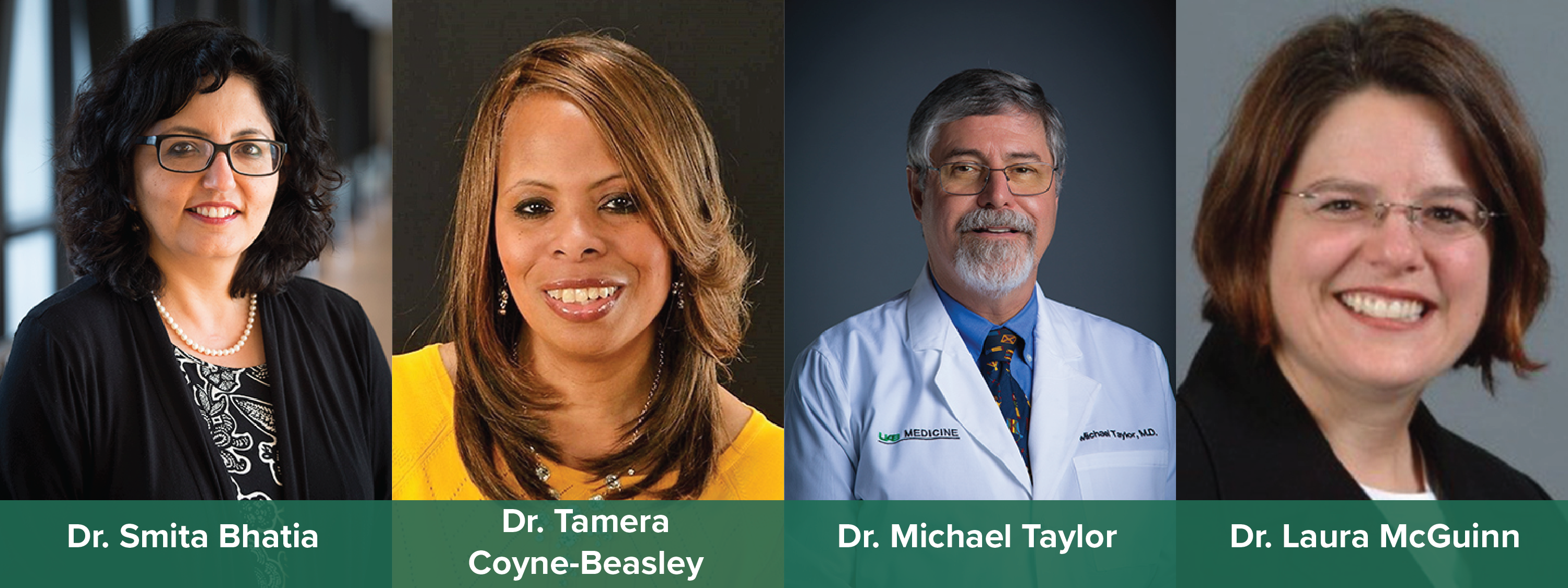
Since Dr. Cohen became chair there have been many notable additions to the faculty.
Dr. Smita Bhatia was recruited from the City of Hope, Duarte California, to lead the school wide Institute for Cancer Outcomes and Survivorship (ICOS), as well as serve as Vice Chair for Outcomes Research and Dr. Tamera Coyne-Beasley was recruited from University of North Carolina-Chapel Hill, North Carolina, to serve as Division Director of Adolescent Medicine and Vice Chair for Community Engagement. New divisions were created including separate divisions of Child Abuse Pediatrics with the recruitment of Dr. Mike Taylor from Medical University of South Carolina to lead this division, Adolescent Medicine (led by Dr. Coyne-Beasley) and Developmental and Behavioral Pediatrics with the recruitment of Dr. Laura McGuinn from the University of Oklahoma, to lead this division which had grown to five full time faculty.
Dr. Nancy Tofil succeeded Dr. Margaret Winkler as director of the Division of Pediatric Critical Care; Dr. Terry Wall succeeded Dr. Carolyn Ashworth as director the Division of Academic General Pediatrics and Dr. Santiago Borasino succeeded Dr. Jeffrey Alten as director of pediatric cardiac critical care which became a section of cardiology. Dr. Ray Watts retired as director of the Division of Hematology-Oncology, and became the chair of pediatrics at Louisiana State University.
The department expanded and/or added new subspecialty programs in existing divisions, i.e., hepatology, gastrointestinal motility, eosinophilic gastrointestinal disorders, inflammatory bowel disease, intestinal rehabilitation, feeding team, acute kidney injury, postural orthostatic hypotension, neonatal neuro-ICU, neuroimmunology, movement disorders, concussion, muscle diseases and transgender care. Eight divisions were ranked in US News and World Report and quality improvement programs are in place in each division.
-
Pediatric Endowed Chairs and Professorships
As of 2018, the number of endowed chairs has increased to 23 with seven chairs residing at UAB and 16 residing at Children’s Hospital. The goal of establishing at least one significant endowment for each division is close to reality.
-
Pediatric Research Office
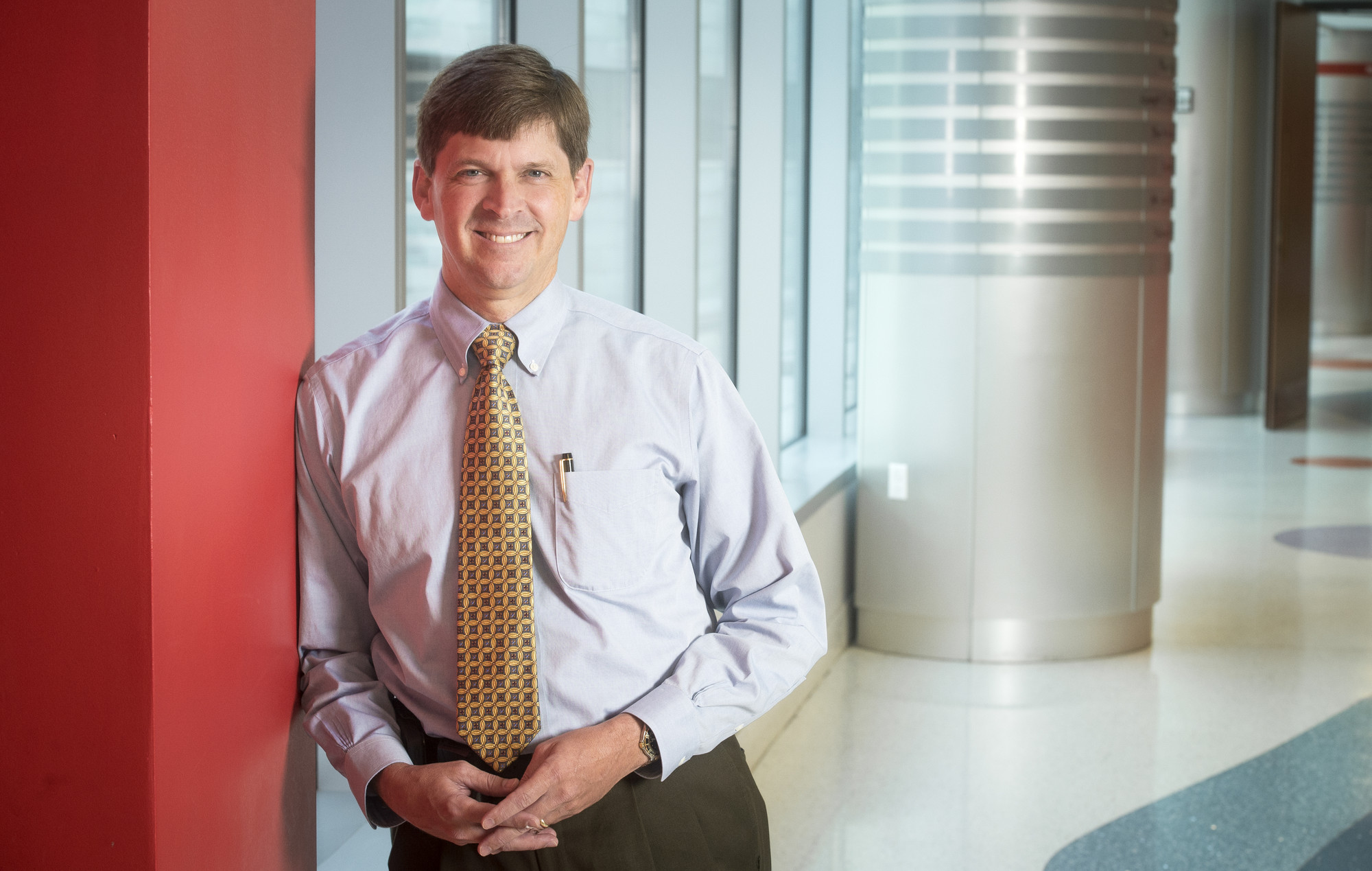
The Pediatric Research Office (PRO), led by Dr. David Kimberlin, was created to provide assistance to investigators conducting pediatric research by providing pre-award and post-award support. Dr. Kimberlin was also appointed vice chair for translational and clinical research. Extramural research support approximates $30 million and the department has maintained an NIH ranking for departments of pediatrics in the top 18. New faculty recruits are expected to bolster this ranking.
-
Office of Faculty Development
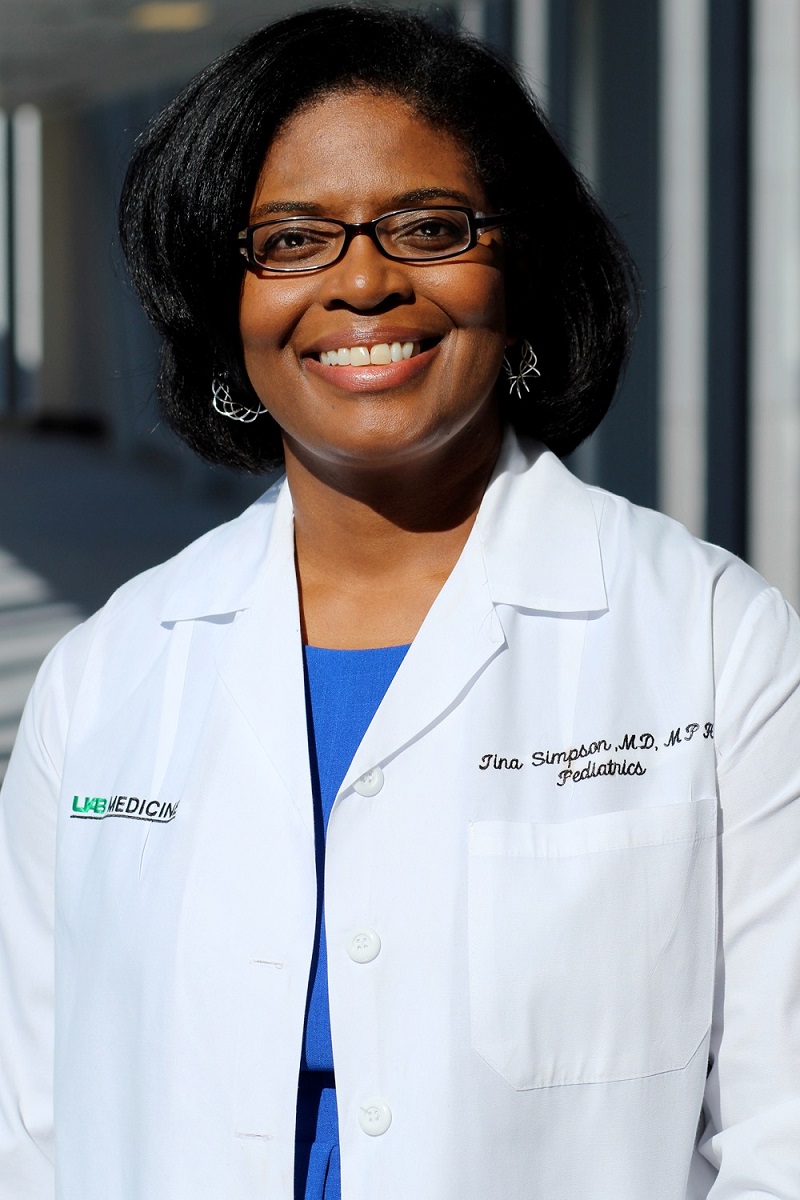
The Office for Faculty Development (OFD) was created to help faculty navigate their career decisions, become academically successful and maintain wellness; the OFD is led by Dr. Tina Simpson.
-
Expansion of Educational Programs
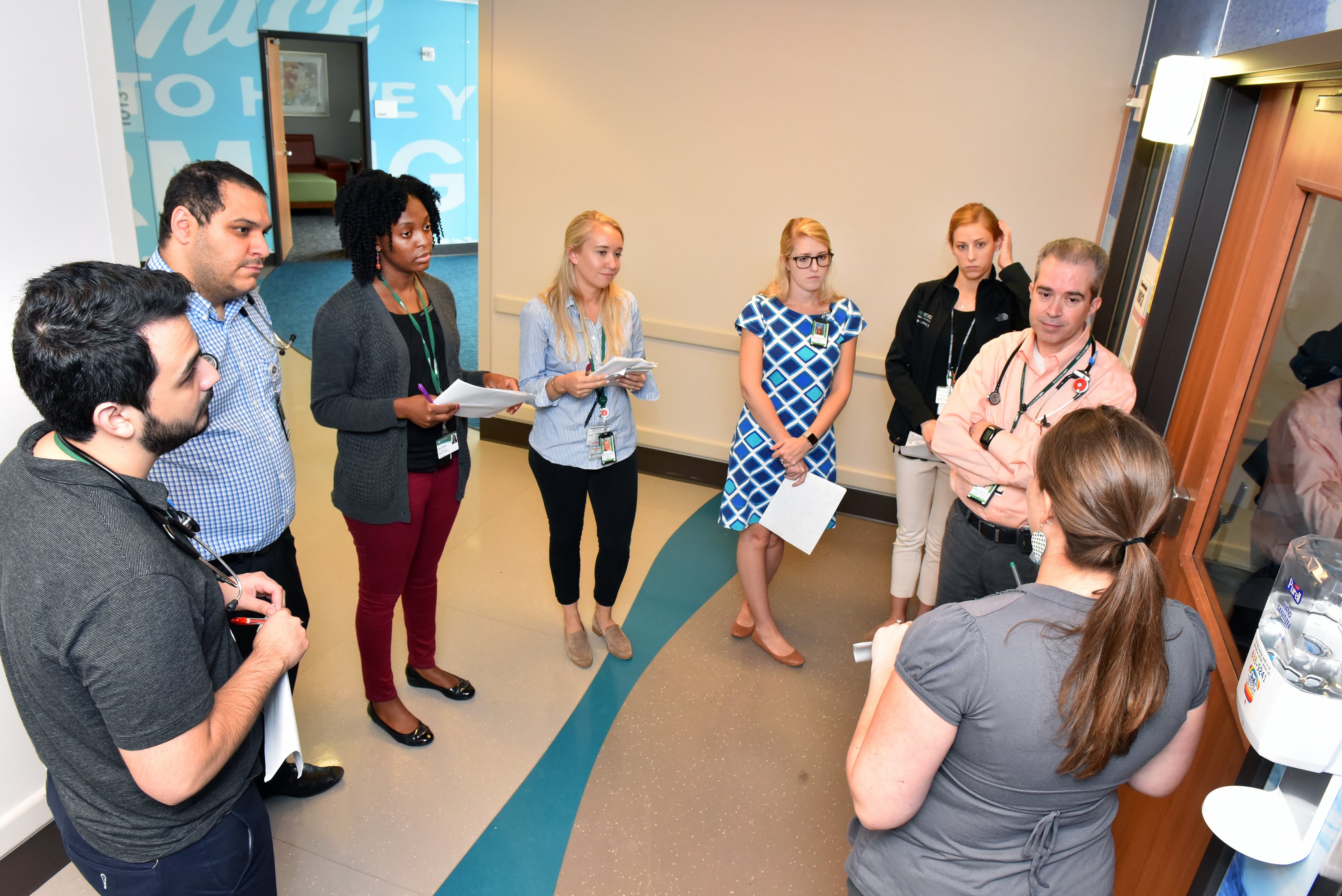
The educational programs have expanded to include 24 categorical interns, two child neurology trainees, one pediatric genetics trainee and four medicine-pediatrics trainees per year. Approximately half of the residency graduates go into primary care or hospital medicine positions and half enter subspecialty fellowship.
There are approximately 65 total fellows per year in nearly all ACGME approved fellowship programs; a cardiology fellowship began in 2015 and a number of fellowship programs have expanded including gastroenterology, endocrinology, and neurology. In addition to the Dixon Fellowships, the Chu Family Scholars now support educational endeavors for fellows who wish additional training. Approximately 75% of fellow graduate take a position in academic medicine; about half of these stay in Alabama.
A clinical affiliation agreement with Meharry School of Medicine provides training at Children’s of Alabama by Department of Pediatrics faculty for Meharry medical students. In addition, Dr. Will Sasser was appointed as a fourth year clerkship director to supervise experiences outside of the traditional third year clerkship. The latter is ably led by Drs. Hussein Abdul-latif and Stephanie Berger. Dr. Stagno and Dr. Berger serve as mentors in the UAB Learning Communities and see students through their four-year medical school experience as advisors, mentors and role models.


